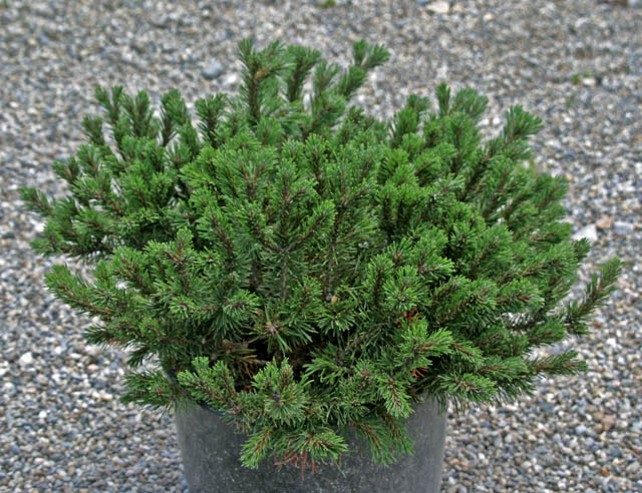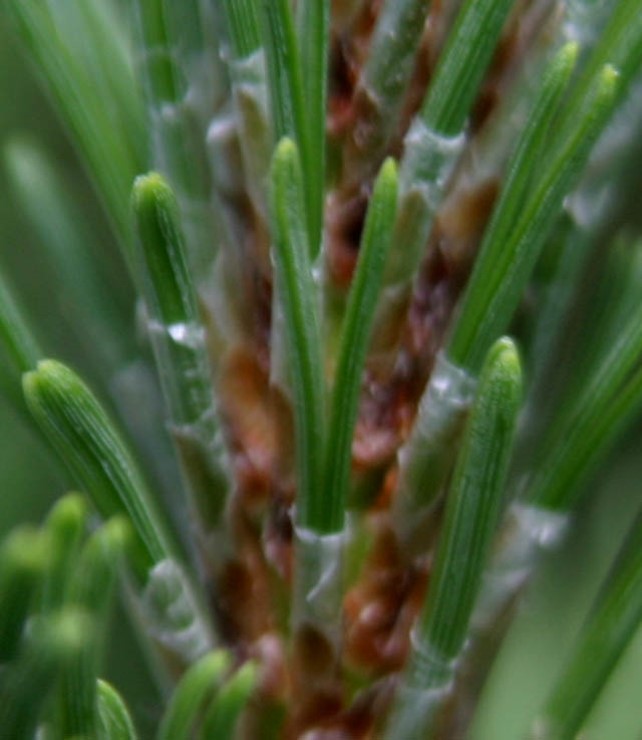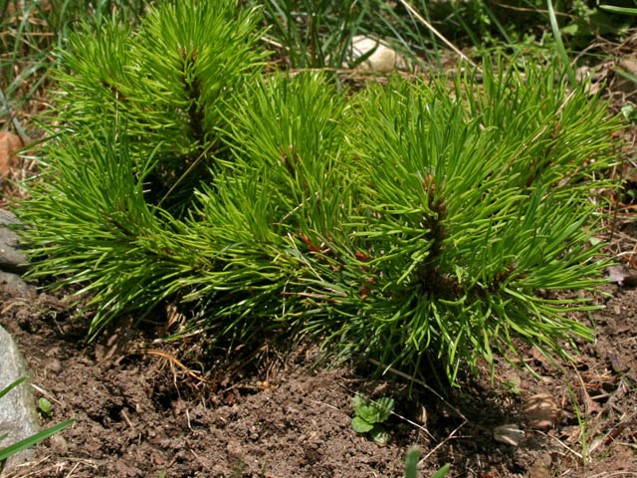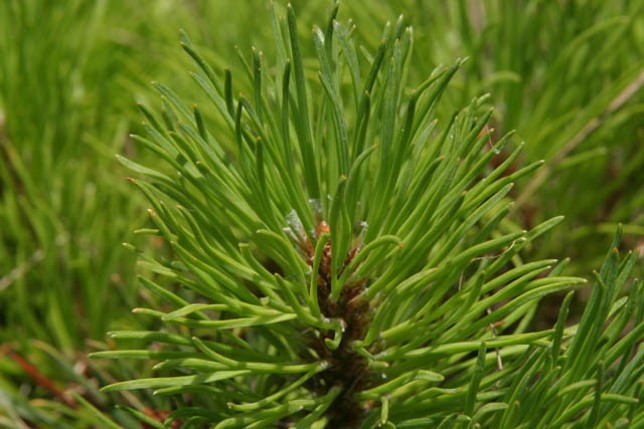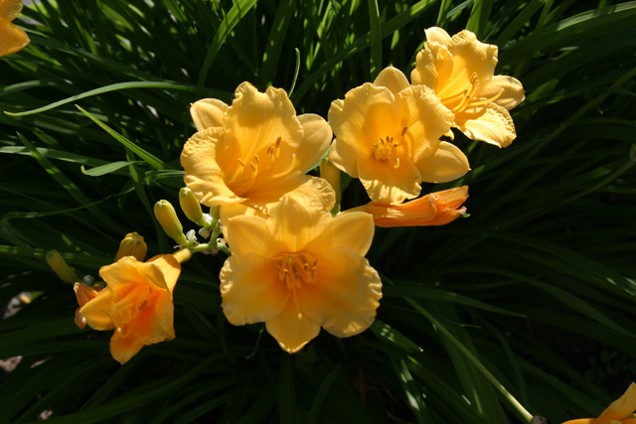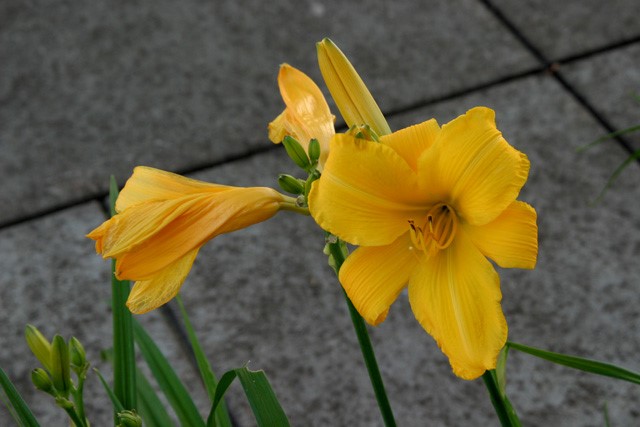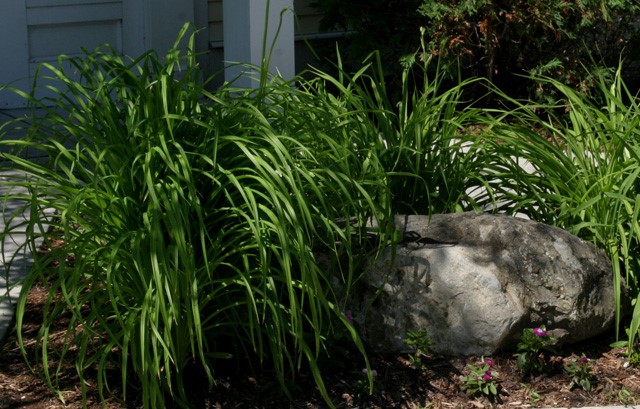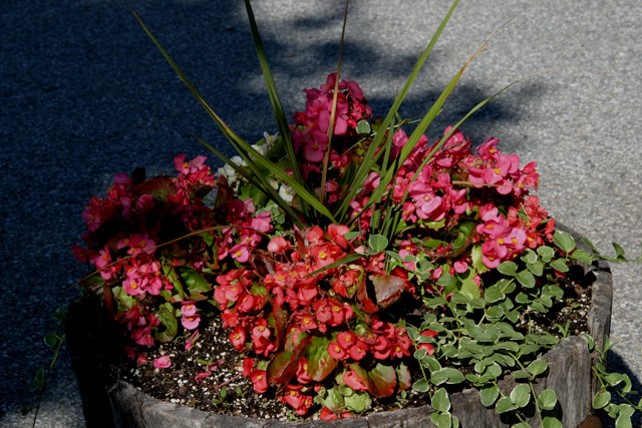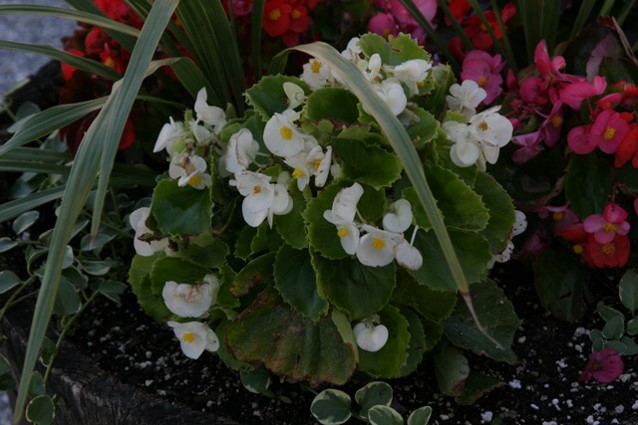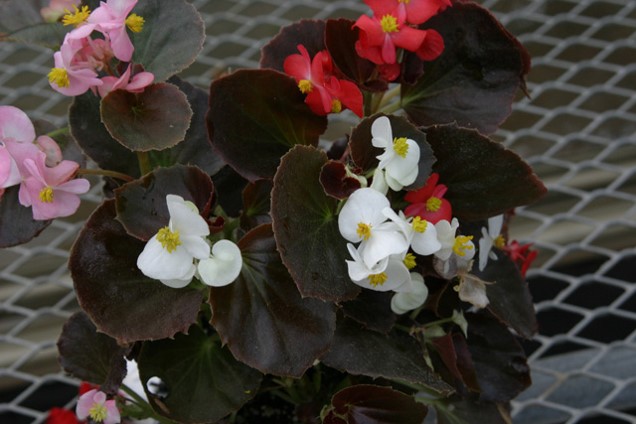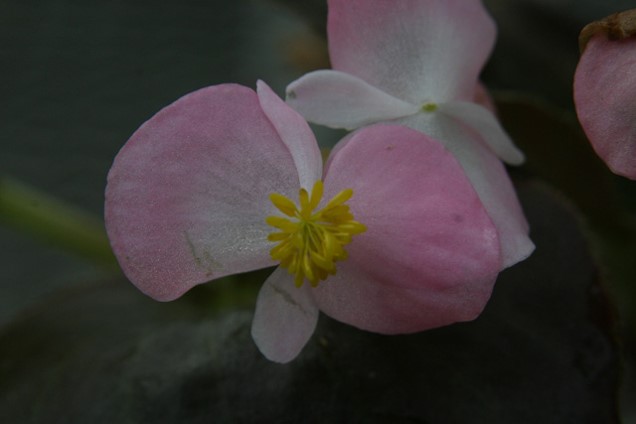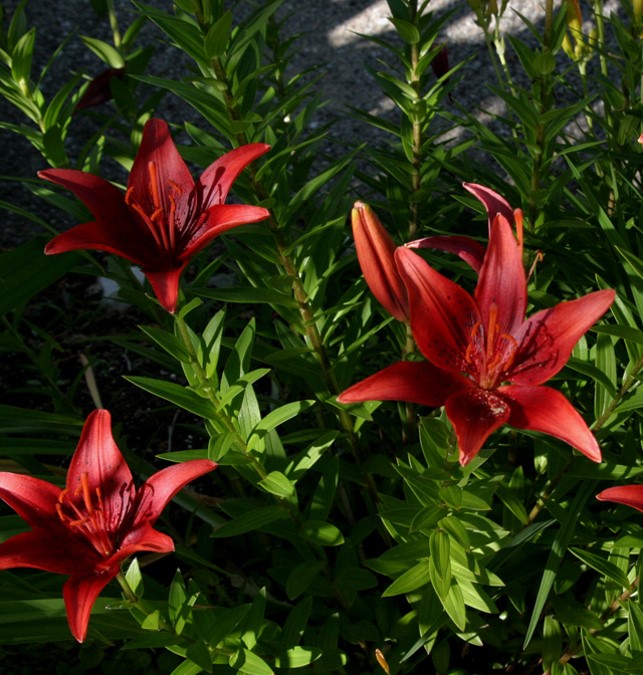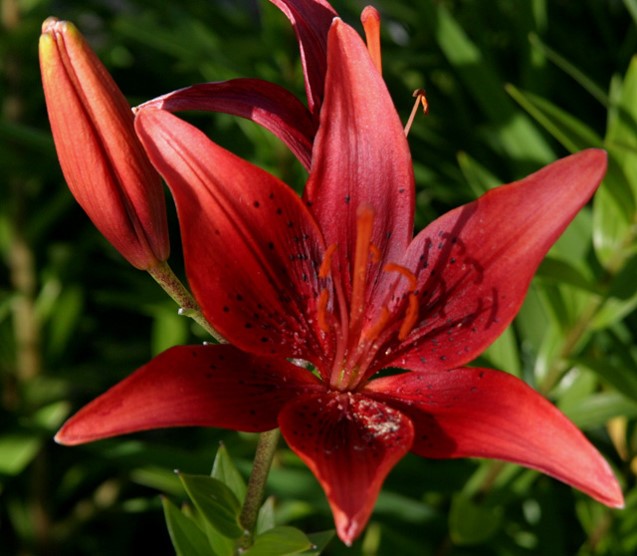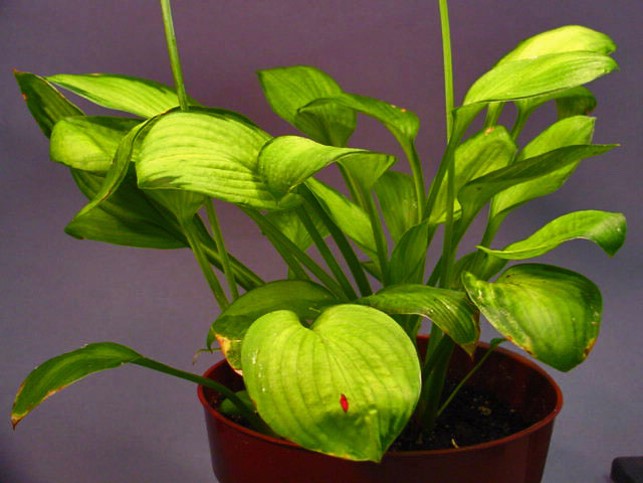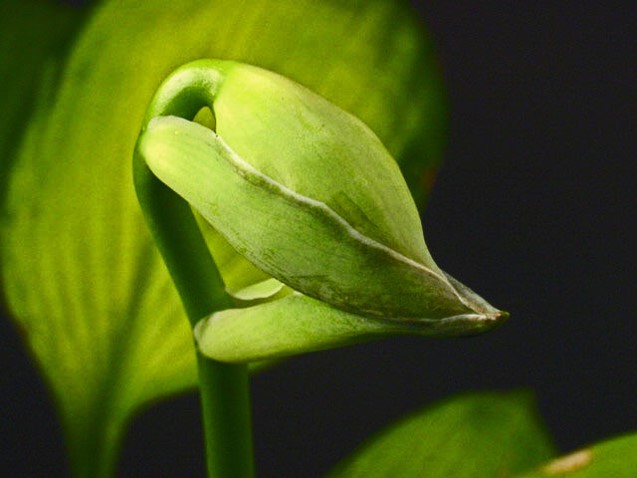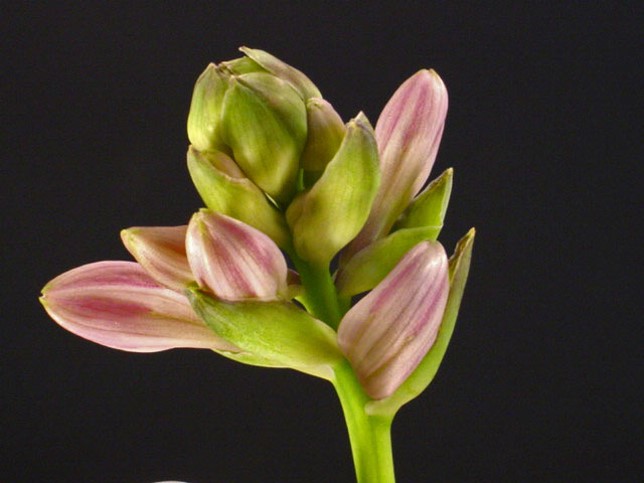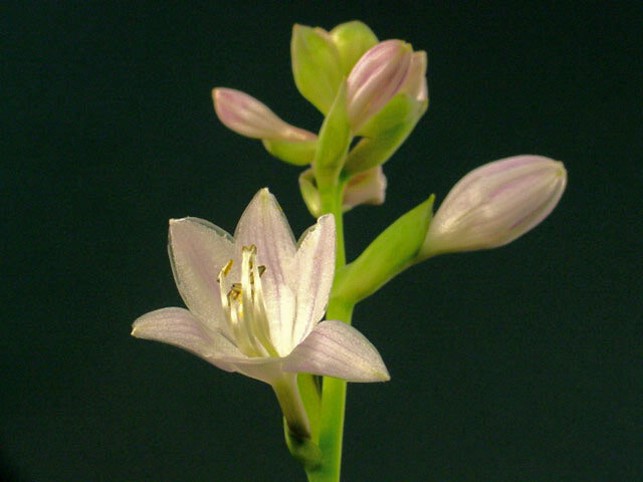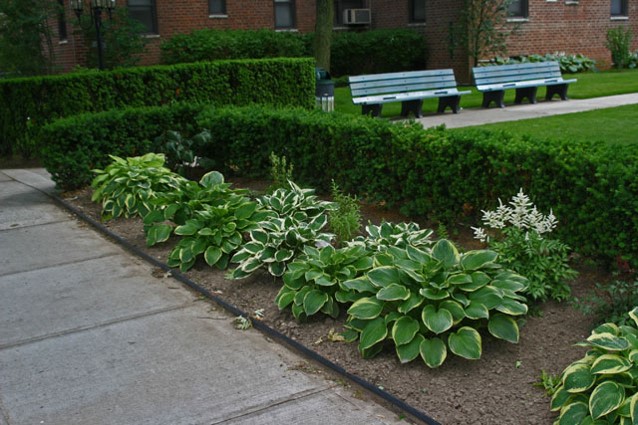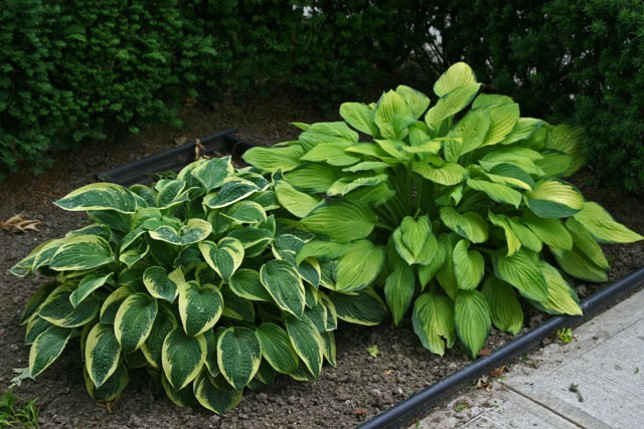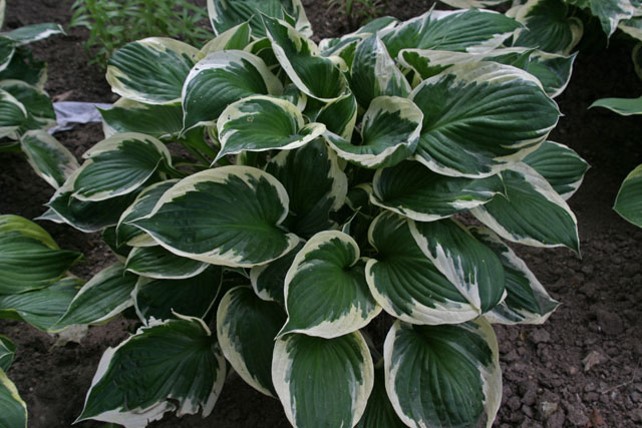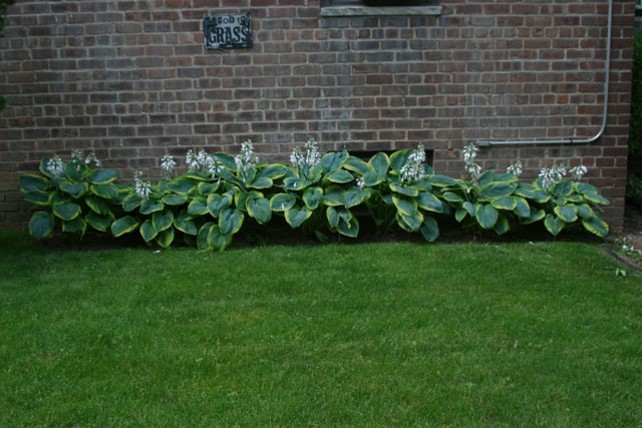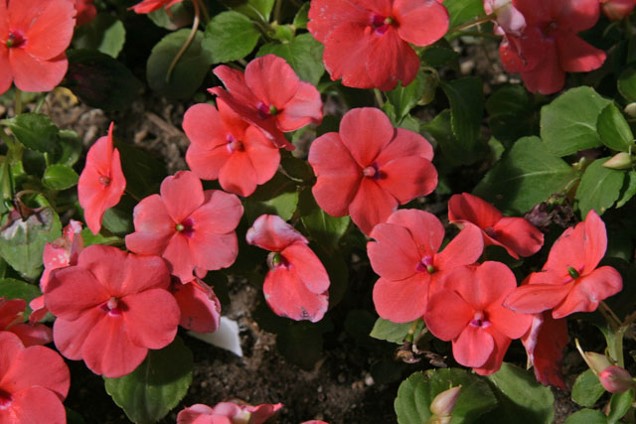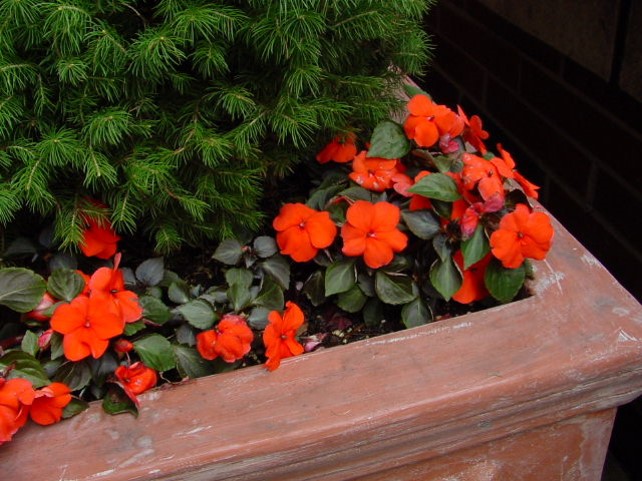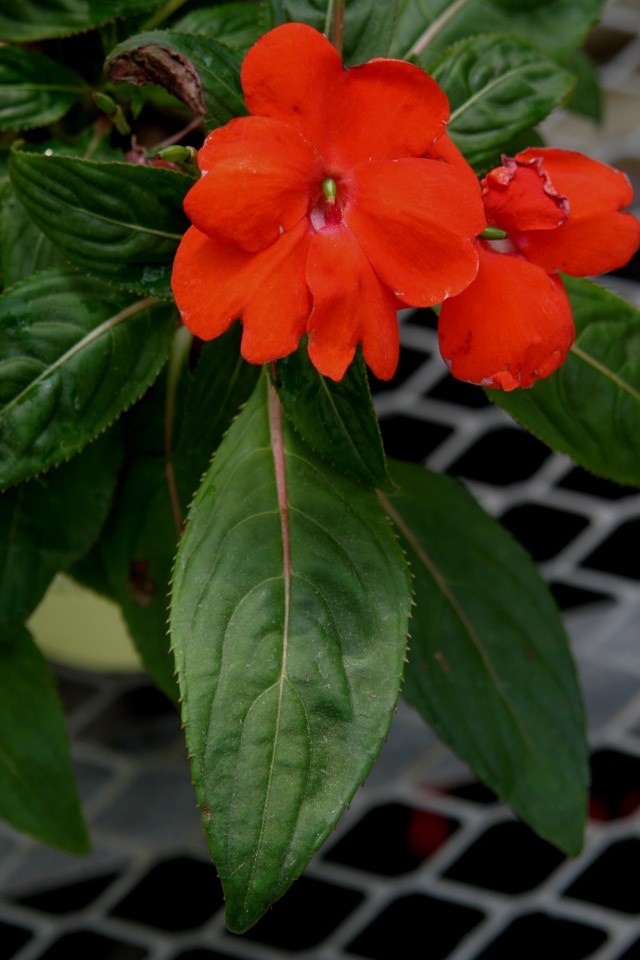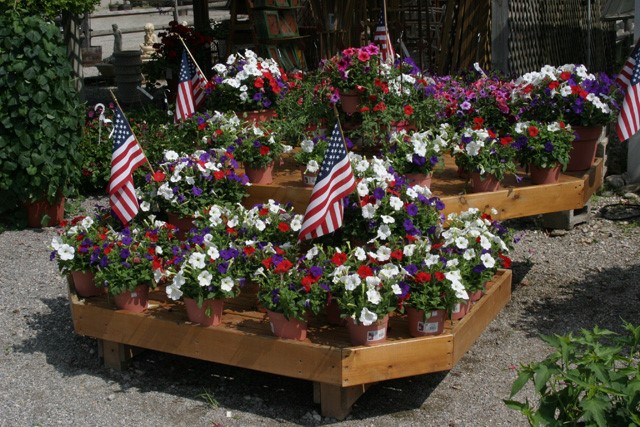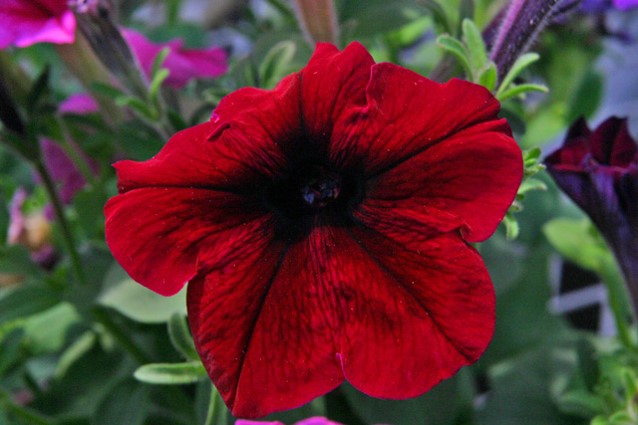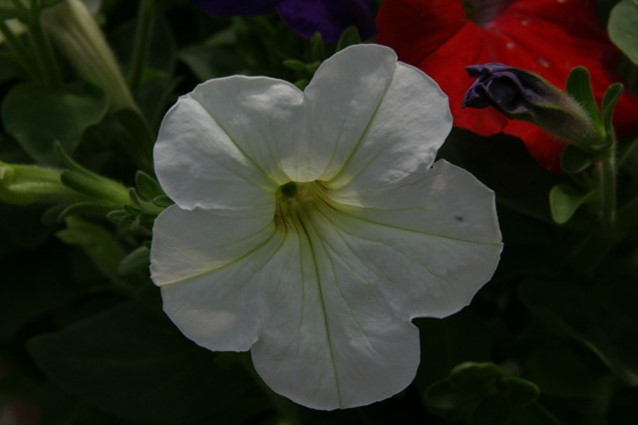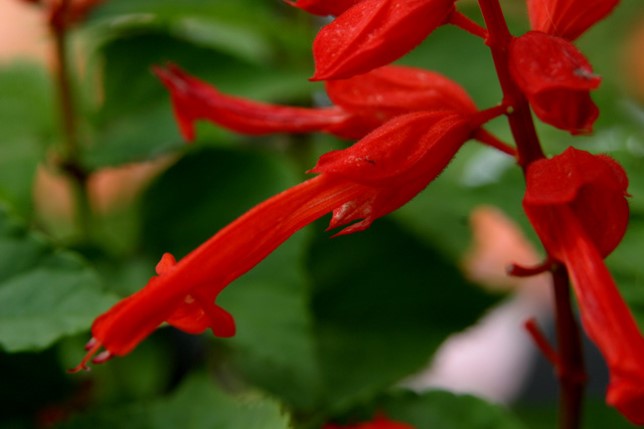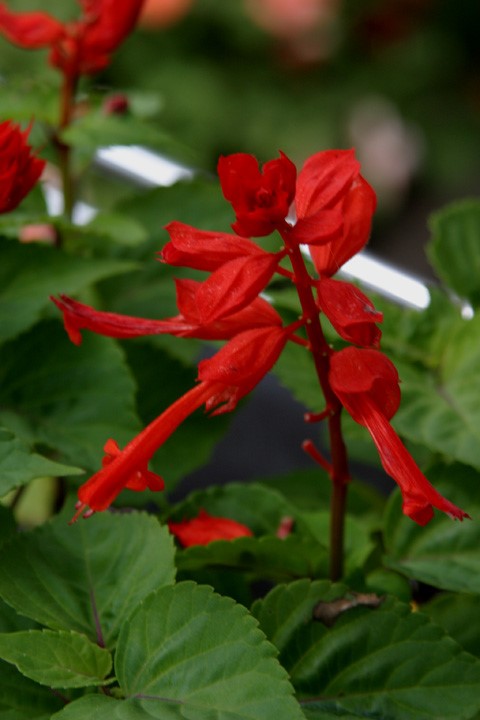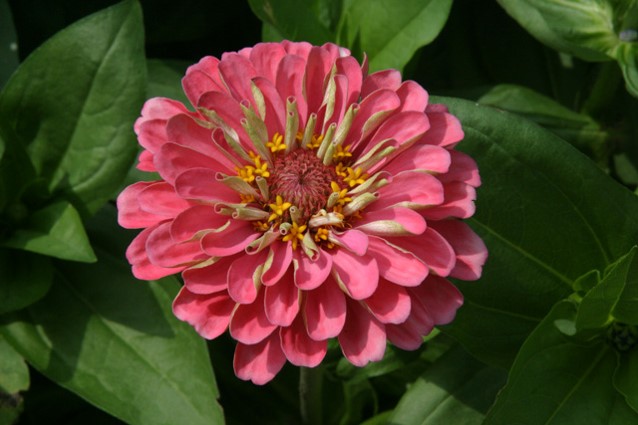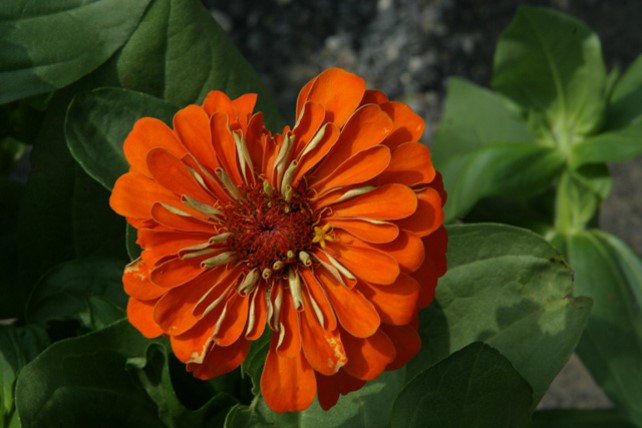What information is provided in these packets?
The tree shrub genera packet provides a general description, habitat and size, landscape value, leaves, flowers, fruit, buds, disease and insects, hardiness and range, and cultivars of tree shrub genera along with color photos and black and white drawings.
The tree/shrub sections are organized by “Scientific name” with their common name and family (in that order) also provided.
Within each section you will find individual tree/shrub information text, black and white drawings and color photos. Each section also provides individual pdf and powerpoint downloads to view the same information offline.
If you wish to download entire packets as one large pdf document to view offline go to:
- Full Collection Packet: Text with black and white drawings (52 pgs) (pdf)
- All Tree Shrub Genera Study images: Color photos (302 pgs) (pdf)
The annuals and perennials packet provides color photos.
The annuals and perennials sections are organized by “Scientific name” with their common name and family (in that order) also provided. Within each section you will find individual color photos. Each section also provides individual powerpoint downloads to view the photos offline.
If you wish to download entire packets as one large pdf document to view offline go to:
- All Annuals and Perennials study images: Color photos (82 pgs) (pdf)
Image Citations:
Unless noted otherwise, all color photos, and black & white drawings are under copyright owned by Dr. Roy McGowan and Mrs. McGowan.
Tree Shrub Genera Study images





GENERAL DESCRIPTION: This may be the most handsome of the firs because of its dense, uniform pyramidal form, layer look and black-green needles. It is native to Caucasus and Asia Minor but is very
adaptable to many landscape conditions. Best used as a specimen tree or in a grouping. Not for the small
landscape.
HABIT AND SIZE: 40-60′ in cultivation and up to zoo’ in nature. Linearly pyramidal with a strong, single,
tapering central stem. The branches bend down and up and end in a fan of smaller branches.
LANDSCAPE VALUE: Excellent in the larger landscape or as a border plant for the medium sized landscape.
LEAVES: 0.75-1.5″ long, rounded and notched at apex, directed forward and densely covering the branchlets, shining dark green on top with 2 white bands underneath. Marginal resin ducts are present and the midrib is sunken.
FLOWERS: Emerging in an axillary position in early spring from buds formed the previous season on branchlet of the year, surrounded at the base by involucres of enlarged bud scales. The staminate flowers are pendent on branches above the middle of the tree with yellow or scarlet anthers. The pistillate flowers are erect on the topmost branches with numerous 2-ovuled overlapping scales.
FRUIT: Cylindrical cones, 5-6″ long, reddish-brown with bracts that stick out and are reflexed.
BUD: Winter buds not resinous.
DISEASES AND INSECTS: Mostly disease free.
HARDINESS AND RANGE: Zones 4-6. Caucasus and Asia Minor.
CULTIVARS: Species only.




GENERAL DESCRIPTION: This may be the most handsome of the firs because of its dense, uniform pyramidal form, layer look and black-green needles. It is native to Caucasus and Asia Minor but is very adaptable to many landscape conditions. Best used as a specimen tree or in a grouping. Not for the small landscape.
GENERAL DESCRIPTION: This is an elegant and somewhat aristocratic small tree that is very desirable in the landscape particularly in medium to small gardens. The chief attributes are: the palmately lobed leaves that in some cultivars are highly dissected; the rounded or vase like growth habit; the opposite branching that gives the plant a layered look; the leaf colors that can range from light green to reddish purple; the brilliant fall color that is yellow to red; and, the winter silhouette with the smooth grey bark. There are cultivars that can become 40′ high and cultivars that have a weeping habit and are only a few feet high and very slow growing. All in all a staple in the array of landscape trees and shrubs.
HABIT AND SIZE: Generally 15-25′ high and equally wide but some specimens are as much as 40′ and others as small as 3′. The overall habit is rounded to broad rounded to vase like. It can have a single main trunk and be more tree like or be pruned to have a multi-stemmed trunk and be more shrub like.
LANDSCAPE VALUE: An extremely versatile plant that can be a perfect shade tree for a patio or small garden. The smaller cultivars can be kept pruned and used in miniature landscapes.
LEAVES: Oppositely arranged, simple, 5-11 palmately lobed 2-5″ long. There is a large range of dissection of the lobed from simple 5 lobed to highly dissected leaves that give a lace like appearance. Leaf color is light to various shades of green turning yellow or bronze or purple to red in the fall. Some cultivars have a reddish purple summer color.
FLOWERS: Pendulous terminal corymbs of small red to purple flowers with no petals, 5 stamens and a 2 lobed ovary with 2 fuzzy looking arching styles appear in May to June.
FRUIT: Paired single seeded samaras (winged achenes) 0.5-0.75″ long with the wings 0.25-0.375″ wide. The wings are much incurved and often reddish.
BUD: Small green or red buds with non-overlapping scales are obscured by the base of the leaf petiole. Naked buds sit in the center of a leaf scar with raised edges.
DISEASES AND INSECTS: Very few problems. Cuttings susceptible to Botrytis infection.
HARDINESS AND RANGE: Zones 5-8 depending upon cultivar. Originally from China,
Korea and Japan.
CULTIVARS: ‘Bloodgood’ and ‘Moonfire’-reddish purple foliage (atropurpureum types) and dissectum types have finely dissected foliage some are reddish.



GENERAL DESCRIPTION: This was, until recently, one of the most commonly planted street trees and often used for yards and larger landscapes. It is a fast growing tree that can provide copious shade and was originally thought to be quite stress tolerant, a concept now questioned. It is however fairly tolerant of extremes of soil, climate and pollution. The bark is gray to brown-black with many regular shallow furrows. Its life span is somewhat limited due to a tendency to rot out in the center and become susceptible to ice and wind damage.
HABIT AND SIZE: Generally 40-50′ high and almost as wide but it is common to see specimens 50-80′ tall. It has a broad rounded crown with significant branching to provide deep shade beneath the canopy. The shallow root system is just beneath the soil surface and inhibits other plant growth.
LANDSCAPE VALUE: Most certainly overplanted. It can be the consummate shade tree and can contribute to a large landscape. It is very useful in the plains and Midwest where cold, wind and drought are common and where few other shade trees can grow. It can be invasive particularly where sugar and red maples are the native plants. The shallow root system can be destructive to sidewalks and driveways and can limit subcanopy plantings.
LEAVES: Opposite, simple, large (4-7”), with 5 pointed lobes and secondary dentation. The leaf color is a lustrous green occasionally turning to bright yellow in the fall. Similar in shape to the sugar maple but just a little more plane. The detached petioles exude a milky sap.
FLOWERS: In the spring (April), before the leaves appear, many flowered erect corymbs of perfect 0.33″ yellow green flowers adorn the branches and give a fresh looking display. The flowers have a two lobed ovary with two styles and 8 stamens.
FRUIT: In September to October 1.5-2″ long samaras are produced with horizontally spreading wings and a smooth surface.
BUD: Terminal- plump, shiny green maroon to maroon with 6-8 smooth overlapping 0.25-
0.375″ scales with some hairiness along the edges of the scales.
DISEASES AND INSECTS: Verticilum wilt, some leaf scorch, anthracnose and heart wood
rot.
HARDINESS AND RANGE: Zones 3-7. Europe and Eastern Europe s to Greece and Italy
CULTIVARS: Numerous. ‘Crimson King’ and ‘Schwedleri’ -reddish to purple foliage



GENERAL DESCRIPTION: This is the tree that provides the brilliant reds seen in the magnificent fall foliage displays such as those in Vermont and the rest of New England. It is a native tree of the deciduous woods and is now being used more as a street tree to replace the Norway Maple. From a pyramidal or elliptical outline when young it develops a rounded or irregular outline at maturity. This can be a fairly large tree but it is less spreading than the Norway Maple. The red spring flowers and the red leaf petioles are an indicator of the potential for fall color. The smooth gray bark is a pleasant winter feature
HABIT AND SIZE: Pyramidal when young becoming rounded with age. Grows to 6o-8o’ tall and about half as wide. A rapid growing tree 10-12′ in 5-7 years.
LANDSCAPE VALUE: The more pyramidal habit and limited spread makes this an excellent candidate for street side plantings. It still makes a good shade tree. The rapid growth fresh leaf color and particularly its fall foliage contribute to make this a maple of choice for urban landscapes. The subsurface root system similar to Norway Maples is something to consider.
LEAVES: Opposite, simple 2-4″ in both length and width with 3 major lobes and often with 2 more minor lobes and red 2-4″ petioles. Secondary irregular dentation present. Color is medium to dark green with a grey green underside and hairy veins. Very young leaves often red.
FLOWERS: Pendulous corymbs of small red complete flowers with red calyx and corolla parts. Stamens 5, 2 lobed ovary and 2 fuzzy stigma/ styles.
FRUIT: Reddish samara with wings at a 6o degree angle 0.25″ wide and 0.75″ long.
BUD: Small (.0125″) long red to green in color with several overlapping scales and blunt. Flower buds in clusters around the nodes more rounded edges of scales finely hairy.
DISEASES AND INSECTS: Leaf hoppers can be a significant problem and borers attacking the young terminal stems.
HARDINESS AND RANGE: Zones 3-9. Newfoundland to Florida west to Minnesota and Texas. Plants from southern populations not so cold hardy as from northern populations.
CULTIVARS: ‘Armstrong’ and ‘Bowhall’-more columnar/pyramidal. ‘October glory’ and ‘Red Sunset’ -excellent orange red to red fall color.




GENERAL DESCRIPTION: This tree is a native tree whose natural habitat is along streambanks, lakes and other moist places. It is a very large tree with pendulous branches, deeply cleft leaves that are light colored on the underside and shaggy bark. Silver maple was once widely planted in yards, landscapes and in urban settings, however, it is not used as a landscape plant much because of its instability in wind, rain and snowstorms. The branches break easily and even the whole tree can fall. The surface and water seeking roots buckle sidewalks and clog drains. It is the fastest growing of the maples and might be a good choice for a moist spot in a large landscape away from buildings and power lines.
HABIT AND SIZE: 60-80′ tall and 35-50′ wide. The outline is oval to rounded and it develops several upright and spreading branches. The smaller branches are somewhat pendulous.
LANDSCAPE VALUE: It is best for large open landscapes in moist locations. It is not good for urban areas or near buildings, water pipes, or power lines. Good yellow fall color.
LEAVES: Oppositely arranged, simple with 5 deeply cut jagged lobes (acuminate and deeply and doubly serrate) the middle lobe with 3 serrations. They are 3-6″ across, bright green on the top and silvery white on the underside. Immature leaves are hairy underneath (pubescent). The petioles are 3-5″ long and quite flexible. Fall color is a bright yellow.
FLOWERS: This is the first of the maples to flower in the spring and before the leaves appear. Small pinkish to reddish mostly perfect (both sexes) flowers in short dense clusters. They are without a corolla and have a small reddish calyx.
FRUIT: A samara 1.5-2.5″ long with the wings at a right angle to each other each wing curved. The fruits are pubescent when young.
BUD: Vegetative buds with overlapping, flattened, ovoid scales that are reddish brown on outside with short hairs making a fringe on the edges. The 2 outer scales form a “V”. Flowering buds clustered around the main bud with overlapping fringed scales and globular.
DISEASES AND INSECTS: Numerous, with anthracnose, a variety of borers and trunk rot being particular problems.
HARDINESS AND RANGE: Zones 3-9. Eastern North American west to Oklahoma.
CULTIVARS: ‘Silver Queen’- non fruiting and a better habit.







GENERAL DESCRIPTION: This is a significant landscape tree in the parks and gardens of Europe and was once commonly planted in the Midwest and Northeastern United States. Since it grows quite tall it is best in the open landscape. The large upright panicles of white flowers with reddish-pink dots provide a wonderful late spring display. The upright habit with the large dark green plamately compound leaves that yellow in the fall provide a pleasant foliage display. In the fall the significant spiny two seeded shiny brown fruits provide a lustrous appearance to the fall foliage. Due to the development of a summer blotch that turns the leaves brown in the heat of the summer in the United States, this tree is not planted very much anymore.
HABIT AND SIZE: Upright-oval to rounded in shape growing to 40-751′ high with a spread of 40-70′. It can grow as high as 100″ with an equal spread.
LANDSCAPE VALUE: Best used in large landscapes such as parks, golf courses and estates. Widely used in Europe, much less so in U.S blotch and mildew. Significant habit, spring inflorescence and flowers, compound leaves and fall foliage and fruit.
LEAVES: Large palmately compound oppositely arranged leaves with generally 7leaflets (occasionally 5) lacking petioles. Leaflets 4-10″ long and 2-5″ wide, ovate in shape with sides that are either concave and tapering to a point or straight and tapering (acuminate or cuneate). The leaflets are attached at the narrow end. The margins are obtusely (semi-circular) double serrate. The underside of the leaf has significant rusty colored hairs along the main veins at where the leaflets attach to the petiole.
FLOWERS: Perfect 0.5″ white flowers with a blotch of yellow turning red on each of the 5 grey hoary pubescent petals. The 5-9 stamens project outwards and the superior ovary is 3 celled with 2 ovules in each cells. The style is slender.
FRUIT: A 2-2.5″ leathery dehiscent capsule, smooth or spiny with 1-2 seeds in each cell.
BUD: 0.6-1.5″ long, dark reddish brown, smooth or slightly finely-downy with over lapping scales (imbricate).
DISEASES AND INSECTS: Leaf blotch and powdery mildew most common. Also susceptible to leaf spot, wood rot, anthracnose, canker, walnut scale, comstock mealybug and white-marked tussock moth
HARDINESS AND RANGE: Zones 3-7
CULTIVARS: “Baumannii’ which has double white flowers and longer bloom.


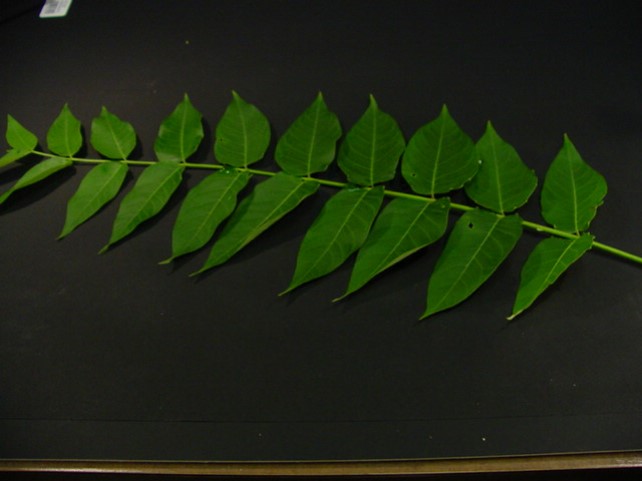




GENERAL DESCRIPTION: The tree from the book A Tree Grows in Brooklyn is basically a ‘weed’ tree because it does not have an overly pleasant growth form and is extremely invasive due to its high tolerance of pollution, adaptability to a broad range of soil conditions, abundant production of viable seeds and lack of susceptibility to disease. This dioecious tree can grow to moderate heights, is open and upright in form, has a quasi whorled look to some branching patterns and has large pinnately compound leaves with many leaflets and swollen bases to the petiole and very large leaf scars. The bark is gray with vertical streaks.
HABIT AND SIZE: 40-60′ high and 25-40′ wide. Its form is upright-open with spreading branches that are slightly swollen at the base and can originate in a pattern that almost looks whorled. The crown can be slightly rounded. A very fast growing tree.
LANDSCAPE VALUE: No real landscape value except the negative of its invasiveness.
LEAVES: Alternate, odd-pinnately compound 18-24″ long with a swollen base to the petiole. The 13-25 stalked (petiolules 0.25-0.75″ long) ciliolate leaflets are 3-5″ long, oblong or lanceolate, acuminate (pointed at tip) and have 2-4 course teeth at the base each with a gland beneath. Bronze-purple young leaves turn dark green on maturity. No significant fall color. The leaves give off a disagreeable odor when bruised.
FLOWERS: Both male and female flowers small, greenish and large terminal panicles usually on separate trees. A short 5 parted calyx and a s-6 parted corolla subtend a 10 lobed disc with 10 stamens in males and a 2-5 parted unilocular ovary.
FRUIT: A single seeded oblong samara (1.5″ long, 0.5″ wide) with a slight twist and yellow-green to orange red coloration.
BUD: Small lateral buds with 2 opposite lateral bud scales that are thick and with a reddish-brown downy surface. Leaf scars very large.
DISEASES AND INSECTS: No significant disease problems. Some Verticillium wilt, shoestring root rot, leaf spots, twig blight and cankor infestation.
HARDINESS AND RANGE: Zones 4-8. China
CULTIVARS: ‘Erythrocarpa’, female with red samaras and ‘Metro’ male with handsome Crown

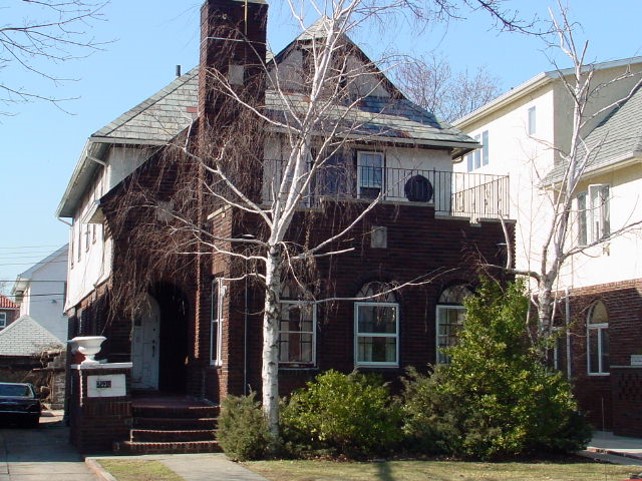
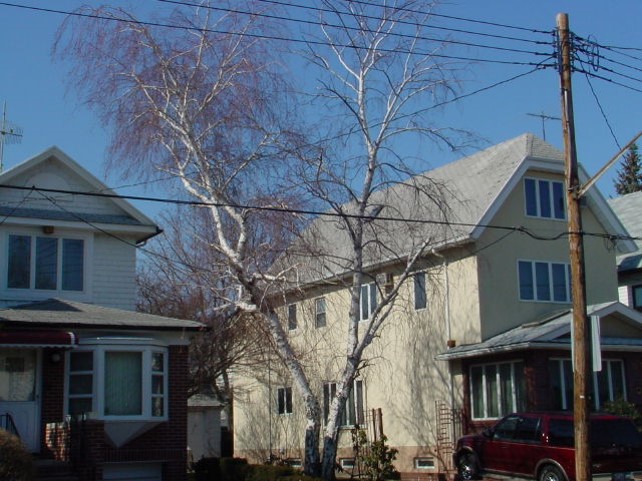


GENERAL DESCRIPTION: European birch is graceful and ornamental with wonderful yellow fall color. The trunks of birches are covered with white or darkish, often papery bark. They flower when coming into leaf in the spring. Its drooping branch tips and dark, fissured bark at the base of its trunk can distinguish the European white birch.
HABIT AND SIZE: European birch grows rapidly, reaching a height of 35 – 75’ with a spread of 15 – 25’. The crown is irregular and the shape can be oval, pyramidal or weeping.
LANDSCAPE VALUE: Although popular, the tree requires more care and spraying than other ornamental trees. Not a low maintenance tree. No significant litter problem.
LEAVES: Leaves are in a simple alternate arrangement with a double serrate margin. Ovoid or rhomboid shape longer thin tip. About 2 – 4” inches in length and are less than 2“ wide. Leaf color is green and changes to yellow in the fall.
FLOWERS: The small flowers are unisexual, the inflorescence a catkin-like, dense compound cyme.
FRUIT: Small, winged achene. Elongated compound structure of 1 to 3 inches long and 0.5 to 1 inch wide. Green when young, but quickly turns brown.
BUD: Narrowly tapering, rather small, brown.
DISEASES AND INSECTS: Susceptible to bronze birch borer, birch leaf miner, birch skeletonizer, and several fungi.
HARDINESS AND RANGE: Zones 3-6. Most of Europe, including Britain, south and east to Morocco, W. Siberia and central Asia.
CULTIVARS: Dalecarlica’ – deeply lobed leaves on pendulous branches; ‘Laciniata’ – cut leaves; ‘Fastigiata’- upright growth habit; ‘Purple Splendor’(purpurea), ‘Scarlet Glory’ – purple leaves; ‘Tristis’ – weeping habit; ‘Youngii’- weeping habit



GENERAL DESCRIPTION: This shrub has become one of the most widely used plants for hedges in small and formal gardens. Its normal form is a rounded diminutive shrub that grows to 3-4′ high. However, the littleleaf boxwood is more commonly used as a tightly pruned hedge 1.5-3′ high. It is particularly good to line sidewalks, as foundation plantings and to create a parterre which is a formal design on the ground. Boxwood has opposite, 0.33-1″ oval leaves that are a medium green that turn yellow to bronze in the winter. Its evegreen nature, dense branching pattern, small leaves and amenability to pruning makes this a favored shrub in the urban garden. There are two varieties, japonica and koreana. Japonica is use more in the southeast and southwest and koreana is more cold hardy and used in the north.
HABIT AND SIZE: A compact, dense and rounded or mounded shrub with a dense branching habit. Normal growth is to 3-4′ high and wide although often tightly pruned as a hedge.
LANDSCAPE VALUE: Excellent for low hedges, as a foundation planting or as repetition in a more formal landscape.
LEAVES: Oppositely arranged, simple, 0.33-1″ and obovate to rounded-obovate. Obtuse or emarginated (i.e. with a shallow notch) at the apex and cuneate at the base with a short smooth petiole. The color is a medium to light green turning yellow to brown to bronze in winter.
FLOWERS: Apetalous in axillary or terminal clusters. Staminate flowers in lateral inflorescences of 4 overlapping sepals and 4 thick filamented stamens opposite the sepals. Pistillate flowers terminal with 6 overlapping sepals and a 3 celled ovary with 3 short styles.
FRUIT: An ovoid loculicidally dehiscent capsule that is three pointed due to persistence of the 3 styles.
BUD: Small, single, stalkless, ovoid with 1 or 2 pairs of visible leaflike scales.
DISEASES AND INSECTS: Winter injury and sun scald plus scale, mealybug and leaf miners.
HARDINESS AND RANGE: Japonica, zones 6-9 and koreana zones 4-9.
CULTIVARS: ‘Wintergreen’- a cultivar of koreana that remains green throughout the winter, one of the best.




GENERAL DESCRIPTION: There are three cedars commonly used in landscaping: C. atlantica, the Atlas Cedar; C. deodara, the Deodar Cedar; and, C. libani, the Cedar of Lebanon. Of these the Cedar of Lebanon is the most cold hardy. However, both the Atlas Cedar and the Deodar Cedar are frequently used in landscaping. The Atlas Cedar is noted for its silvery blue foliage, the horizontally extending branches that in the young plant look gauky and the grayish bark make this a favorite plant particularly the cultivar ‘pendula’ which provides a drapery of hanging branches.
HABIT AND SIZE: As a young tree it is stiff with a prominent central stem and an overall pyramidal form. With age it assumes a more flat topped form with many horizontal branches giving it a layered look. The species can grow to 120′ high.
LANDSCAPE VALUE: Best as a large specimen tree in a larger landscape but some of the cultivars, particularly the pendulous forms, are useful in a small garden.
LEAVES: Alternate and single on young shoots but fascicled on spurs on older shoots, 4 side and stiff, thicker than wide with a light green to silvery-blue color.
FLOWERS: Staminate flowers upright, cylindrical, 2″ long, terminal on spurs. Pistillate flowers ovoid, purplish, about 0.5″ long, consisting of numerous 2 ovuled scales substended by small bracts.
FRUIT: Erect cone ovoid to ovoid-oblong with wide overlapping scales that disintegrate at maturity. The cones take 2 years to develop and are a waxy green when young maturing to light brown. The seeds have large membranous wings.
BUD: On spur branches short and inconspicuous.
DISEASES AND INSECTS: Tip blight, root rots, black scale and Deodar weevil.
HARDINESS AND RANGE: Zones 6-9. Atlas mountains of northwest Africa.
CULTIV ARS: Glauca Pendula’- a true weeping form, ‘Argenta’- best of blue green types, ‘Fastigiata’- upright form.
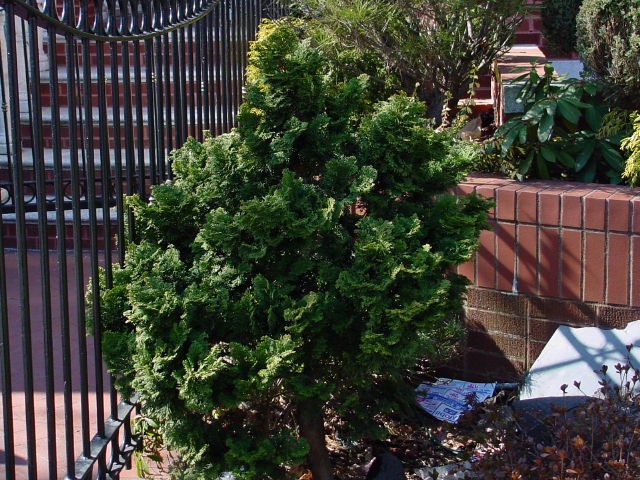
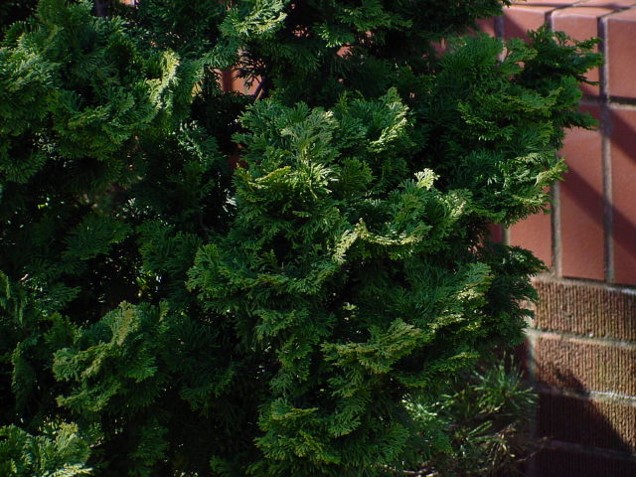
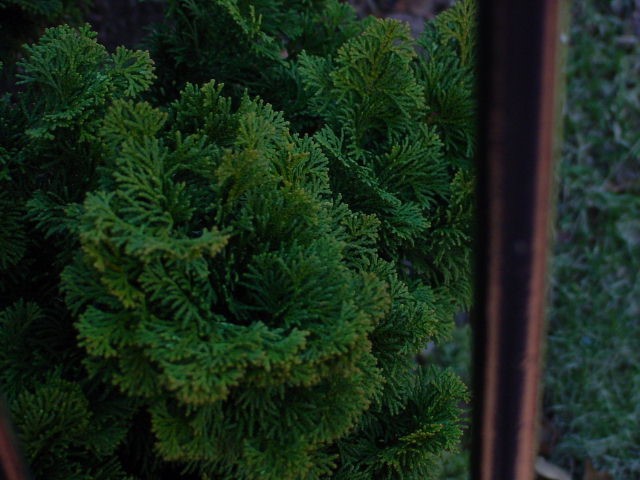



GENERAL DESCRIPTION: The pure species is a tree that can grow to 75′ tall but what one usually sees in landscaping are the many more shrub like cultivars with curled and cup shaped branching patterns. These latter plants are great for rock gardens or small yards where there is a desire to create a landscape using slow growing and diminutive plants. Like all members of the Cuprussaceae the these plants have scale like leaves that overlap and flattened complex branching systems with branchlets that give a fern like appearance. These are terrific plants for sun to partial shade and add an interesting form and dark green look all year around.
HABIT AND SIZE: The species is a softly pyramidal tree with spreading branches and drooping frond-like branches that can grow as high as 75 ‘ high and 10-15’ wide. The commonly used cultivars are small trees to very small shrubs in which the branching systems seem to cup and swirl around the a central axis.
LANDSCAPE VALUE: While the tree form of this species is rarely used in garden design, the shrub and mini-shrub forms are extremely common in gardens where they are an asset because of their unusual forms, shade tolerance, controllable size and evergreen nature.
LEAVES: Scale-like, opposite in pairs, densely covering the branchlets, in the juvenile state they are needle-shaped. They are closely appressed to the branchelet with the lateral leaf much longer than the facial. They do not have glands, are rounded and bright shining green on top with whitish lines beneath.
FLOWERS: Male and female reproductive structures are on separate branches in a terminal location. The staminate structure is oblong, red or yellow, with numerous pairs of stamens alternating at right angles (decussate). The pistillate structure is a globose arrangement of scales subtending 2 (rarely 5) erect ovules.
FRUIT: Round orange-brown, erect cones with 8-10 peltate scales (shield shaped, petiole attached inside margin) containing winged seeds (2-5 per scale).
BUD: Not conspicuous.
DISEASES AND INSECTS: Generally disease free.
HARDINESS AND RANGE: Zones 4-8. Japan, Taiwan
CULTIVARS: Numerous. ‘Crippsii’, ‘Filicoides’, ‘Nana’ and ‘Nana Gracilis’ are notable.


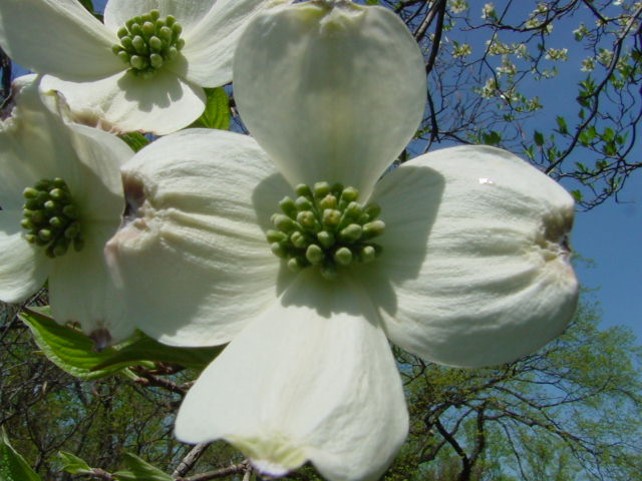
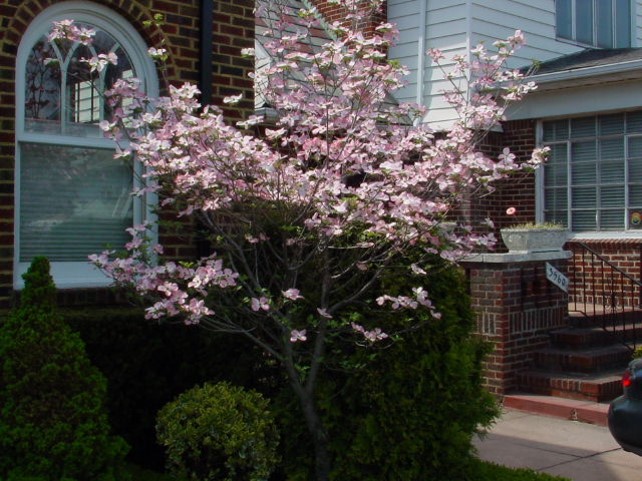



GENERAL DESCRIPTION: This is possibly the most noble of the small flowering trees. It blooms in April-May with inconspicuous inflorescences subtended by large showy white bracts that emerge before the foliage. While it can grow in an open sunny area, the flowering dogwood is excellent in a shady environment perhaps showing more form there. This is a low branching tree with a rounded to flat topped appearance. Opposite branching produces a layered look that is especially appealing. Flowering dogwood has four season interest; spring flowers, unique summer foliage and fruiting, fall red foliage color and an alligator skin like bark and layered branching in the winter.
HABIT AND SIZE: A shrub or small tree that can reach 30′ in height and which is often wider than high. A short trunked tree with spreading or horizontal branches and a somewhat flat topped or rounded crown.
LANDSCAPE VALUE: A small to moderate tree of excellent four season interest that can succeed in shady environments. Excellent as a specirnent tree near a patio, in a small landscape planting, near the corner of a house at the edge of a wooded area or in groupings. Susceptibility to disease discourages its use in favor of the ‘Kousa Dogwood’.
LEAVES: Opposite, simple, ovate or elliptic-ovate, 2-6″ long, tapering to a point and narrowing to a base attached to a short petiole. Leaf top dark green and hairless and leaf bottom lighter due to a waxy bloom (glaucous) with hairs on veins. Distinctive venation of 6-7 pairs of arching veins that are approximately parallel.
FLOWERS: Small greenish-yellow perfect flowers in naked cymes . Subtended by a 2.5-3″ involucre of 4 creamy white bracts with a dimple at the tip. There is a four toothed calyx tube adherent to the 2 loculed ovary, a corolla of 4 oblong spreading petals, and 4 stamens
FRUIT: Ellipsoid glossy red drupes 0.33″ long with persistent calyx lobes. 3-4 in a cluster.
BUD: Flower buds at the stern tip globose, slightly flattened, valvate and covered by 2large tightly wrapping silky hairy scales. Vegetative buds small, slender with non-overlapping bud scales (valvate). Buds almost hidden by leaf scars that are raised and encircle the stern.
DISEASES AND INSECTS: Prone to many diseases especially the anthracnose Discula.
HARDINESS AND RANGE: Zones 5-9, s Vt. to Fla. west to Kans. and s to Tex.
CULTIVARS: ‘Rubra’- pink bracts, ‘First Lady’ -variegated yellow-green foliage, ‘Cherokee
Chief- deep red bracts, ‘Pluribracteata’ -double white flowers and ‘Cloud Nine’ -very hardy
blooms at an early age.
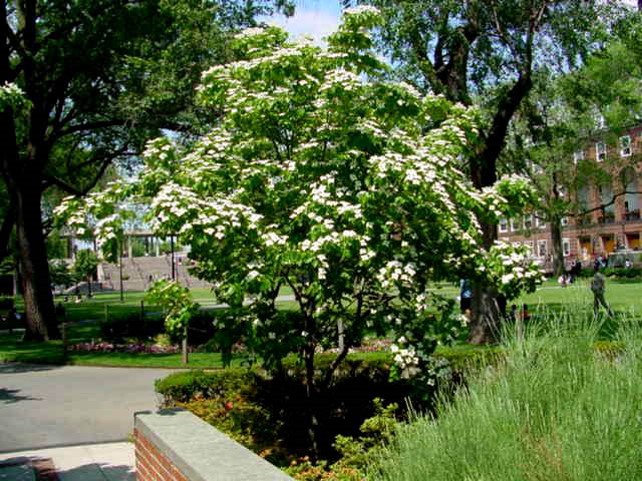
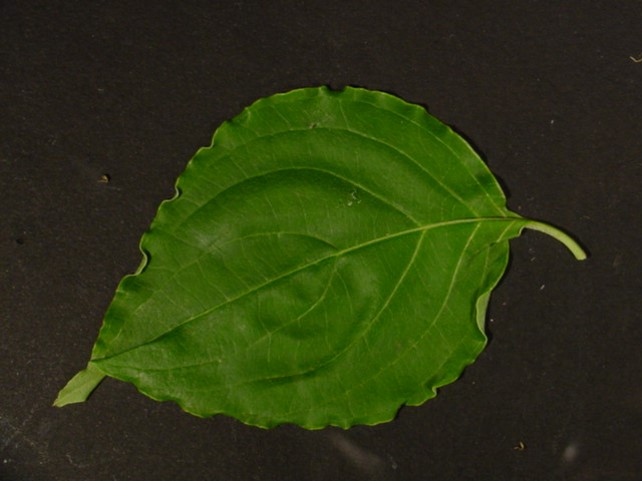
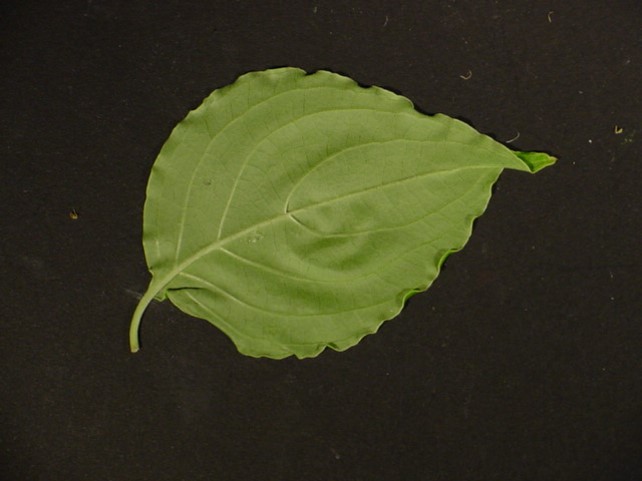
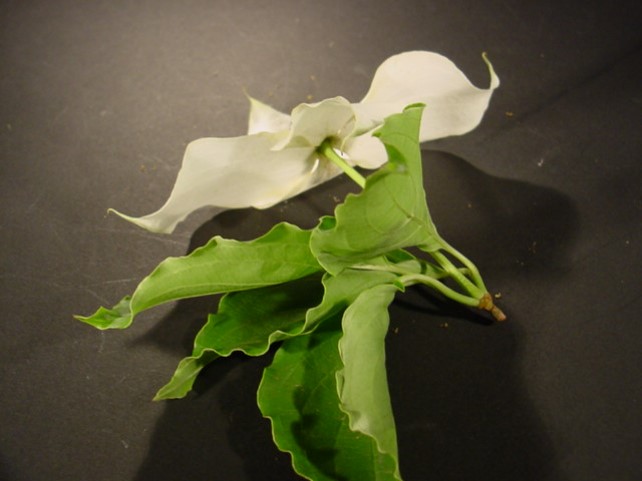

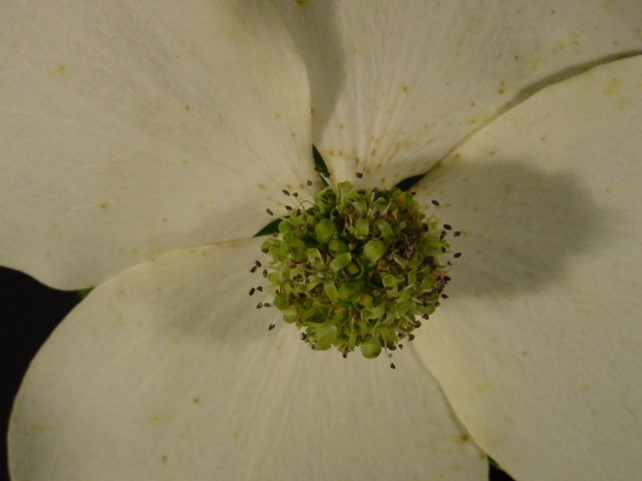

GENERAL DESCRIPTION: This is a very respectable dogwood that is somewhat upright or vase shaped when young and rounded to spreading at maturity. It does not have the aristocratic form of C. florida, but is resistant to Discula spp. anthracnose and therefore is a preferred choice for the garden. Kousa-florida hybrids from Rutgers University are disease resistant and some have the C. florida elegance of form. Kousa dogwoods bloom several weeks later than C. florida so that using both forms provides a prolonged blooming period.
HABIT AND SIZE: A shrub or small tree 10-15 feet tall (sometimes more) with a vase like habit when young and a more rounded habit at maturity. A stratified branching pattern and strong horizontal lines with old age.
LANDSCAPE VALUE: Similar in use as C. florida but smaller and more compact. Preferred for its disease resistance.
LEAVES: Opposite, simple elliptic-ovate 2-4″ long and 0.75-1.75″ wide. Coming to a point or wedge shaped. Color dark green above and lighter below, glaucous with shaggy soft appressed hairs and axillary brownish tufts of hairs. Leaf venation similar to C.florida.
FLOWERS: The inflorescence is a tight stalked (2″ peducncle) umbel of small greenish-yellow flowers subtended by an involucre of 4 pointed white bracts 1-2″ long and 0.25-0.5″ wide. Individual flower structure similar to C. florida.
FRUIT: Red to pinkish red drupes borne in a 0.5-1″ round raspberry like cluster (syncarp) on a 2-2.5″ stalk.
BUD: Flower buds at the end of a stem pointed on top and round flattened below with 2 non-overlapping appressed hairy bud scales. Vegetative buds valvate, appressed, deep brown and longer than C. florida.
DISEASES AND INSECTS: Some susceptibility to borer otherwise disease free.
HARDINESS AND RANGE: Zones (4)5-8. Korea, China and Japan
CULTIVARS: Not many good species cultivars but a number of Rutgers hybrids with characteristics intermediate between C. Kousa and C. florida.

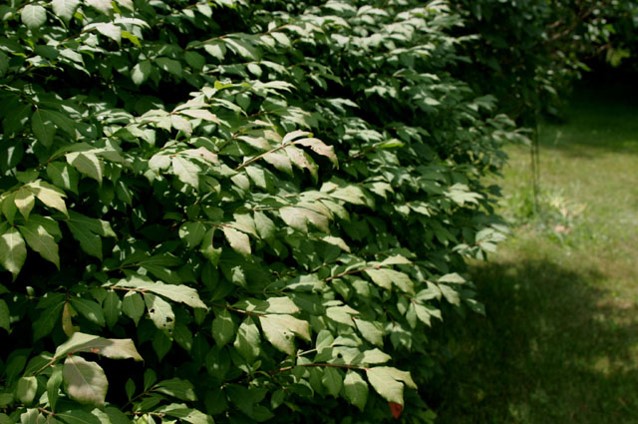
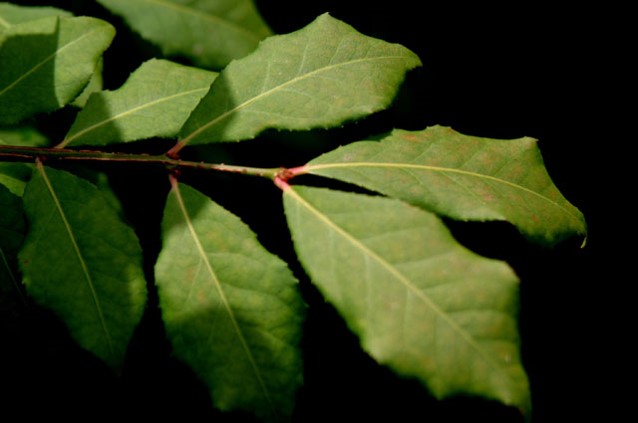





GENERAL DESCRIPTION: This is not a shrub for the small garden unless one uses one of the compact cultivars. The winged euonymous is a vigorous shrub with a very pleasant rounded appearance, a somewhat layered look, very pleasing leaves and winged bark and spectacular brilliant red fall foliage. Some people refer to it as “burning bush”. It is often used as a hedge where is functions quite well. However in the smaller landscape it is often necessary to prune it back substantially every few years. This plant takes well to severe pruning but it does change the natural character of the plant. The graceful form, winged bark and fall color make the winged euonymous a very useful shrub.
HABIT AND SIZE: A spreading shrub that is wider than high with a mounded to flat-topped outline. The opposite branching gives a layered look. It can grow to 20′ high but more often is a 8-10′ shrub. Can be pruned to contain size and can be forced into a hedge form.
LANDSCAPE VALUE: Extremely useful as a specimen, in a grouping, as a barrier or hedge. Pleasing aristocratic form, brilliant fall color and winter interest due to winged bark.
LEAVES: Oppositely arranged, elliptic or obovate, 1-2″ long and 0.5-1.25″ wide, acute at the tip and tapering at the base. The margin is finely and sharpley serrate. There is a petiole of 0.5″ and the color is medium to dark green and smooth or somewhat downy beneath. Fall color is a fluorescent pinkish red to vibrant red. Dry conditions promote early coloration.
FLOWERS: 1-3 small greenish-yellow flowers in a cyme in May-June. Perfect 4-5 parted flowers.
FRUIT: 0.25-0.33″ long red capsule containing seeds with an orange red aril. September.
BUD: With 6-8 pairs of overlapping green-brown-red scales. Conical, ovoid acute in shape. Smooth and shiny and sticking out from the stem so that it forces the leaves to diverge.
DISEASES AND INSECTS: None serious.
HARDINESS AND RANGE: Zones 4-8(9). Northeastern Asia to central China.
CULTIVARS:
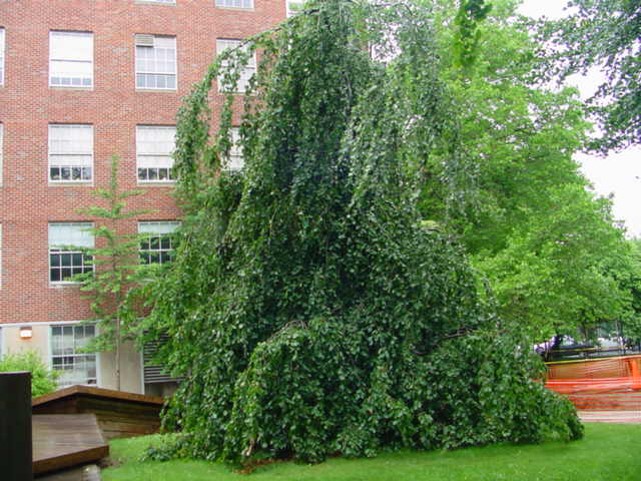
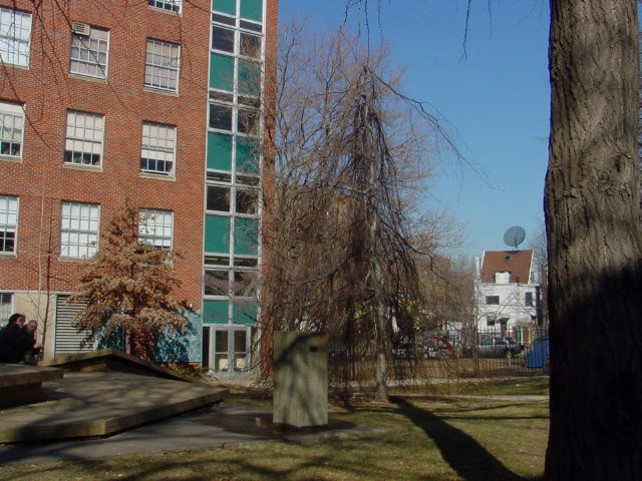


GENERAL DESCRIPTION: This beech has been extensively planted in Europe and North America for hundreds of years so that there are gigantic specimens in various parks and estates. It is characterized by bark that resembles elephant skin (easily carved) and a dense pyramidal outline early that becomes more rounded with age. The massive lower branches reach almost to the ground. The deep green leaves turn a beautiful golden brown to reddish brown in the fall. This is a very large tree and should be used in large planting areas. The so called “copper beech” is a form with coppery purple leaves.
HABIT AND SIZE: 6o to 100′ high and 35-50′ in diameter. A stout trunk with a densely pyramidal to rounded crown of massive spreading branches almost reaching the ground.
LANDSCAPE VALUE: A tree of imposing dignity that can dominate a landscape. Readily transplanted, excellent winter interest because of habit and bark and cultivars that will suit a variety of landscapes. Slow to moderate growth rate (9-12′ per 10 yrs.).
LEAVES: Alternate, simple, 2-4″ long, 1.5-3″ wide, broadly elliptical or ovate acute cuneaste to rounded at base. Margins undulate, entire or remotely toothed. Veins 5-9 straight parallel, surface silky and hairy when young becoming glabrous (hairless) with age except on veins. Leaf color; lustrous green above and light green below turning russet to bronze in the fall.
FLOWERS: Staminate flowers in slender stalked hanging heads, yellowish-green, subtended by deciduous scale like bracts a 5-7 lobed bell shaped calyx and 8-16 stamens. Pistillate flowers in pairs in stalked involucre (subtending bracts) in leaf axils, calyx six lobed fused to a 3 celled ovary , styles 3·
FRUIT: A brown, ovoid, sharpley 3 angled nut, 1-2 in and a prickly involucre dehiscing into 4 valves.
BUD: Overlapping, slender, 0.75-1″ long, sharpley pointed.
DISEASES AND INSECTS: Some difficulties with bark diseases.
HARDINESS AND RANGE: Zones 4-7. , but does poorly in extreme heat. Native to central and southern Europe to high altitudes. Planted in northeast and Pacific United States.
CULTIVARS: ‘Asplenfolia’ has dissected leaves that gives an overall fern like impression. ‘Fastigiata’ is upright, columnar to columnar-oval form that provides verticality in the landscape. ‘Atropunicea’ represents the many ‘copper beech’ forms in which the leaves start out. coppery-purple and mature to purple -maroon. ‘Pendula’ is the weeping form no two of which are alike. ‘Rotundifolia’ has more rounded black-green leaves.
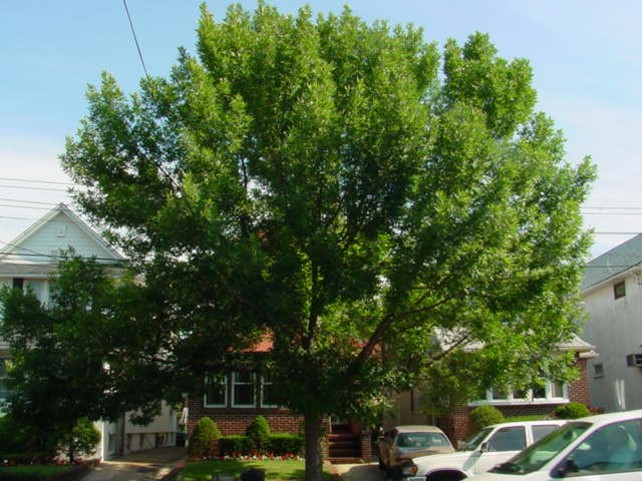


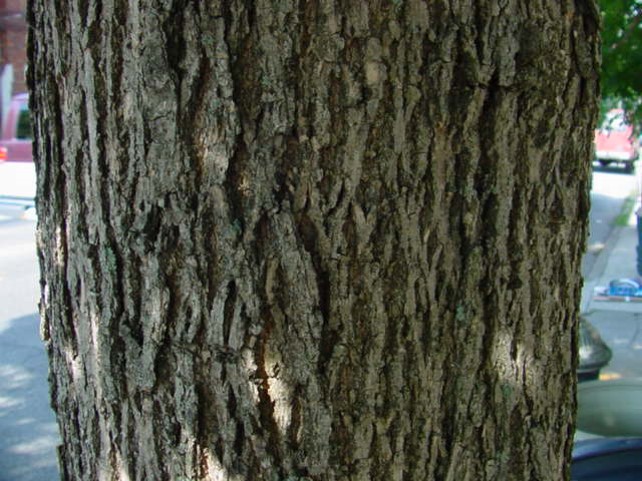
GENERAL DESCRIPTION: This is a very commonly planted street tree in the northeast and midwest because of its moderate size, pyramidal to upright spreading habit, attractive pinnately compound leaves and yellow fall leaf color. It is also adaptable to a variety of climatic and soil conditions and is heat and drought tolerant. There are several diseases and pests that can have a devastating effect on the green and white ash so that overplanting is not recommended. Also, unless one has a male form or a seedless form the samara fruits can be a nuisance. The bark is very attractive because of its diamond shaped ridges that are very uniform.
HABIT AND SIZE: 50-6o’high and 25-30′ wide. The form is loosely pyramidal when young becoming upright and spreading with maturity due to 3-5 main branches and many smaller branchlets. The shape of the crown is somewhat irregular and sometimes unattractive.
LANDSCAPE VALUE: A very adaptable tree of moderate size, lustrous green leaves and quite good yellow fall color. Somewhat course in form and susceptible to disease. Fast growing (2-3′ per yr.). Certain cultivars preferred over seed grown trees to eliminate fruiting.
LEAVES: Opposite, pinnately compound with 5, 7 or 9 leaflets on short petiolules. The leaflet shape is ovate or oblong-lanceolate, taper pointed with margins that are entire or undulate (rarely toothed) and narrowed at the base. The petiolules of the middle and lower leaflets are winged. Leaf color is lustrous medium to dark green and the texture is a tawny or dull grayish pubescence on the lower leaf surface as well as on the rachises and petioles.
FLOWERS: Dioecious small green to reddish purple flowers lacking a corolla in large crowded panicles. Flowering occurs in April on old wood just beneath the new seasons growth, The calyx is 4 cleft and female flowers have a single 2 cleft stigma while males have 2 stamens.
FRUIT: A samara 1-2″ long and 0.25″ wide, winged 33% down the body, brown in color.
BUD: Dark rusty brown, woolly and set above the leaf scars which are straight across the top.
Green ash buds are smaller and narrower than white ash.
DISEASES AND INSECTS: Borers and scale are important problems. See also F. americana
HARDINESS AND RANGE: Zones 3-9, Nova Scotia to Minn. south to Fla. and Tex.
CULTIVARS: ‘Summit’ has a central leader an excellent growth habit and good yellow fall color. ‘Patmore’ is a hardy male plant with upright branching and a uniform outline.



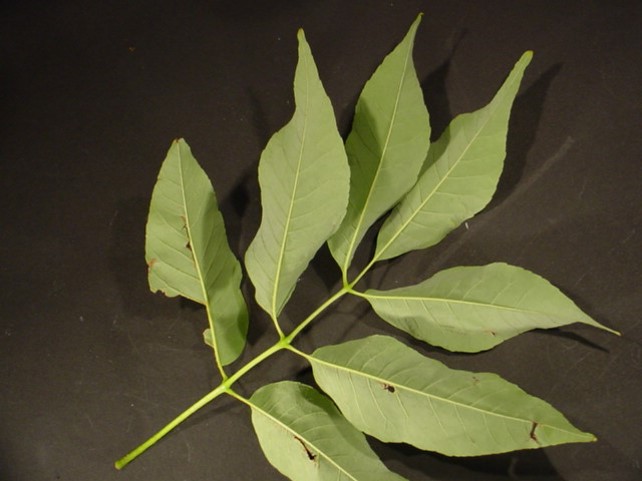

GENERAL DESCRIPTION: This is a tree native to eastern and central North America and it is prized for its easily workable uniform grained wood. It is a tall tree with a single leader and a pyramidal shape so that its’ spread is not so great. It has large pinnately compound leaves that emerge late in the spring and which turn yellow to maroon in the fall adding to the color of the northeastern deciduous woods. The bark is particularly attractive because of the very regular diamond shaped furrows. It is not heavily planted in urban areas but can be good in a large landscape such as a park, golf course or estate. Disease problems argue against use.
HABIT AND SIZE: so-So’ high and as much as 120′ and at maturity equally wide but for much of its growth somewhat pyramidal with a central leader. 200 year old specimens are awesome with an open and round topped crown. Growth rate 1-2′ per year.
LANDSCAPE VALUE: Mature specimens are magnificent in an open setting. Not recommended for streets and yards due to size, sensitivity to stress, and myriad of diseases.
LEAVES: Oppositely arranged, 8-15″ long, pinnately compound with 7 petiouled (5-9) leaflets each 2-6″ long and 1-3″ wide. Leaflet shape is ovate to ovate-lanceolate with a tip that is tapering to a point and a rounded base. The margins are entire with occasional serrations. Upper surface smooth (glabrous) and lower surface with a waxy bloom (glaucous). Petiole yellowish, glabrous, round and with a slight groove above. Leaf color dark green turning to yellow to reddish purple to maroon in the fall. Pattern is darker colors to outside yellow towards the center.
FLOWERS: Green to purple unisexual flowers with no corolla, a small4lobed campanulate calyx, 2 stamens in males and a unilocular ovary. Flowers appear in panicles before leaves.
FRUIT: A linear-oblong 2″ single seeded samara 0.25″ wide, rounded, with wing extending one third of the way down the body.
BUD: With 2-3 pairs of scale that are somewhat rounded, covered with grainy particles and somewhat hairy and inserted into the leaf scar. Rusty to dark brown to almost black in color.
DISEASES AND INSECTS: Too many to list but dieback (mycoplasm) and borer significant.
HARDINESS AND RANGE: Zones 3-9. Eastern and central United States
CULTIVARS: ‘Autumn Purple’ -dark green leaves and red to reddish purple in fall. Fall color a function of environment. More color to the north.


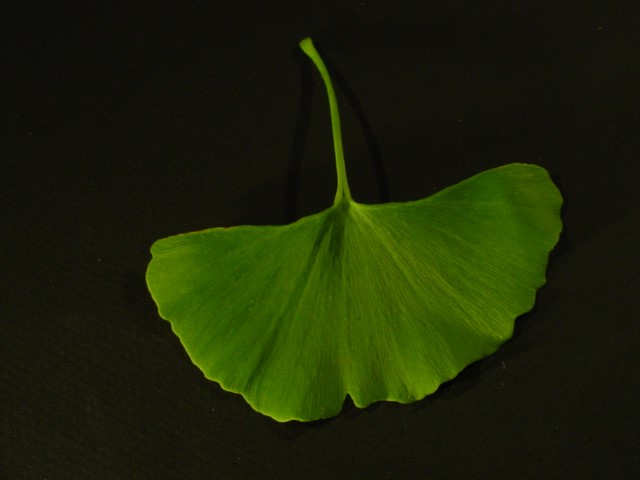

GENERAL DESCRIPTION: A “living fossil” because it has been around for 225-280 million years, this tree was ‘rediscovered’ in a Chinese Buddhist temple garden and has become a very popular street tree. Unlike most other street trees Ginkgo is a gymnosperm which means it does not produce a fruit only a seed. As a young tree it is ‘gauky’ with branches springing out but as it ages it becomes fuller, developing wide and spreading with massive picturesque branches. The leaves have a unique fresh green, flutter in the breeze, have a special shape and turn a magnificent yellow in the fall, sometimes all falling in a single day. The bark is gray-brown with ridges and dark furrows, quite intriguing. Beware the female tree, the ripe seeds stink.
HABIT AND SIZE: so-So’ high and 30-40′ wide, eventually wider than high and as high as 100′. Sort of pyramidal when young and wide spreading with age but the branches come out at such acute angles and with such an interrupted pattern that the habit is hard to describe. Can be fast growing in youth but slows considerably -with age.
LANDSCAPE VALUE: Very tolerant of pollution and relatively fast growing initially. Used quite a bit as a street tree but generally good for public areas. Not much for shade but unique in form. Leaves very pleasing and comfortable green and fall color spectacular. Never plant a female because the soft outer layer of the seed smells like rancid butter.
LEAVES: Alternately arranged, simple clustered in 3’s and s’s on spur branches, fan shaped and dichotomously veined, partially divided or incised at the broad end. 2-3″ long and equally wide. Color a bright fresh green, hairless. Leaf blade tapers into a l.S-3·5 ” petiole.
FLOWERS: No true flowers but male and female reproductive systems borne on separate plants on short modified cones in March to April.
FRUIT: No true fruit, only a seed with a soft outer layer and a seed like inner layer. Very malodorous. Seed shaped like a plum 1-1.5″ long and tan to orangish in color.
BUD: At the tips of spurs, overlapping scales pointed and brownish.
DISEASES AND INSECTS: Some leaf spot problems but otherwise disease free.
HARDINESS AND RANGE: Zones 3-9a. Native to China
CULTIVARS: ‘Autumn Gold’- a handsome male, broad spreading, ‘Fastigiata’ a columnar
form with ‘Princeton Sentry’ being a male cultivar.
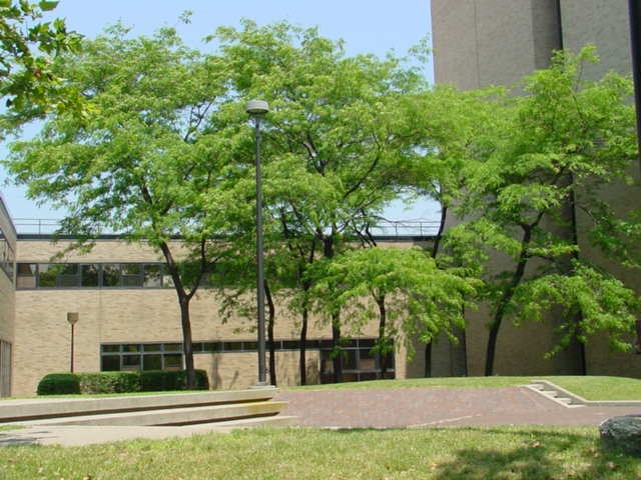
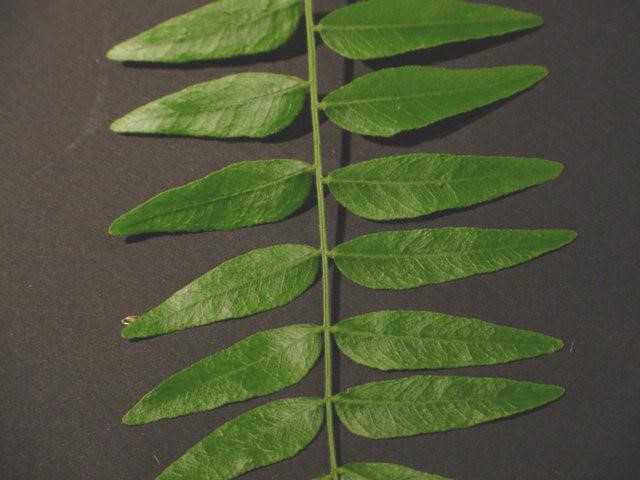
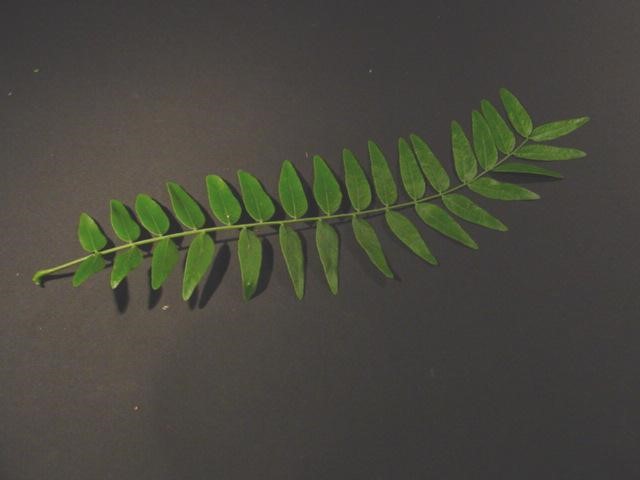
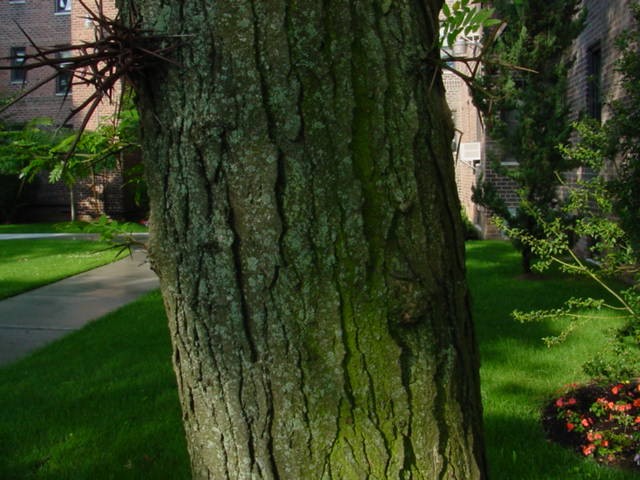
GENERAL DESCRIPTION: This has become a very popular street, yard and landscape tree in the midwest and the east because its short trunk and spreading crown gives it a graceful habit and sophisticated silhouette. The fine textured pinnately compound leaves with their small leaflets allow for a light shade that allows other plants including grass to grow underneath. The leaves turn a rich golden brown in the fall. The flowers are inconspicuous but the fruit a large, often twisted, hanging pod to 18 inches long is attractive but can be a nuisance. The very dark black bark with the scaly ridges and silhoutte are beautiful in the winter as are the many spines on the bark and branches. The cultivar ‘inermis’ is thornless.
HABIT AND SIZE: 30-70’high and equally wide with a short trunk and an open spreading crown forming a delicate and sophisticated silhouette.
LANDSCAPE VALUE: Generally excellent for forming an area with light open shade. Has been overused and diseases have proven problematic. Also pods and leaves messy.
LEAVES: Alternately arranged, pinnately or bipinnately compound, 6-8″ long, the central axis bears leaflets (rachis) that are hairy all around and groved. Pinnate leaves with 20-30 oblong-lanceolate leaflets 0.33-1.5″ long and 0.2-0.67” wide with margins that have widely spaced (remotely) crenations or serrulations (blunt or sharp teeth pointing forward). Bipinnate leaves with 8-14 pinnae, with 0.33-1″ long leaflets that are a glossy bright green. The base of the petiole is swollen.
FLOWERS: Small, short pediceled flowers in male and female racemes. Calyx lobes and petal 3-5, the petals nearly equal and not much longer than the calyx. Stamens 6-10, separate. Pistillate flowers with a short style and a large terminal stigma.
FRUIT: A pod 12-18″ long, slightly sickle shaped (falcate), and twisted.
BUD: Terminal buds absent, lateral buds 5 or more, distinct at node, small, scaly or naked.
DISEASES AND INSECTS: In the midwest, web-worm, mites, galls and various cankers have decimated a number of plantings.
HARDINESS AND RANGE: Zones 3-9. Pa. south to Miss., west to Neb. and Tex.
CULTIVARS: The variety ‘inermis’ is thornless and its cultivars ‘Majestic’, ‘Moraine’, ‘Shademaster’ and ‘Skyline’ are superior to the species. ‘Sunburst’ starts with golden yellow new foliage that matures to bright green.


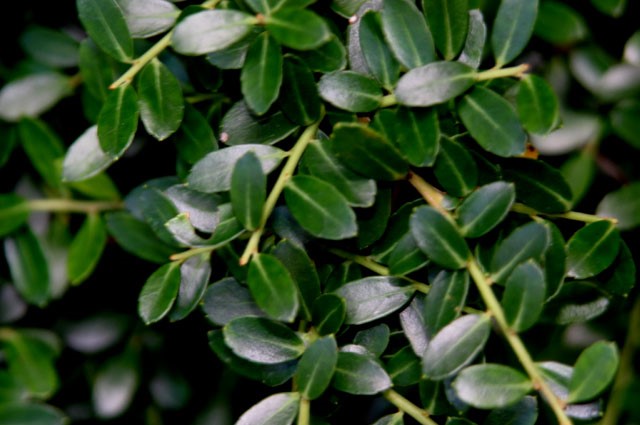
GENERAL DESCRIPTION: This a compact shrub to a small upright tree that is used in the landscape in a similar fashion as the littleleaf boxwood. It is densely branched with small, lustrous, deep green leaves that stay green in the winter. It is used for a broadleaf evergreen look in foundation plantings, for hedges and for mass plantings.
HABIT AND SIZE: Left unpruned it is generally a 5-10′ high shrub but it can reach 20′. A much branched, rounded, flat-rounded or upright or can be like a small tree.
LANDSCAPE VALUE: Excellent for hedges, as a texture accent or as a foundation planting.
LEAVES: Alternately arranged, simple, evergreen, elliptic or obovate to oblong-lanceolate 0.5-1.25″ long and 0.25-0.625″ wide. The margins are crenately-serrate, sharp pointed; the texture is smooth; and, the color is a shiny deep green. ·
FLOWERS: 3-10 staminate flowers in 0.5-1′ long cymes, the individual flowers with 4lobed calyx and 4 petals and stamens. Solitary and scattered pistillate flowers with 4 acute calyx lobes, 4 petals and a ciliate sessile stigma.
FRUIT: 0.25″ diameter berry-like black drupe. September-October
BUD: Small and inconspicuous.
DISEASES AND INSECTS: Spider mites, nematodes in south and black knot disease.
HARDINESS AND RANGE: Zones 5-8. Does not do well in the deep south.
CULTIVARS: ‘Compacta’- a small globose form, ‘Glory’- the most cold hardy, ‘Helleri’- a dwarf, broad mounded compact form with flat leaves.
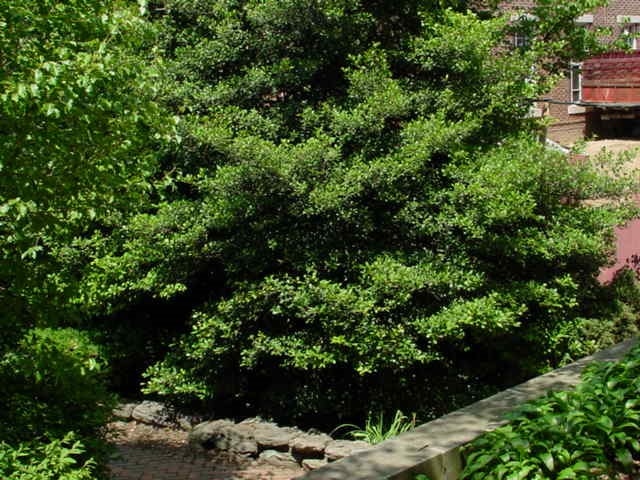

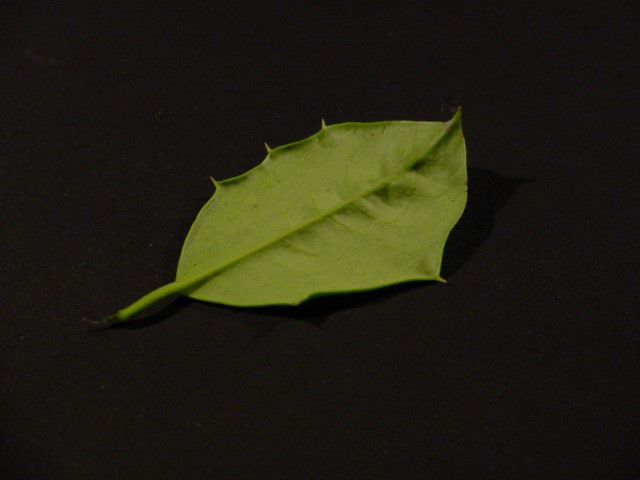
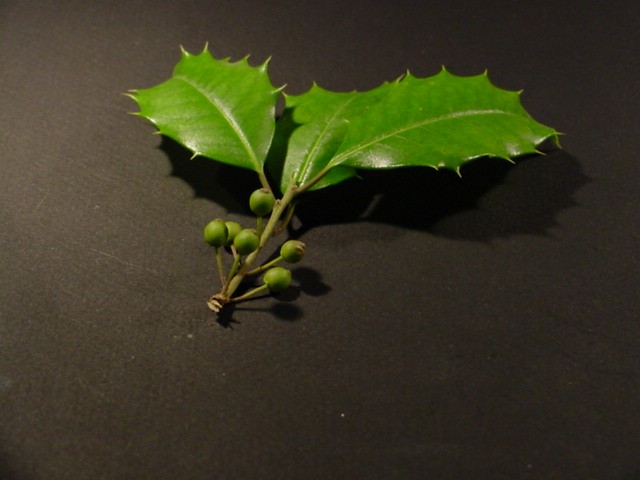
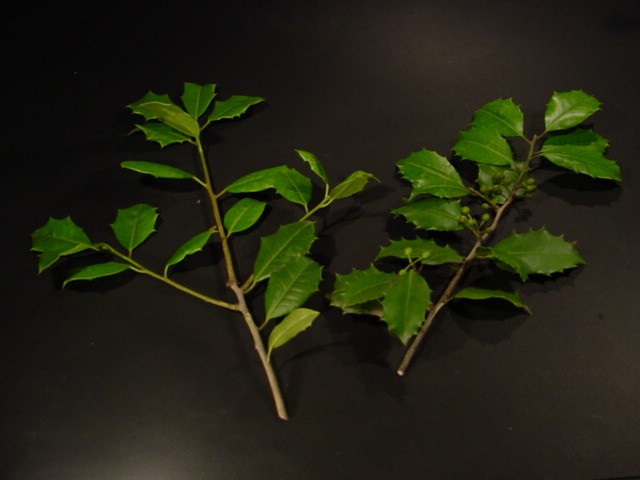

GENERAL DESCRIPTION: This native broadleaf evergreen tree can be a magnificent specimen to have in the landscape. Along the New Jersey shore there are dense stands of the American holly just behind the dunes and in North Carolina it is an understory tree of the deciduous hardwood forest. The desirable features of this tree are its stately pyramidal evergreen form, its dense matte green foliage, the bright red enduring berries on the females and the smooth grey white bark.
HABIT AND SIZE: 40-50’high (15-30′ more usual) and 18-40′ wide strongly pyramidal when young developing a more open, irregular and high branching form with age. The branching is very dense.
LANDSCAPE VALUE: Perhaps the best tree type holly, it is an excellent specimen in a formal setting, in groups for an informal screen or in a row for a hedge. The females are valued for their berries and the males for their glossier foliage and sweet smelling flowers.
LEAVES: Alternately arranged, simple, evergreen leaves 2-4″ long and 1-2″ wide, elliptical or obovate with large remote spiny teeth (few teeth in older plants near the apex of the branch), obtuse or acute at the tip. Leaf color dark matte green on top and yellowish green
FLOWERS: 3-10 staminate flowers in 0.5-1′ long cymes, the individual flowers with 4lobed calyx and 4 petals and stamens. Solitary and scattered pistillate flowers with 4 acute calyx lobes, 4 petals and a ciliate sessile stigma.
FRUIT: A globose or globose-oblong drupe, red (rarely yellow) 0-4″ in diameter on a 0.25″ pedicel.
BUD: Twigs are brown or gray, stout and covered with fine hairs when young.
DISEASES AND INSECTS: A number of problems such as holly leaf miner, bud moth, scales, beetles, whitefly, berry midge, mites, twig die back and scale.
HARDINESS AND RANGE: Zones 5-9. Mass. to Fla. west to Mo. and Tex.
CULTIVARS: Over 1000 cultivars some region specific. ‘Carolina #2’, ‘Croonenburg’, ‘Dan Fenton’, ‘Jersey Princess’, ‘Judy Evans’ and ‘Miss Helen’ good for northern gardens.


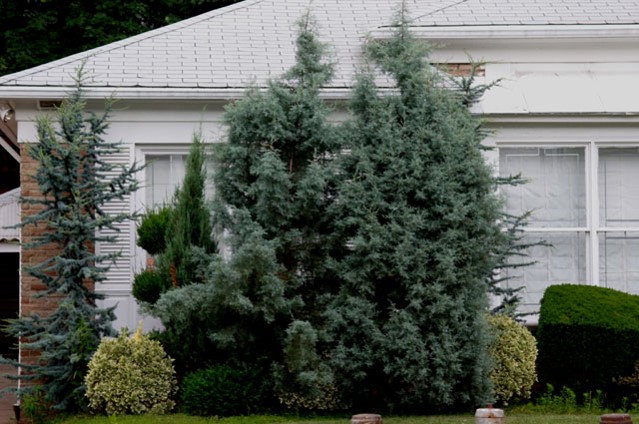
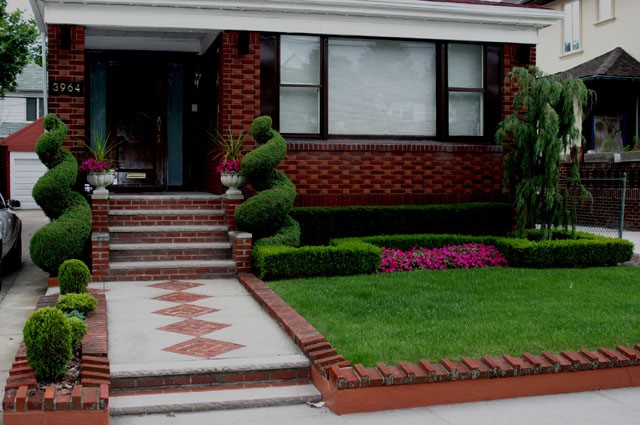


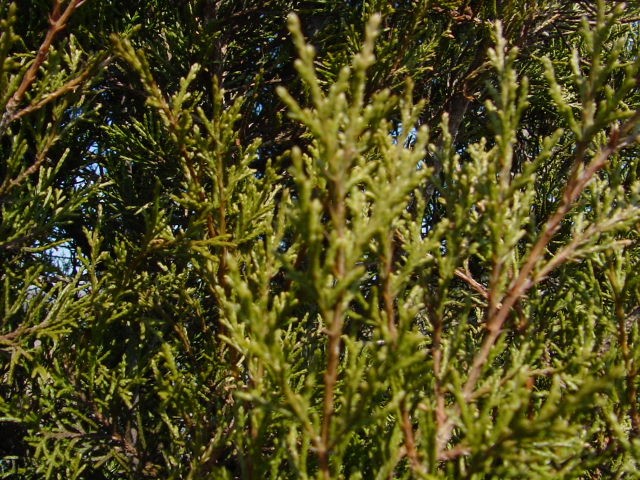
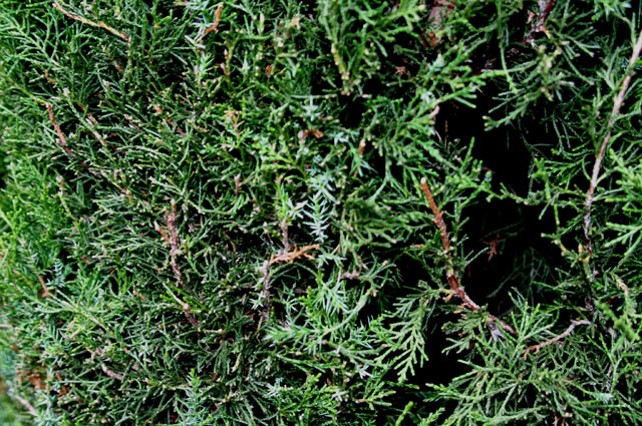




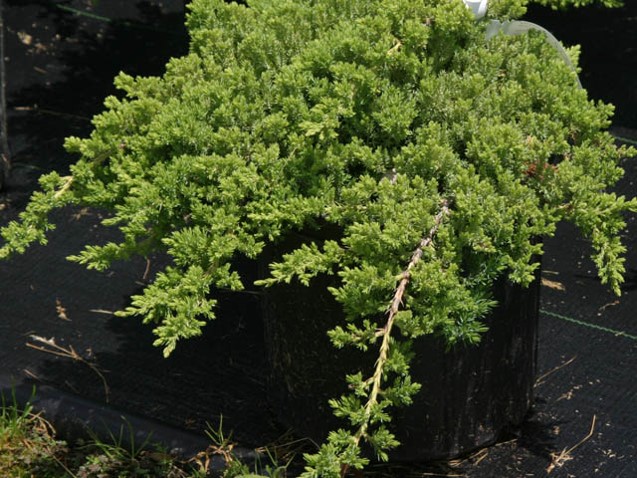
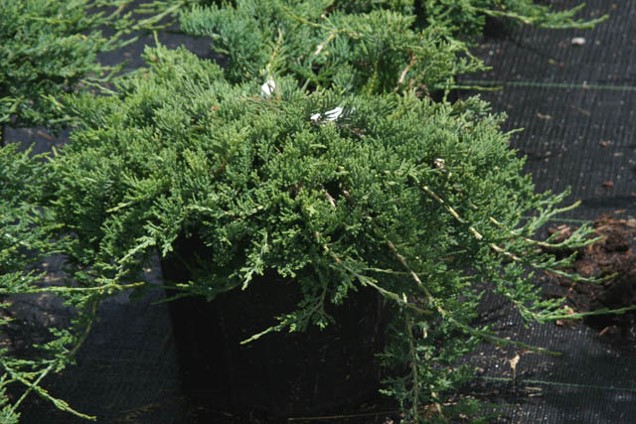


GENERAL DESCRIPTION: Probably the most commonly used of the needle bearing evergreens in landscaping are the junipers. In nature many are large trees, some are shrubs and others low growing shrubs. In horticulture cultivars of several species have been selected to provide mostly shrubs and ground covers and sometimes small trees. The commonly used species that provide horticultural cultivars are as follows: Chinese Juniper, J. chinensis; Common Juniper, J. communis; Shore Juniper, J. coniferata; Dahurian Juniper, J. davurica ‘Parsoni’; Creeping Juniper, J. horizontalis; Japanese Garden Juniper, J. procumbens; Savin Juniper, J. sabina; Rocky Mountain Juniper, J. scopulorum; Single Seed Juniper, J. squamata; Eastern Red Cedar, J. virginiana. In general the junipers are small evergreen trees, shrubs, and groundcovers that have small needle like or scale like foliage on numerous branches that project up or outward rather rigidlybut whose overall effect is a soft, dense form in shades of green to blue green. These are very hardy plants and they respond well to pruning so that they are often used for topiary plants. The following descriptions are somewhat generalized to cover the genus.
HABIT AND SIZE: In nature, trees to 80′ with a soft pyramidal habit or spreading shrubs.
LANDSCAPE VALUE: Excellent as small upright trees for screens and hedges, as spreading shrubs and ground covers and as shrubs or small trees for large containers.
LEAVES: Generally awl shaped tapering to a spiny point and extending from the stern at an obtuse angle (sometimes appressed and/ or overlapping). Arranged in opposite pairs around the stem or in whorls of three. Their shape is concave and glaucous above and green and convex below.
FLOWERS: Groups of male flowers with 3-6 anthers in lateral arrangements. Round pistillate flower groupings (aments) of 3-6 fleshy coalescent scales each with a single ovule.
FRUIT: A modified berry-like cone often bluish. Used to flavor gin!
BUD: Inconspicuous
DISEASES AND INSECTS: Juniper blight and bagworm are the most serious problems.
HARDINESS AND RANGE: Zones 3-7, 4-8. Mostly northern climates worldwide.
CULTIVARS: Too numerous to list.
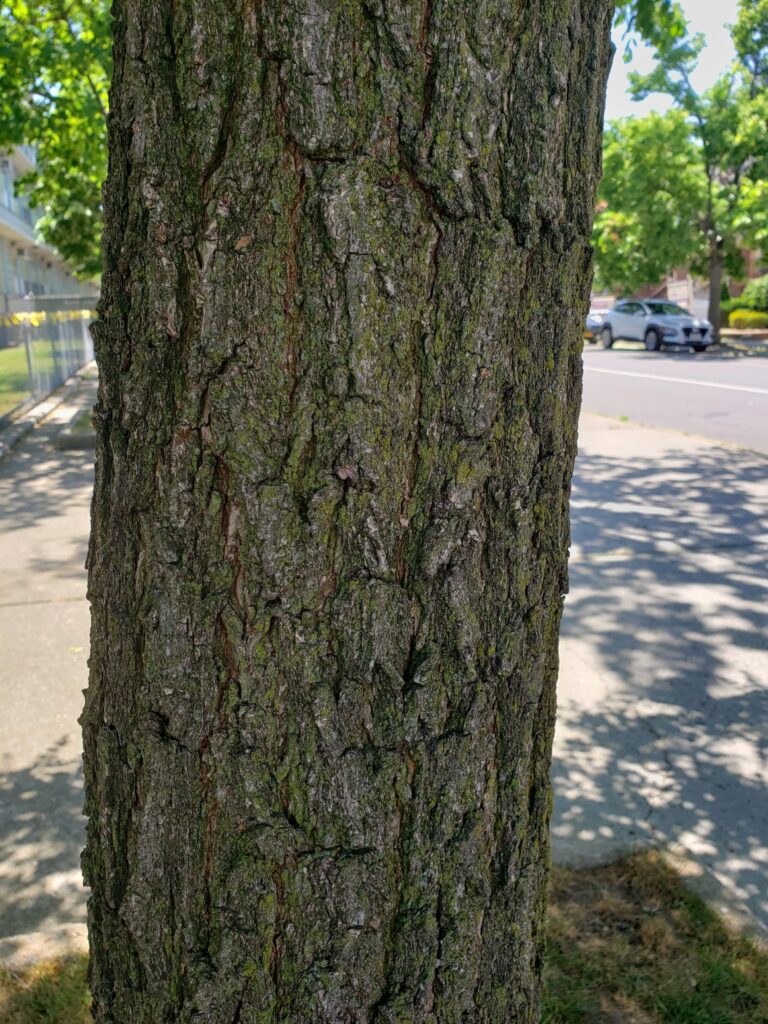



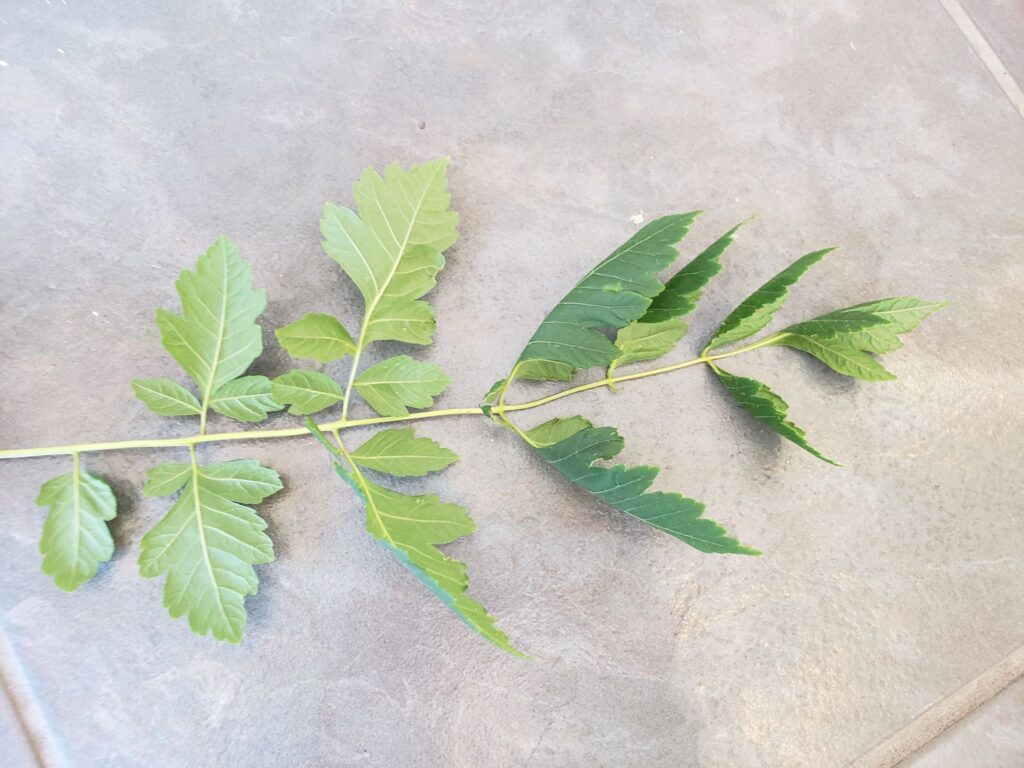

GENERAL DESCRIPTION: This tree is native to China, Korea and Japan. It is commonly used as an ornamental tree in all temperate regions of the world. It is a moderately sized tree with a spread about the same as it’s height. It produces a vibrant yellow flowering display for up to a month, with reddish seedpods following. The bark is grey, thin with intercepting ridges and is susceptible to damage. The root system doesn’t spread widely making it an ideal city street tree and for smaller landscapes. Leaves are pinnate compound with a feather shape to the leaflets. It is invasive in the southeastern United States. It is pollution resistant and drought tolerant.
HABIT AND SIZE: 30-40’ both tall and wide. The outline is a flattened oval with spreading branches. The smaller branches are usually pruned to prevent breakage due to wind.
LANDSCAPE VALUE: It is used for smaller landscapes, as a city street tree and on narrow paths due to it’s smaller root system. Bright yellow flowers in the early summer and good yellow fall color.
LEAVES: Alternate, Pinnately compound, feathery leaves up to 18″ long, each leaf having 7-17 irregularly lobed leaflets. Leaflets are 2 to 4 inches or less than 2 inches in size. Leaves are pinkish bronze to purplish in spring, mature to a bright green in summer. Fall foliage is variable but usually a strong yellow color.
FLOWERS: Showy yellow flowers that are 1/2″ wide appear in early summer in long, terminal, panicles of 12-15″. Falling blossoms may or may not resemble “golden rain”, but the fallen blossoms often form an attractive golden carpet under the tree.
FRUIT: The fruit is a three-parted inflated papery pod 3–6 cm long and 2–4 cm broad and resembles a Chinese lantern. Green then ripening orange to pink in autumn, containing several dark brown to black seeds 5–8 mm diameter. Seeds germinate readily in soil.
BUD: Axillary buds vegetative buds with overlapping scales with short hairs all over older buds.
DISEASES AND INSECTS: Susceptible to root rot, canker and flat-head borer beetles. Most of the damage can be reduced by pruning.
HARDINESS AND RANGE: All regions in Zones 5-9.
CULTIVARS: ‘Fastigiata’ – upright growth habit; ‘September’ – late flowering habit; ‘Stadher’s Hill’ – deep reddish fruits.
Image citations: By Anna Petrovicheva (CC-NC-SA)


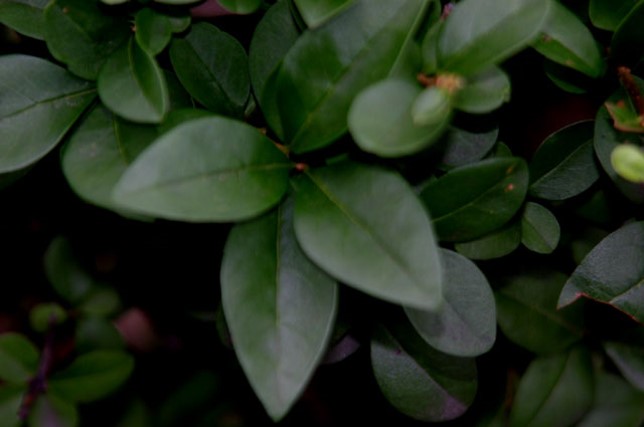
GENERAL DESCRIPTION: The privet hedge was, until recently, one of the most ubiquitous of pruned hedges lining yards and walkways. Privets have also been used in borders as tall shrubs (8-12′). Their appeal is their dependable rapid growth and hardiness, the lustrous green moderately sized leaves and their ease of pruning. In fact, privets can be severely pruned (rejuvenation pruning) and break out to be reformed as a lower hedge over several years. There are several privets in common use: L. amurense, Amur Privet; L. obtusifolim, Border Privet; L. vulgare, European Privet; L.japonicum, Japanese Privet; and, L. ovalifolium, California Privet. The last 2 species are evergreen and used in the South and California while the others are deciduous and more useful in the North. The desciptions below are a composite of the general characteristics of the above mentioned privets.
HABIT AND SIZE: 12-15′ high shrubs with a spread 2/3 as wide with a dense, upright, multi-stemmed habit and a weak pyramidal outline.
LANDSCAPE VALUE: Very functional as a hedging plant or border shrub. Handles pruning very well. Overused in the past but less used now due to other better shrubs.
LEAVES: Oppositely arranged, simple, entire, elliptic to oblong, 1-2″ long apex obtuse to acute, base broad rounded to broad cuneate. Minutely hairy to smooth on the underneath edges. Color is medium to dark green.
FLOWERS: Bisexual, white, in terminal panicles with a campanulate calyx each sepal with 4 small teeth. The corolla is funnel form, mostly with a rather short tube and 4 spreading lobes. There are two stamens attached to the corolla tube.
FRUIT: A drupe like usually black berry.
BUD: Sessile, ovoid, small with 2 or 3 pairs of exposed scales, brownish.
DISEASES AND INSECTS: Numerous but in general not much affected.
HARDINESS AND RANGE: Zones 3-8 depending on species.
CULTIVARS: Each species has several cultivars.




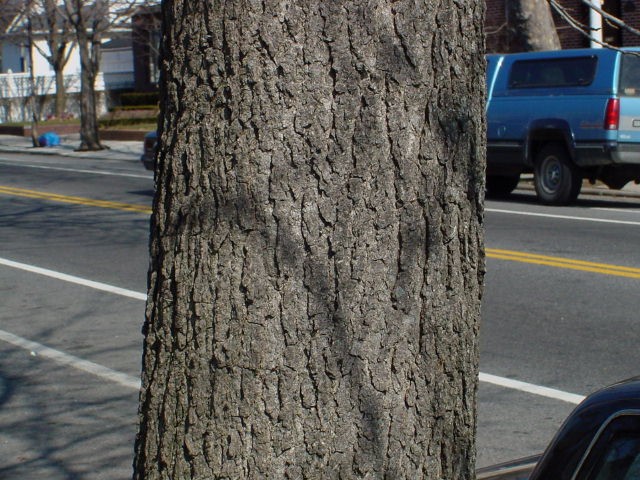
GENERAL DESCRIPTION: A native American tree that prefers moist areas, it is particularly notable for its fall foliage in shades of yellow, orange, red and purple that remain late into the fall. A medium tall tree its leaves are characteristically lobed and a lustrous green. The spiny, round, 1-1.5″ fruit is attractive but can be bothersome. With a pyramidal growth habit, when young, maturing to a rounded habit and distinctive bark that is deeply furrowed and almost corky in appearance it is an excellent tree for streets and yards. Tolerates dryness.
HABIT AND SIZE: 60-75′ high and two thirds as wide (to 120′ high in wild) with a clearly pyramidal shape when young and an oblong to rounded shape at maturity. Crisp outline.
LANDSCAPE VALUE: An excellent tree for streets, parks or lawns particularly where there is plenty of room. Can be damaged or killed by extreme cold (-20 degrees). Great shape, lustrous leaves with unique shape and excellent fall color. The bark has winter interest.
LEAVES: Alternately arranged, simple 4-7.5″ long and wide, 5-7 lobed in a star-shaped patternwith oblong-triangular acuminate lobes and margins that are serrate. The base is basically flat across. Color is shiny green above and paler beneath with hairy tufts in the axils of the principle veins. Long petioled (2.5-4″). Fall color yellow, orange, red to purple.
FLOWERS: Apetalous in globular heads. Staminate flowers without a calyx and intermixed with scales in small heads clustered in terminal racemes. Pistillate flowers in long-peduncled round heads composed of more or less cohering 2 beaked pistils substended by small scales.
FRUIT: Round heads spiny from the persistent styles. Individual capsules dehiscent and each with 1 or 2 winged seeds.
BUD: terminal buds with 6-8 overlapping scales (imbricate), ovate to conical in shape, 0.25-0.5″ long. Lateral buds smaller, reddish-green-brown and sometimes fragrant when crushed.
DISEASES AND INSECTS: Bleeding cecrosis, leaf spots, sweetgum webworm, caterpillars, cottony cushion scale, sweetgum scale, walnut scale and iron chlorosis at high soil pH.
HARDINESS AND RANGE: zones 5-9. Conn. to Fla., Mo. and Mex.
CULTIVARS: ‘Moraine’- good green foliage, burgundy red fall color and more cold hardy, ‘Rotundiloba’- rounded lobes’ ‘V ariagata’- leaves blotched and streaked with yellow.



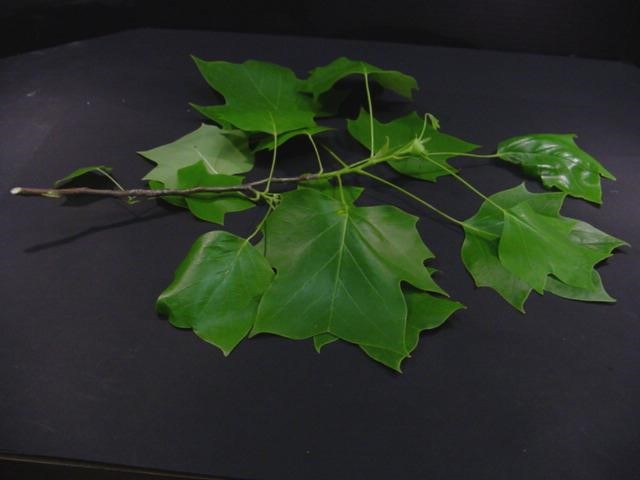

GENERAL DESCRIPTION: This native American tree is very majestic in its’ habit because of the very long central stem (bole) that results in a tall tree with a narrow oval-rounded crown. In nature the tree can be free of branches three quarters of the way up the trunk. Especially characteristic is the unique shape of the bright green leaves that have a square lobed shape. The flowers are “tulip like” with large yellow petals, many stamens, and a cone like arrangement of the many free pistils (similar to Magnolia). Since these flowers are borne high in the tree they are often overlooked. The bark is a grayish brown with tight interlacing rounded ridges separated by grayish crevices.
HABIT AND SIZE: 70-90′ tall and half as wide (can grow to 200′). In situations with no crowding by adjacent trees the form is pyramidal when young and becoming towering and wide spreading (oval-rounded) with several large, outstretched, high branches when mature.
LANDSCAPE VALUE: A very noble tree for the larger landscape. The tall straight stature, the uniquely shaped leaves and the flowers are all positive assets. The cone like fruit can be a messy problem. Jefferson surrounded his home Monticello with these trees.
LEAVES: Alternately arranged, simple 3-8″ in both length and width with a broad squared off apex, short squared pointed lobes on each side and a rounded to squarish base. Color bright green on top and paler on the underside. Turning golden yellow to yellow in the fall.
FLOWERS: Perfect, terminally located, solitary and bell-shaped. 3 petaloid sepals that are recurved, 6 yellow spreading petals in 2 rows, numerous stamens and pistils.
FRUIT: An aggregation of samaras into a cone-like structure 2-3″ long that turns brown in the fall and persists through the winter.
BUD: Terminal buds 0.5″ long with scales not overlapping (valvate) greenish to reddish brown and covered with a waxy bloom and white spotted. The buds look like a ducks bill. Lateral buds much smaller but similar in appearance.
DISEASES AND INSECTS: Aphids are a significant problem with the production of “honeydew” followed by sooty mold fungus causing a blackening of the leaves.
HARDINESS AND RANGE: Zones 4-9. Mass. to Wise. south to Fla. and Miss.
CULTIVARS: ‘Aureo-marginatum’- has yellow or greenish yellow margined leaves, ‘Fastigiatum’- an upright form, ‘Integrifolium’- a lobeless square leaved form.
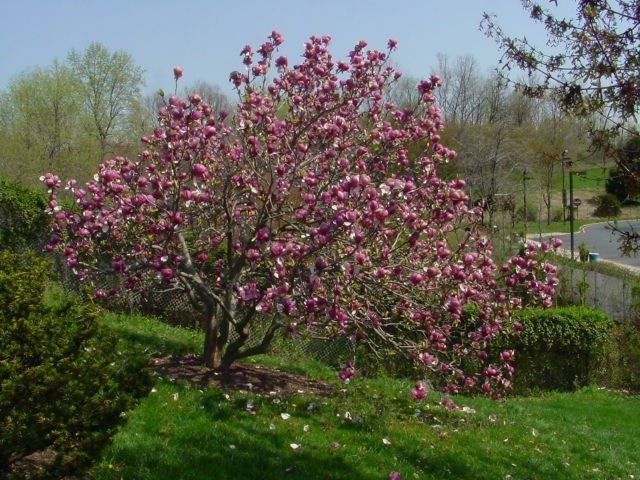
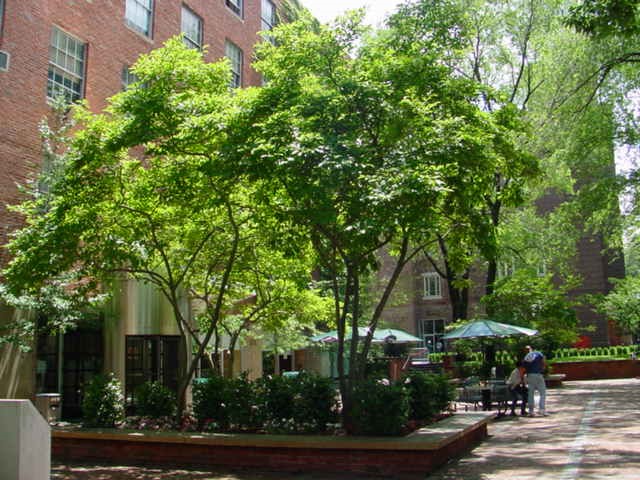
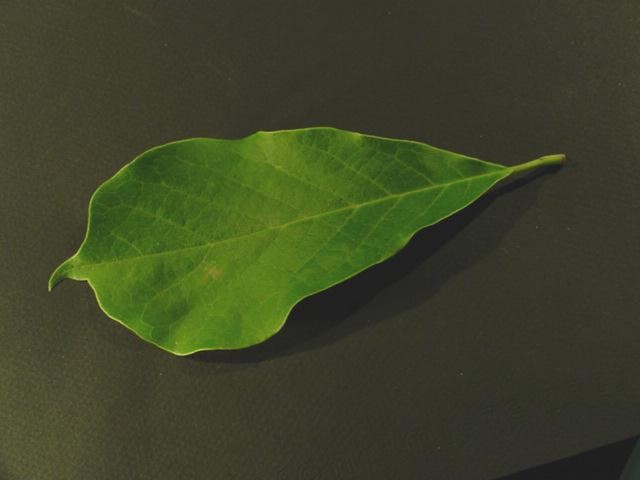

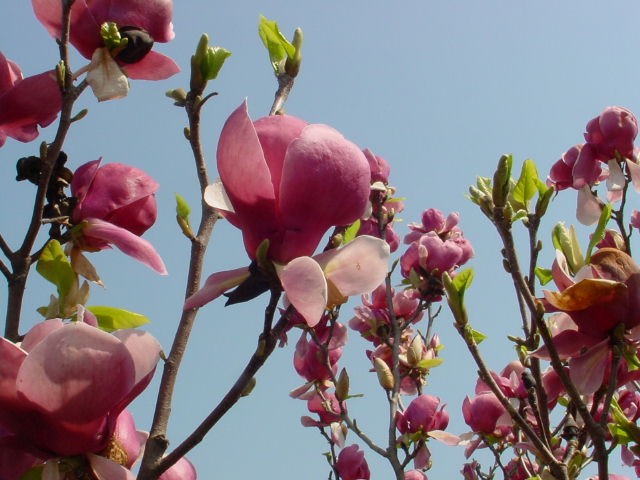

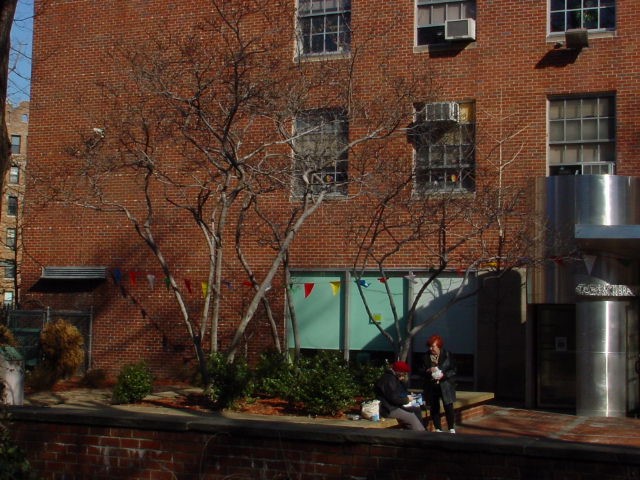
GENERAL DESCRIPTION: Along with the cherry blossoms the flowering of the Saucer Magnolia is perhaps the most anticipated of the spring blooms. The very large multi-petaled flowers emerge in mid-spring before the leaves from large fuzzy buds. This medium sized tree has large green leaves with a hairy underside that turns a yellow-brown in the fall, a smooth handsome gray bark, and wide spreading low branches. It can grow either as a shrub or small to medium tree.
HABIT AND SIZE: 20-30’high and about as wide. Upright in form when young but developing several low branches and becoming spreading to form a pyramidal to round outline.
LANDSCAPE VALUE: A great tree to be used in small to medium landscapes, malls, courtyards, near buildings or grouped in a larger landscape. Wonderful spring bloom but susceptible to late season frosts about 1 in 3 or 4 years.
LEAVES: Alternately arranged, simple, 3-6″ long and half that wide, inversely egg shaped (obovate) or broad-oblong tapering at the base and short pointed at the tip. Color dark green and smooth on top and paler and finely hairy underneath. Fall color yellowish-brown.
FLOWERS: Large (5-10″ dia.) complete (all parts), white to pink or purplish tepals (usually 9) the inside white and the color on the outside. Many stamens and numerous hypogynous pistils covering an elongated receptacle.
FRUIT: The pistils adhere to each other to form a fleshy and somewhat woody or papery cone like fruit with each pistil opening to expose a red berry-like seed hanging by an extensile like thread.
BUD: Large hairy and silky feeling terminal buds, 0.5-0.75″ long and smaller lateral buds.
DISEASES AND INSECTS: A number of mildews, leaf blight, leaf spot, dieback cankers, leaf scab and scales but nothing too serious. The sapsucker bird bores holes in trunk but no harm.
HARDINESS AND RANGE: Zones 4-9. No native range.
CULTIVARS: Numerous. The saucer magnolia is itself a chance hybrid of M. denudata (heptapeta) and M. lilliflora (quinquepeta) found in 1820 by Chevalier Soulange-Bodin who raised the hybrid in his garden where it first flowered in 1826. ‘Lennei Alba’- white flowers, ‘Lennei’- purple to magenta late season flowers, ‘Jane’- vivid purple flowers.
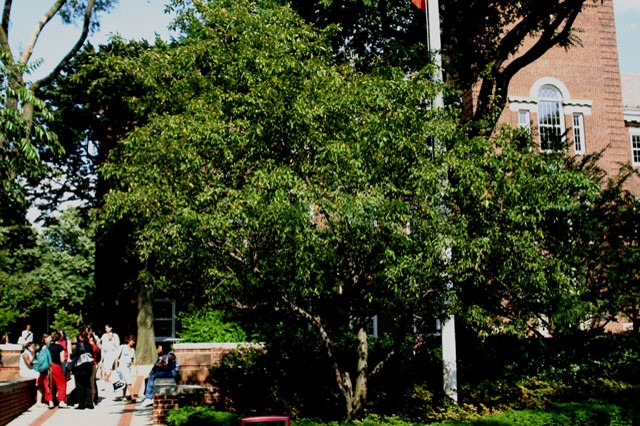
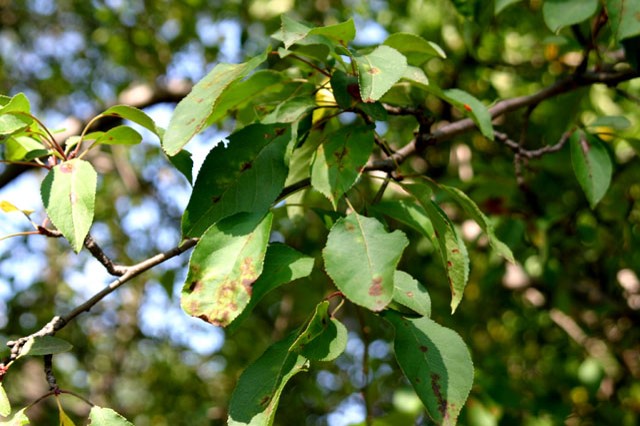
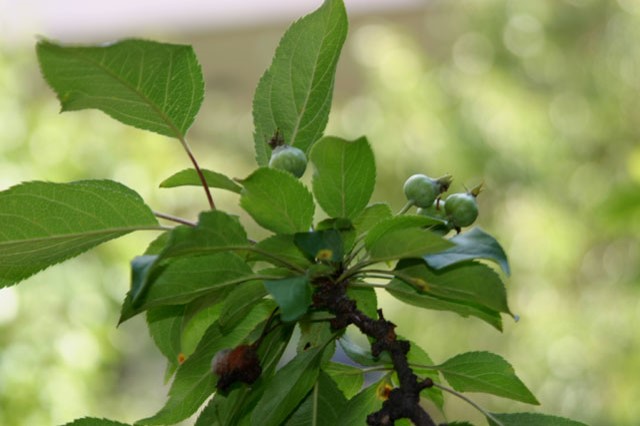



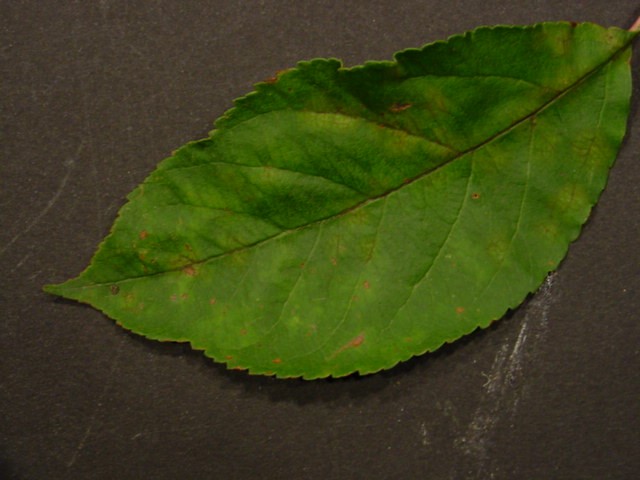
GENERAL DESCRIPTION: The crabapples are the most important flowering trees in northern gardens because of their earliness, consistency and hardiness. They provide spring flowering, attractive fruit, pleasant foliage and form and winter interest due to branching patterns and bark color and texture. There are 25 species and probably Boo cultivars of crabapples and as a group the genus Malus has a great deal of genetic diversity and freely hybrize with each other. Even self-pollinated plants produce a range of phenotypes in the seedling population. However there are several species that are generally used in horticulture: The ‘Japanese Flowering Crabapple’, Malusfloribunda, is an old standard with carmine buds and white flowers and yellow to red fruit. It has a broad- rounded habit and grows to 25′. The ‘Tea Crabapple’, Malus hupehensis, has a very elegant vase-shaped growth habit and dark pink buds that open to white flowers. It grows to 25′. It is susceptible to fire blight. The ‘Sargent Crabapple’, Malus sargentii’ is a small shrubby species (6-10″) with white flowers, bright red fruit and good disease resistance. Malus sieboldi var. zumi ‘Calocarpa’ grows to 25″ with a dense rounded habit, deep red buds, and white flowers. It resists scab but is susceptible to fire blight.
HABIT AND SIZE: Generally growing to 25′ with a rounded habit and unique branching.
LANDSCAPE VALUE: Outstanding as a group for small trees in the landscape.
LEAVES: Generally elliptic to broad ovate, 2-4″ long, with a an acute tip, a broad base, serrated margins generally smooth on top and slightly hairy underneath. Colors range from green to reddish-purple. When green a typical “apple green”
FLOWERS: Typical rose family flowers, 5-merous, numerous stamens, inferior ovary, flower parts from a hypanthium. Color from white to pink to red-pink.
FRUIT: Small (0.5″ dia.) pomes from yellow to red in color.
BUD: Ovoid with overlapping scales with protruding hairs, reddish-brown, on spur branches.
DISEASES AND INSECTS: Apples are prone to many diseases; fireblight, apple rust, scab, canker, scale, borers and aphids as well as mildew and various chewing insects.
HARDINESS AND RANGE: Zones 4-8.
CULTIVARS: As many as Soo. ‘Donald Wyman’ commonly used.

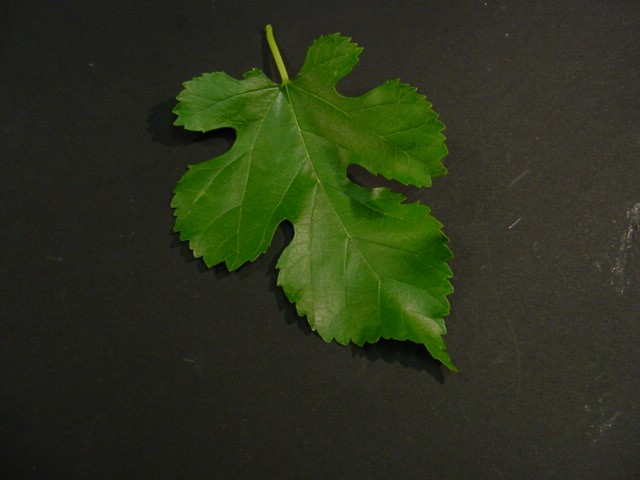


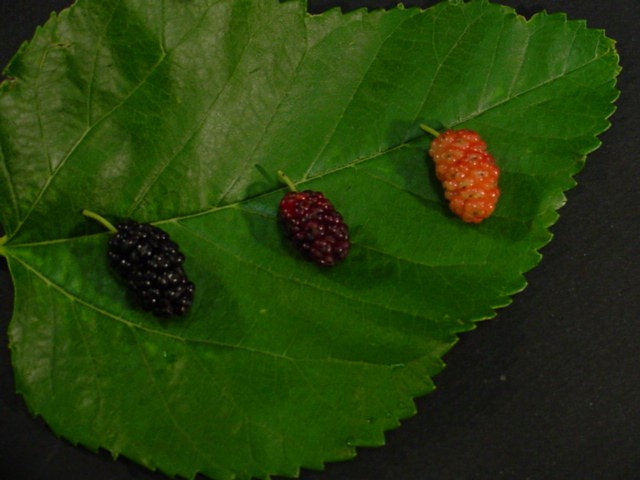
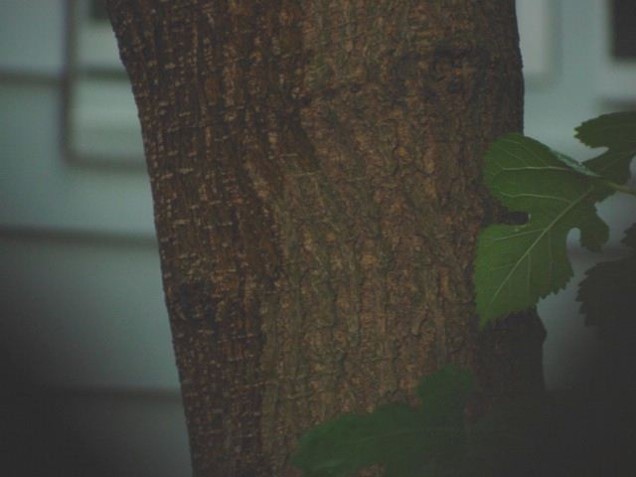
GENERAL DESCRIPTION: This is a tree that virtually no one plants in the landscape, however it is a tree that is frequently found as a “volunteer” because of seed dissemination by birds who love the sweet purple fruits that most people find obnoxious because they stain the sidewalks, driveways and get on one’s shoes which carry the stain indoors. The form of the mulberry is a rounded look with a ragged appearance. The leaves are quite variable in form (heterophylly) with characteristic lobing patterns (or not). The bark is a light orangish-brown on young trees.
HABIT AND SIZE: 30-50′ high and as wide but usually a smaller tree. A very dense rounded crown with many close together slim branches and some ‘witches broom’ tendencies that gives the tree a disorganized look.
LANDSCAPE VALUE: None except for the most adventurous using unique cultivars.
LEAVES: Alternately arranged, simple, either undivided or variously lobed with margins that have serrations or dentations. Ovate to broad-ovate in shape 2-7” long and as much as 6″ wide. Tip acute or short acuminate and rounded or cordate (flattened) and oblique at base. Color dark green and smooth on topside, slightly hairy on veins beneath. Petiole 0.5-1″ long.
FLOWERS: In small hanging cylindrical catkin-like spikes with male and female flowers on separate plants and these plants having perfect flowers as well (poly-gamodioecious). Flowers white or pinkish, perianth 4 parted, stamens 4 incurved in the bud, ovary small sessile.
FRUIT: Multiple fruit of small fleshy droplets, white, pinkish or purplish violet. Sweet.
BUD: Lateral buds only, to 0.25″ long with 3-6 overlapping scales. The sharp to blunt pointed buds are often set oblique to the leaf scar, appressed to the stem, light brown to reddish brown with the edges of the scales finely hairy.
DISEASES AND INSECTS: Bacterial blight on leaves and shoots, leaf spots, cankers, mildews, scales, two-spotted mites and other pests. More problems in the south
HARDINESS AND RANGE: Zones 4-8(9). Imported from China for silkworm trade.
CULTIVARS: Morus rubra is similar to M. alba but with large papery unlobed leaves. ‘Chapparral’ and ‘Urbana’- fruitless, weeping with dark green leaves, ‘Mapleleaf- a fast-growing fruitless form with maple like leaves.

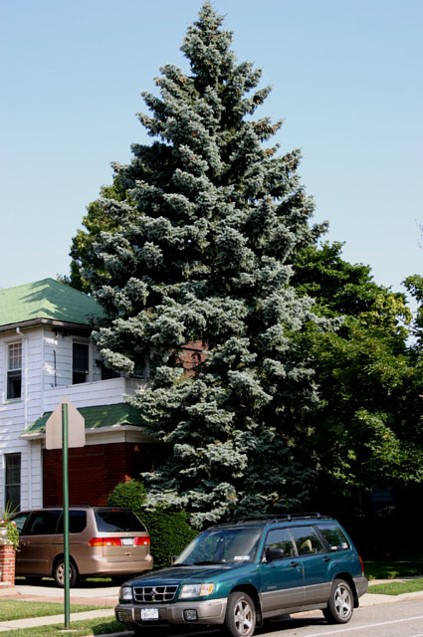


GENERAL DESCRIPTION: This is one of the most frequently planted of the conifers because of its rigid pyramidal habit, stout prickly needles and overall silvery-blue color. It is so dense that there is no view through the foliage. It is a magnificent tree but these characteristics also make it difficult to effectively use in landscaping because it is so dominant that it detracts from the rest of the plantings.
HABIT AND SIZE: 30-60′ high (to 135′ in the wild) with a spread one third as wide, strongly pyramidal when young becoming more linear pyramidal and open when older. The branches emerge horizontally covering the trunk all the way to the ground. The foliage is so dense it blocks all view of plantings to its’ rear.
LANDSCAPE VALUE: Excellent as a specimen tree or in groupings. Best towards the rear of a large landscape. Tends to distract from other plantings if in the foreground. Becomes somewhat scraggy with age.
LEAVES: Emerging all around the stem but more so on the top the 4 sided sharp pointed leaves are curved and have a petiole that leaves a woody peg when they abscise. They are 0.75-1.25″ long and vary in color from dull green to bluish to silvery-white and have about 6 stomatic lines on each side.
FLOWERS: Terminally or axillary positioned in catkin like inflorescences. Staminate flowers yellow or red consisting of numerous spirally arranged anthers with connective enlarged at apex and scale-like. Pistillate flowers greenish or purple the spirally arrange 2-ovuled scales each subtended by a small bract.
FRUIT: 2-4″ long cylindrical ovoid or oblong cones, that are pendulous or spreading, with persistent scales. The seed has a large thin wing.
BUD: Broady conical to nearly spherical with a blunt apex. The scales are loosely appressed with the apex often reflexed and the lowest ones keeled and long pointed. Not resinous.
DISEASES AND INSECTS: Spruce gall aphid, budworm, spider mite and Cytospora canker.
HARDINESS AND RANGE: Zones 2-7. Western United States.
CULTIVARS: ‘Thompsenii’- one of the best, ‘Montgomery’- a dwarfbush form, ‘Bakeri’- a very dwarf form.

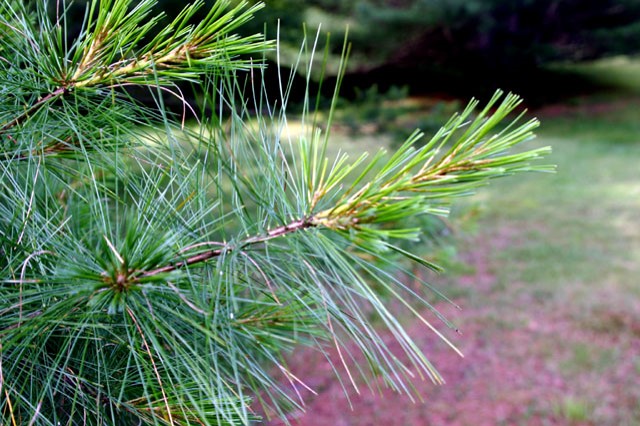
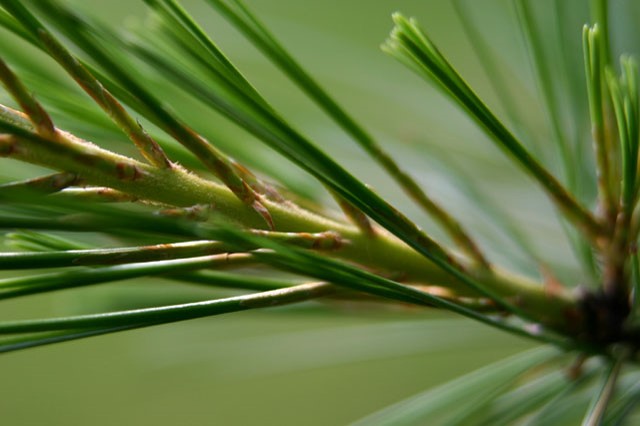
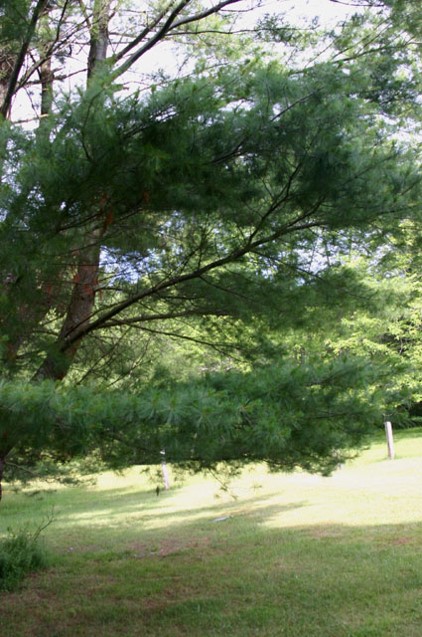
GENERAL DESCRIPTION: Perhaps the most distinguished pine for general landscape use, particularly in the larger landscape. When young it has a strong and dense symmetrical. pyramidal habit without being overbearing like the Scotch Pine or the Colorado Spruce. As It ages it stretches out with the lower branches becoming spreading and horizontal with the upper branches having a more ascending orientation. The real strength of this tree are the 5 needled fascicles of thin, flexible needles that give the tree an overall soft and plumy look. There are pendulous and slow growing cultivars that can be used in the small garden. The bark on mature trees develops large resinous plates separated by deep fissures.
HABIT AND SIZE: 20-80′ high and about half as wide (can grow to more than 150′) with asymmetrical, pyramidal, soft and pleasant appearance. As it matures the crown is composed of horizontal lower branches and more vertical upper branches. Plume like in overall look.
LANDSCAPE VALUE: Very good for the larger landscape as a specimen tree, in a grouping or pruned to act as a hedge. The fine needles give this tree a look like no other conifer.
LEAVES: In fascicles of- soft and slender, 0.5” long, minutely serrulate, soft bluish-green with white stomatic lines on the inner 2 surfaces and the sheaths are deciduous.
FLOWERS: Staminate flowers axillary, clustered at the base of young shoots, catkin-like, yellow, composed of numerous spirally arranged 2-loculed anthers with connectives enlarged and scale-like at apex. Pistillate flowers lateral or subterminal, pinkish, of numerous spirally arranged scales in the axils of small bracts, each bearing 2 ovules inside.
FRUIT: Cones cylindrical, slender and often curved, 3-8″ long, on stalks 0.5-1.0″ long, dehiscent with scales that are thin and flat each with a terminal umbo. The seeds are brown mottled with black 0.25″ long with a wing about 1″ long.
BUD: Cylindrical or conical, sharp-pointed, 0.25-0. 75″ long, scales appressed but free at the tips, usually resinous.
DISEASES AND INSECTS: White pine blister rust and aphids and pine spittle bugs.
HARDINESS AND RANGE: ZONES 3-8. Newfoundland to Georgia west to Iowa.
CULTIVARS: ‘Fastigiata’- an upright form, ‘Pendula’- a nice weeping form.




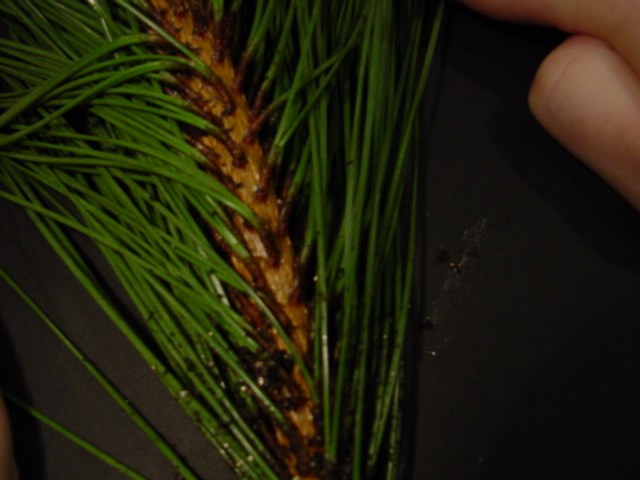
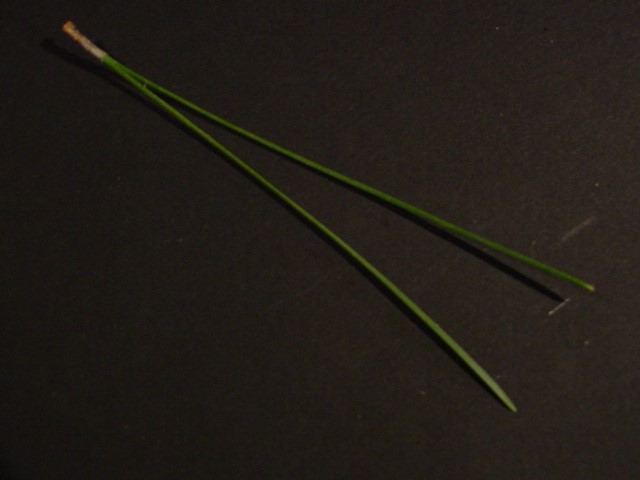
GENERAL DESCRIPTION: This tree is used extensively along coastal areas because of its’
salt tolerance. It is a distinctively asymmetrical tree with wide-spreading branches that contain stiff, prickle-pointed, lustrous dark green needles that are in fascicles of two. In the
spring it forms elongated, silky white, candle-like buds. This is not a particularly long lived
tree and generally does not grow to more than 25′. Groupings of these trees gives the landscape an open natural look.
HABIT AND SIZE: Uneven but loosely pyramidal when young becoming more asymmetrical with age developing spreading often pendulous branches.
LANDSCAPE VALUE: A wonderful plant for seaside plantings and for groupings in a larger
landscape. Often used as accent trees in parks and along parkways. Smaller cultivars are useful as accent or focal points in a small “Asian” style garden. Used for bonsai plants.
LEAVES: In fascicles of 2, slender and bright green, 3-4.5″ long, slightly twisted, with a stiff
pointed apex, a minutely serrulate edge and stomatic lines on each surface. The persistant
sheaths are about 0.5″ long and ending in 2′ long filaments. The leaves persist for 3-5 years.
FLOWERS: Staminate flowers axillary, clustered at the base of young shoots, catkin-like,
yellow, orange, or scarlet, composed of numerous spirally arranged 2-loculed anthers with
connectives enlarged and scale-lfke at apex. Pistillate flowers lateral or subterminal, greenish or purplish, of numerous spirally arranged scales in the axils of small bracts, each bearing 2 ovules inside.
FRUIT: Conical-ovate cones 2-3″ long, brown, short-stalked, dehiscent with the scales flattened and with a small dorsal, usually prickly, umbo. The seeds are grayish-yellow, about 0.25″ long and with a 0.5-0.75″ wing.
BUD: The terminal buds are ovoid-cylindrical, with a pointed apex and scales that are
appressed, with fringed, free tips that are gray or silvery-white.
DISEASES AND INSECTS: Almost all of the 2 needled pines are suffering from a fungal disorder that has descimated the Scotch Pine plantings.
HARDINESS AND RANGE: Zones 3-6 or 7. Japan.
CULTIVARS: ‘Compacta’ – dense irregualr large shrub, ‘Mt Hood Prostrate’ – name speaks for
itself, ‘Mini Mounds’ – as name implies.


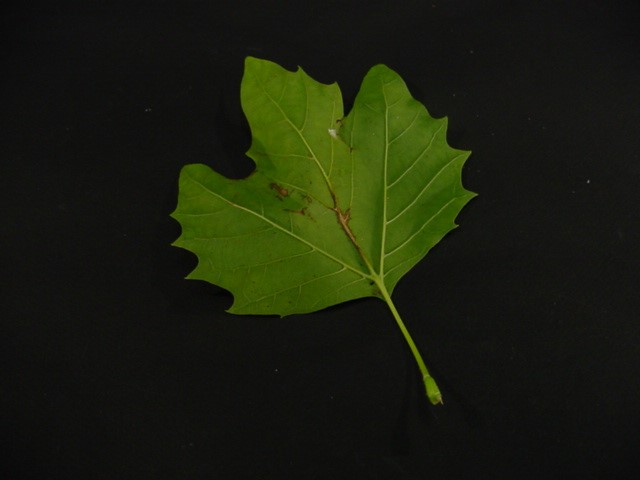

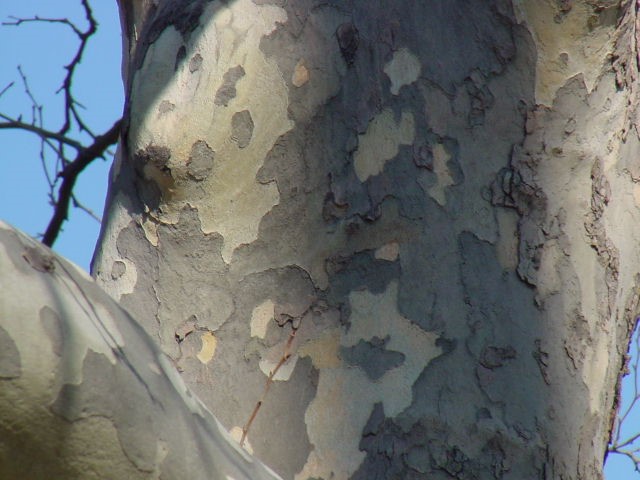
GENERAL DESCRIPTION: This is the most widely planted shade tree in cities worldwide. It is a hybrid between P. orientalis and P. occidentalis (American sycamore) discovered in 1663. It is extremely pollution resistant, thrives in a variety of soils, endures soil compaction, is resistant to diseases, provides a broad open shade, has interesting mottled bark and is fast growing. The bark is particularly beautiful peeling into a patch work or creamy white, green-gray, and light brown. The large multiple spreading branches are striking in all seasons.
HABIT AND SIZE: 70-100′ tall and 65-80′ wide with a massive trunk and sturdy, wide-spreading branches. Its outline is pyramidal when young developing to wide spreading on maturity. The interior is open so that the area under the canopy feels light and airy.
LANDSCAPE VALUE: Extremely widely used (perhaps overused). A highly adaptable tree for large landscapes as well as urban settings, where proper pruning is advised. So heavily planted it is almost a monoculture in some areas which makes any disease problems a serious matter. Excellent year around appeal because of shape and unique bark.
LEAVES: 6-7” long and 8-10″ wide 3-5 lobed (very similar to those of maple). The lobes triangular- ovate or broad triangular with none or a few dentations. The sinuses are acute or rounded penetrating one third of the way into the blade. Hairless (glabrous) at maturity. Color is a medium to dark green. The petiole is 2-4″ long.
FLOWERS: Inconspicuous male and female flowers appear in April on the same tree (monoecious). Calyx (sepals), corolla (petals), androecium (stamens) and gynecium (pistils) 3-8 units. Inflorescence a dense globular head on a nodding peduncle.
FRUIT: A hard head of numerous single seeded nutlets surrounded by long hairs. The so called “itchy balls” played with by children.
BUD: Lateral buds enclosed by the base of the petiole. Buds 0.25-0.375″ long conical and blunt pointed with three scales. The outer scale smooth, glossy dark reddish brown, second green and gummy and the innermost scale covered with long rust colored hairs.
DISEASES AND INSECTS: Cankerstain fungus is very serious as is anthracnose and lace bug.
HARDINESS AND RANGE: Zones 4-9a.
CULTIVARS: ‘Bloodgood’, ‘Columbia’, ‘Liberty’, ‘Yarwood’ disease resistant.
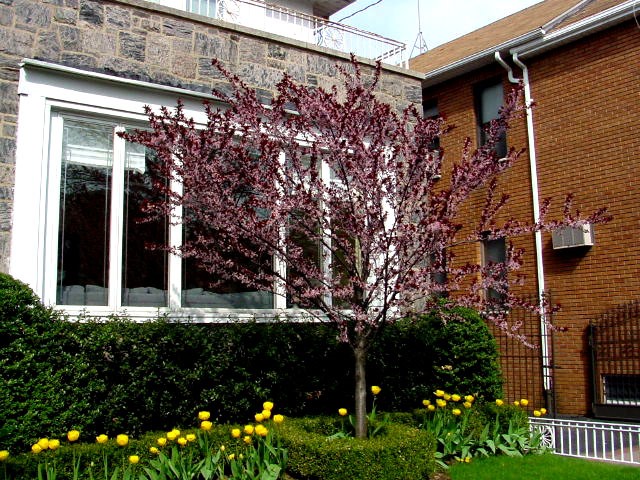

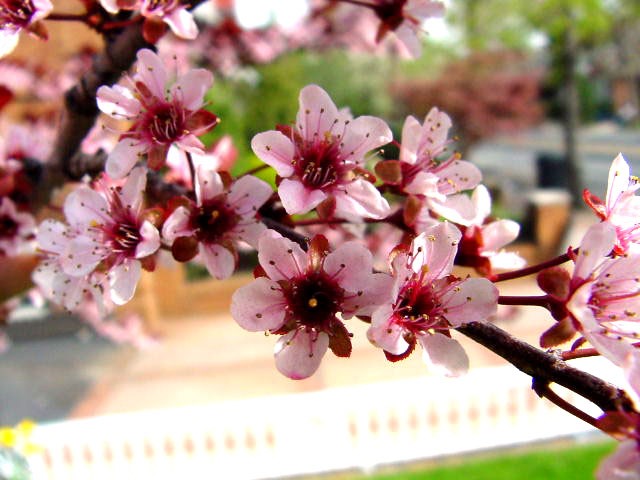
GENERAL DESCRIPTION: The actual species is not used in horticulture but the many cultivars and hybrids are popular for their white to pink flowers and purple foliage. This is a pleasant tree to look at with its colored foliage but it also can dominate the small landscape because of the density of its foliage. It blooms in April before the leaves with a plethora of white to pinks flowers. This is a small tree with a rounded form and ascending branches.
HABIT AND SIZE: 15-30′ high and 15-25′ wide with an upright branching rounded habit to shrub like habit.
LANDSCAPE VALUE: The species is not used but the cultivars and hybrids are extensively used for their purple foliage. They are often used in small landscapes as focal points or foundation plantings and in larger landscapes in groupings. Dense look in the landscape.
LEAVES: Alternately arranged, simple, ovate to elliptic or obovate 1.5-2.5″ long and 1-1.25″ wide. The tip is pointed to broadly wedged-shaped or rounded. The margins have finely obtuse serrations. They are smooth and green purple on top and lighter underneath with hairs on the midrib and major veins. The petiole is 0.5″ long and is glandular at blade base.
FLOWERS: Rose type 5 parted, perfect, 0.75-1″ in diameter, fragrant, white to purple-pink, opening in April before the leaves.
FRUIT: 1″ diameter edible drupe, reddish in color with a waxy bloom. June-August.
BUD: Small, linear pointed with overlapping scales.
DISEASES AND INSECTS: Numerous, aphids, borers, scale, tent caterpillars, canker, leaf spots.
HARDINESS AND RANGE: Zones 4(5)-8. Western Asia, Caucasus.
CULTIVARS: ‘Atropurpurea’- upright, dense, purple leaves, from before 188o; P. xblireianaa hybrid betweeen P. cerasifera ‘Atropupurea’ and P. mume- many petaled flowers, small tree, leaves turn to green; P. xcistena- a cross between P. cerasifera ‘Atropupurea’ and P. pumilasmall tree or shrub, ruby purple to reddish purple foliage, fragrant pinkish flowers. Many other cultivars and hybrids.





GENERAL DESCRIPTION: This is the tree that most represents the beauty of spring and the characteristics of an all season tree for the yard or landscape. The flowers, which open in May, are single to semi-double and are produced in profusion. The newly emerging foliage is bronze to a fresh green and the fall foliage is bronze to muted red. The bark is smooth and a burgundy color with many horizontal lines of lenticels. This is not a long lived tree (15-50 years).
HABIT AND SIZE: 25-35′ high and as wide in a vase-shaped to rounded outline.
LANDSCAPE VALUE: Excellent for its profuse flowering, fall foliage, shade, and bark.
LEAVES: Alternately arranged, simple, 2-5″ long and 1.25-2.5′ wide, ovate lanceolate in shape with an abruptly long acuminate tip and a round tapering base. The margins serrated with the serrations tapering to a stiff tip (aristate). The top and bottom are slightly rough but not hairy. the petiole is 0.5-1″ long and usually has 2-4 glands. The leaf color is spring green to bronze on emerging leaves becoming deep green and turning to bronze or reddish in the fall.
FLOWERS: White or pink, double or semi-double 1-1.5″ across in 3-5 flowered clusters which are on long or short peduncles and which bear large fringed bracts that appear with or just before the foliage. The individual flowers are on 1″ pedicels, have 5 sepals, 5 to numerous petals, few to numerous stamens and an inferior ovary.
FRUIT: When present, a drupe the size of a pea.
BUD: Prominent, with overlapping scales, reddish in color on spur branches.
DISEASES AND INSECTS: The genus Prunus is susceptible to many diseases and insects.
HARDINESS AND RANGE: Zones 5-6 and south. Japan, China and Korea
CULTIVARS: Numerous cultivars and most trees grafted onto P. avium stock 4-6′ up on trunk. ‘Amanogawa’- upright habit, single to semi-double pink flowers, ‘Kanzan’ (sometimes ‘Kwanzan’ or ‘Sekiyama’) – the standard and hardiest of the double flowered, ‘Mt Fuji’- pink buds open to white semi-double 2′ flowers early in spring, ‘Shirofugen’- pink buds to white flowers changing to pink and with many petals (30).
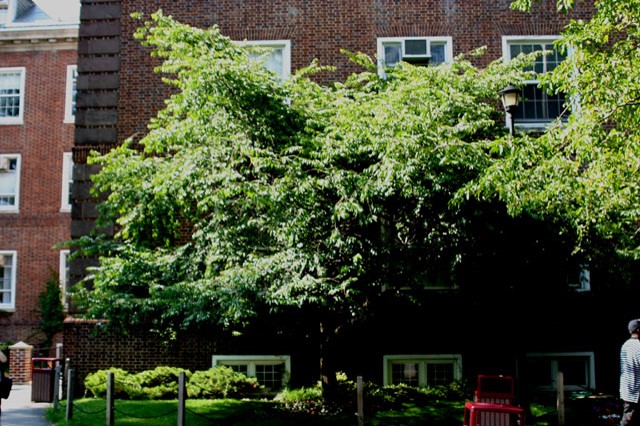
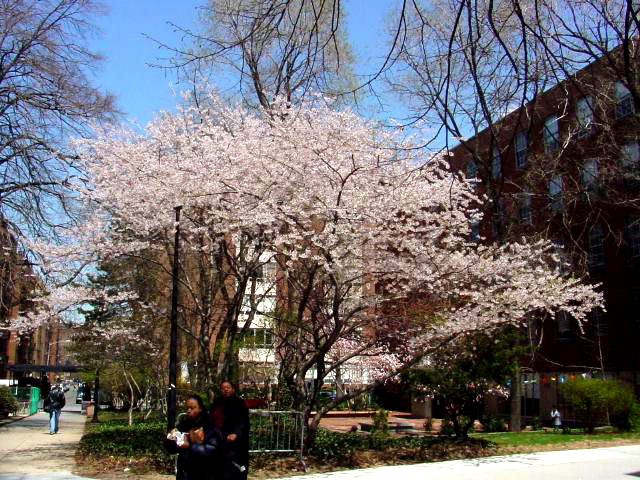
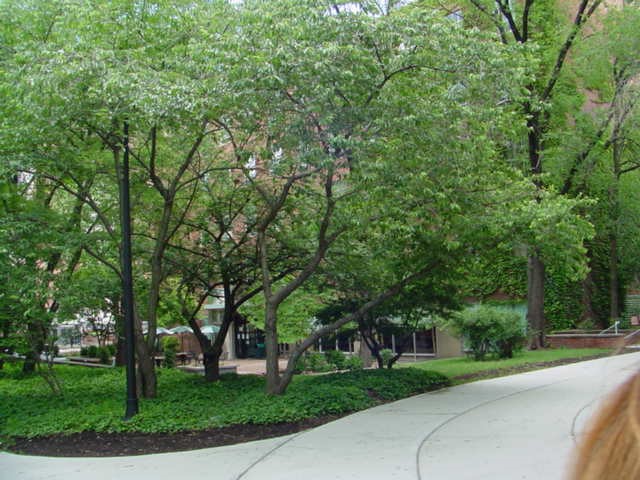
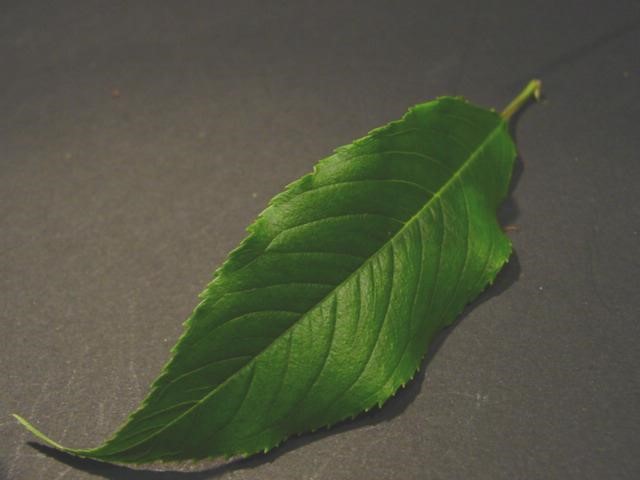
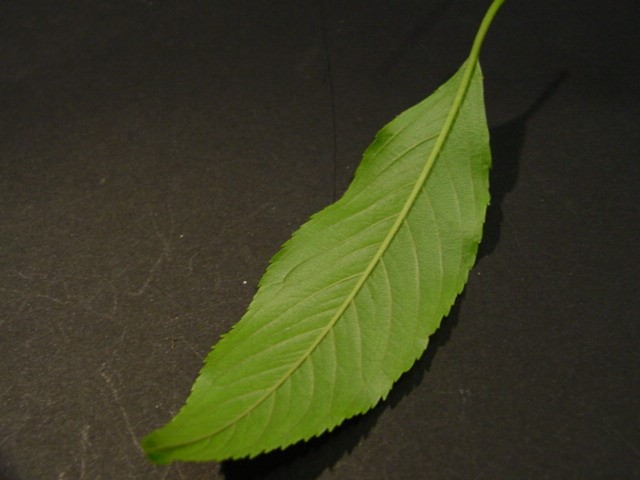

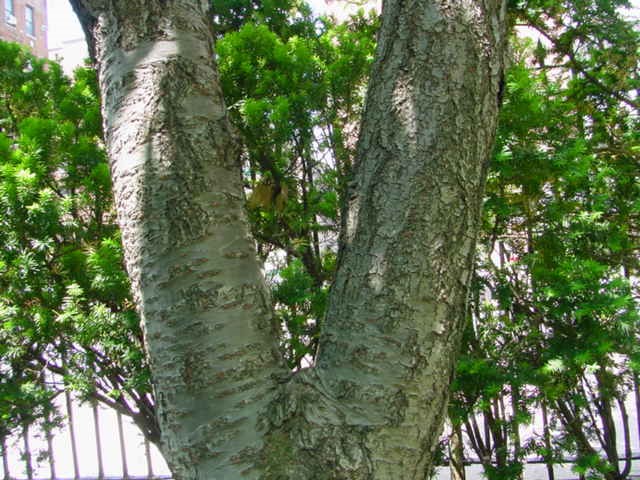
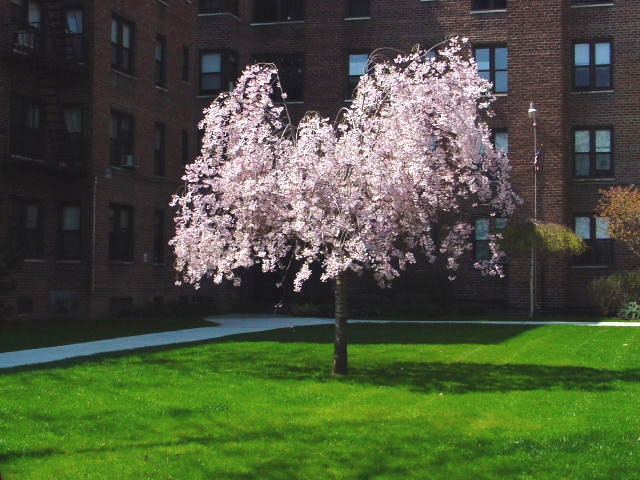
GENERAL DESCRIPTION: Along with P. sargentii the Higan Cherry is a very adaptable long lived cherry. It provides an attractive display of white to pinkish flowers in April before the leaves emerge. It is moderate in size (20-40′ high) and upright and somewhat open spreading habit that fits in well with other plantings. The leaves are moderate in size and turn an attractive yellow in the fall. The bark is a weeping gray-brown with horizontal lenticles that gives it winter interest. The actual species is not often found in gardens, rather the several cultivars especially ‘Pendula’ which is a favorite weeping form and is often the scion for the small weeping cherries that are so common in small landscapes.
HABIT AND SIZE: 20-40′ high and 15-30′ wide with an upright spreading to rounded form.
It has a forked trunk and erect twiggy branches with slender whip-like twigs.
LANDSCAPE VALUE: Excellent for the smaller landscape and massed in the larger landscape. Wonderful early spring flowers, open habit, attractive bark. Cultivars excellent.
LEAVES: 1.5-3″” long and 1-2″ wide, lanceolate to ovate-lanceolate or ovate, abruptly acuminate or short-pointed, narrowed to the base. The margins are doubly sharp-serrate. The color is lustrous green on top and dull with hairs on the veins underneath. The petioles are short and they and the margins are without glands.
FLOWERS: Rose family type 5 parted flowers, 0.5-1″ pink to white, on 1″ long hairy pedicels, in 2-5 flowered umbels before the foliage emerges in Late March to early April. The bud scales do not enlarge and the sepals are reddish and narrow, cylindrical or somewhat enlarged at the base.
FRUIT: Globose black about 0.33″ in diameter.
BUD: Linear acute with overlapping bud scales.
DISEASES AND INSECTS: Not seriously affected by disease or insects.
HARDINESS AND RANGE: Zones 4-8(9). Japan.
CULTIVARS: ‘Autumnalis’- semidouble, blooms spring and fall; ‘Pendula’- weeping form; ‘Yae-shidare-higan’- semi-double with pendulous habit.


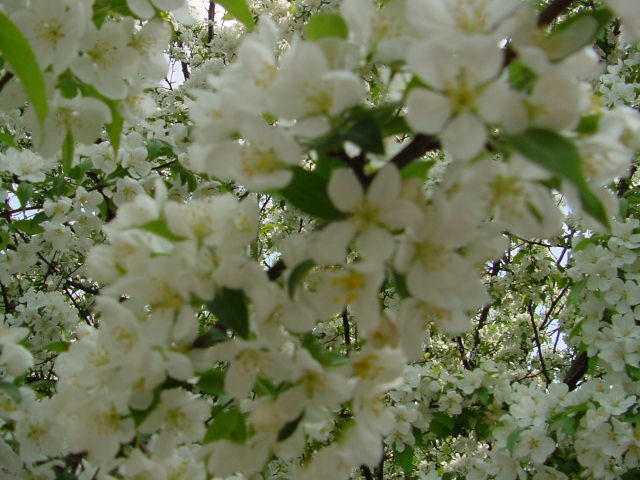


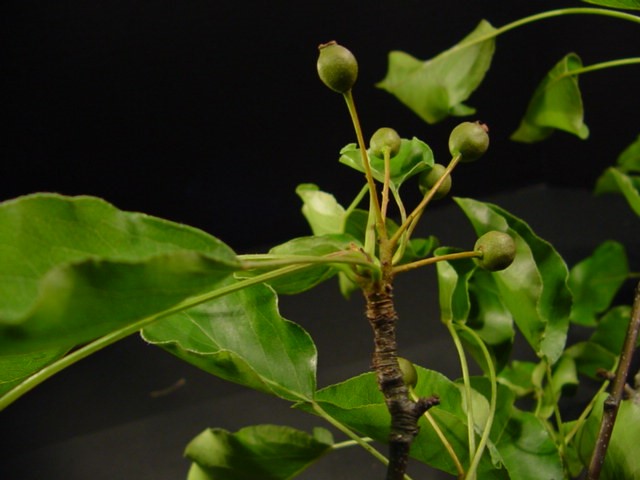

GENERAL DESCRIPTION: The actual species Pyrus calleryana is a thorny, course and irregular tree whose only redeeming feature is a profusion of white early spring flowers. However, the cultivar ‘Bradford’ and subsequent cultivars have a habit, disease resistance, and flowering intensity that make them acceptable for yards, streets and courtyards. The ‘Bradford’ cultivar has an attractive pyramidal shape with many branches originating in close proximity to each other. The summer foliage is shiny green turning to purple red in the fall. The bark is lightly furrowed and grayish brown, developing horizontal lenticels with age. This tree is very adaptable to a variety of soils and tolerates dryness and pollution.
HABIT AND SIZE: 30-50′ high and 20-35′ spread. Pyramidal (tear drop) shape when young becoming broader with time. Rate of growth 1-1.5 to 2-3′ per year.
LANDSCAPE VALUE: Excellent as a street tree and for small residential landscapes. a 3 season tree because it has spring flowers, autumn foliage and an attractive winter habit. Some problems with splitting due to concentrated branch initiation in one area of the trunk.
LEAVES: Alternately arrange, simple 1.5-3″ long and almost as wide, heart shaped with fine serrations. Leaf color shiny green on top and pale on the underside. Slightly malodorous.
FLOWERS: Dense corymbs (3″ dia.) appear in April in NYC with pure white flowers that have 5 sepals and petals, 20 stamens with white filaments and reddish-purple anthers and a pistil with 2 styles, an inferior ovary with 2 carpels each with 2 ovules. Hypanthium 0.125″.
FRUIT: A round pome 0.5″ in diameter olive brown/tan in color and covered in russet dots.
BUD: Terminal and laterals of similar size; large, ovoid and elongated (0.5″), gray-brown and intensely woolly
DISEASES AND INSECTS: Susceptible to fireblight disease but newer cultivars show good resistance. Insect damage not common but pear blister mite damage has been reported.
HARDINESS AND RANGE: Zones 5-8. Korea, Japan and China.
CULTIVARS: ‘Capital’- columnar habit; ‘Chanticleer’, ‘Select’, ‘Cleveland Select’ and ‘Stone Hill’- upright pyramidal, flower heavily, resistant to splitting and fireblight and fall color less than ‘Bradford’; ‘Redspire’- less stiff in outline than ‘Bradford’ and with a yellow-orange to red fall color but very susceptible to fire blight in the South.



GENERAL DESCRIPTION: This is a tree with wide-spreading branches and a rounded crown at maturity. The trunk irregularly branches into spreading and often horizontal stout limbs. A most important lumber tree with hard, strong, tough close grained brown wood that was used for making whisky and other barrels in colonial times. The bright green leaves are undulatingly lobed, gray green on the underside and red or brown in the fall. The bark is light grey and scales irregularly into plates or is deeply fissured with narrow ridges. A slow-growing tree but one of the most handsome of the oaks. It grow best in deep moist well drained acid soils.
HABIT AND SIZE: Mature height of 100′ with a spread of so-So ‘ with some specimens having a spread of over 150’. The young trees have a pyramidal form which goes to upright rounded and then to broad rounded as it matures.
LANDSCAPE VALUE: Although magnificent, this tree is difficult to transplant and slow growing.
LEAVES: Simple, alternately arranged, obovate in outline, narrowed at base, pinnately lobed into 3-9 oblong obtuse ascending entire lobes. The leaves are 4-7” long and 2-4.5″ wide. They are pubescent when young and hairless at maturity. They are dark green on top and pale and more or less glaucous underneath. Their color is grayish and pinkish when young, dark green in summer and turn a brown to a rich red to wine color in the fall.
FLOWERS: Monoecious, staminate flowers of a 4-7lobed calyx with 6 stamens located on clustered pendant catkins. Pistillate flowers solitary or in few to many flowered spikes with an involucre. Each flower has a 6 lobed calyx surrounding a 3 celled ovary.
FRUIT: An acorn 0.375-1.25″ long, ovoid-oblong, enclosed for one quarter of its length by a shallow cup that is a light chestnut-brown and with hairy scales. Acorn matures the first year.
BUD: Overlapping, 0.125-0.25″, broadly ovate, blunt, reddish brown to brown occasionally with some hairs especially at the ends of the bud scales.
DISEASES AND INSECTS: Although white oak is hard, there is a long list of potential problems that occasionally trouble the oaks. These include anthracnose, basal canker, canker, leaf blister, leaf spots, powdery mildew, rust, twig blights, wilt, wood decay, shoe string root rot, various galls, scales, yellow-necked caterpillar, pin borer, flat-headed borer, oak lace bug, leaf miner, leaf miner, oak lace bug and oak mite
HARDINESS AND RANGE: Zones 3-9. Maine to Ontario, Minnesota, Florida and Texas.
CULTIVARS: Some hybrids with Quercus macrocarpa.
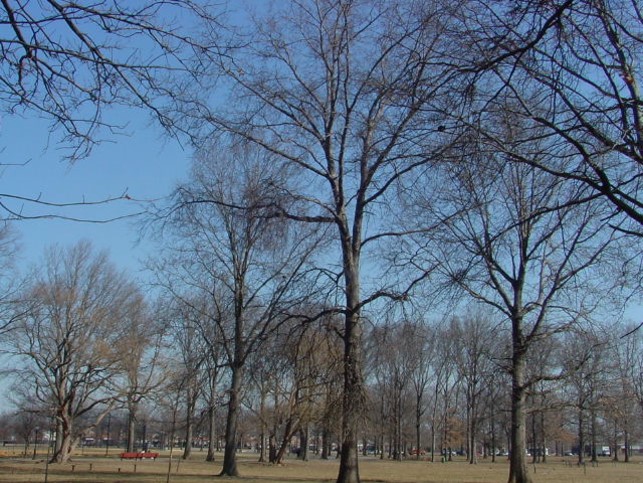

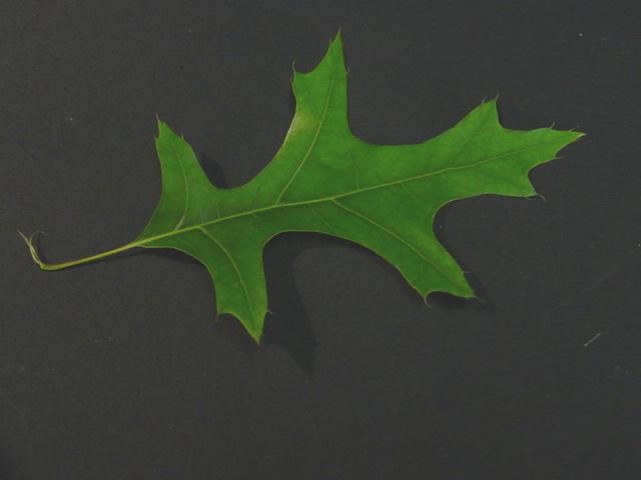
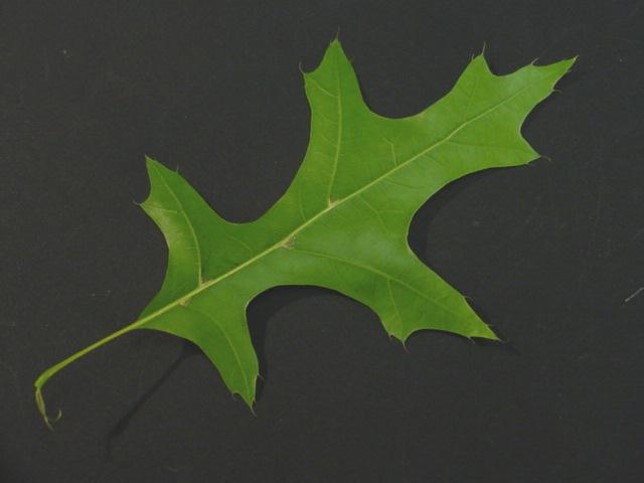

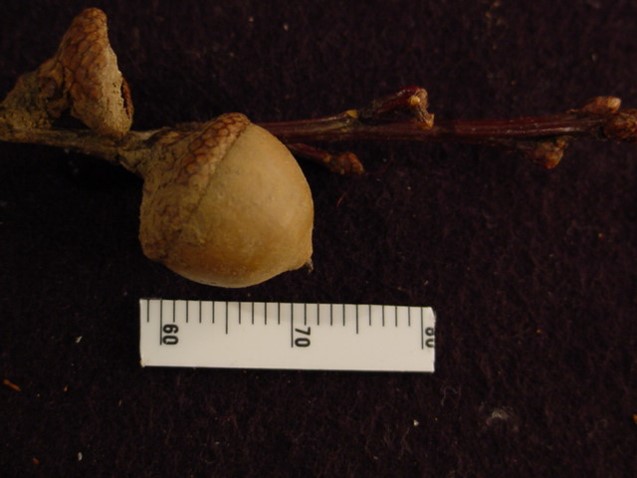

GENERAL DESCRIPTION: This is the easiest oak to grow and transplant and is very commonly planted as a street tree in urban areas. It has ridged dark grey /brown bark which is usually thin. The leaves are similar to red oak but much narrower and they turn reddish brown in the fall. Pin oak produces small acorns. Its general growth habit is pyramidal.
HABIT AND SIZE: Grows up to 70 feet high and 25-40 feet wide. The overall shape tends to be pyramidal with a central peak when young and oval shape when older. The lower branches are pendulous and the middle branches are straight.
LANDSCAPE VALUE: A fast growing oak ( 12-15′ in 5-7 years) it is easily transplanted due to a shallow fibrous root system. Its distinctive pyramidal habit, lustrous green leaves and scarlet fall color make this a favored tree for streets and parks. Hardy in zones 4-8.
LEAVES: Range in length from 3-6 inches, are elliptic to oblong, pinnately lobed with 5-9 bristle tipped lobes and deep sinuses. They are bright green above and pale below and have tufts of brown hairs on the vein axils on the underneath side. The leaves turn scarlet in the fall.
FLOWERS: In late spring staminate flowers are borne in yellow-green drooping catkins and the pistillate flowers are borne on inconspicuous spikes.
FRUIT: Pin oak produces a hemispherical acorn that is 1/ 2″ long and wide that is light brown and enclosed about 1/3 by a saucer like cup. These nutlets are born singly or in clusters.
BUD: Overlapping buds (imbricate) that are conical to ovate and sharply pointed are borne on pin-like twigs and spurs.
HARDINESS AND RANGE: Zones 4-8(9). Central Midwest to North Carolina. Great lakes down to central North Carolina and west to NE Oklahoma.
DISEASES AND INSECTS: Gall can cause problems. Iron chlorosis is a problem where the soil pH is high.
CULTIVARS: “Crownright” has non-weeping lower branches at an angle of 30-60 degrees with verticle and “Sovereign” has lower branches at 45-90 degree angles.
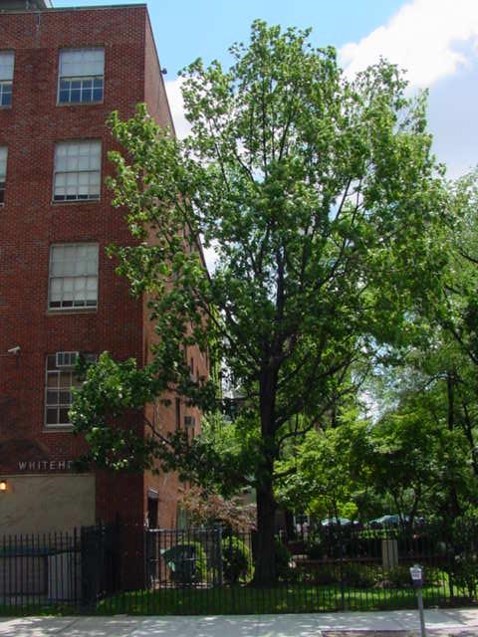
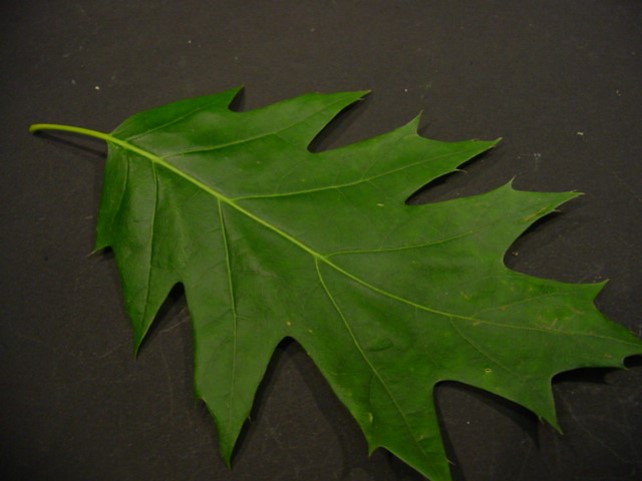




GENERAL DESCRIPTION: The red oak is a large tree with spreading branches and a rounded crown. Growing on moist, loamy, sandy, rocky and clay soils frequently in pure stands; it is the northern most eastern oak and the most important species for lumber that is used for flooring, furniture etc. Springtime leaves are bronze-red in color turning to a lustrous green in summer and to russet red to bright red in the fall. It has brown acorns which are among the first to ripen in the fall and are an important food source for deer and wild turkeys. Its shallow root system makes it easy to transplant but susceptible to drought. The bark of older trunks can be almost black and broken up by flat ridges with shallow fissures resembling ski tracks. Younger barks lack these ridges and are generally smoother in appearance.
HABIT AND SIZE: 60-80′ in height and can spread up to 75′ . Can grow to 100′ in the wild.
LANDSCAPE VALUE: A fast growing oak (2’/yr over 10 yrs) that is easy to transplant and which gives a large nice rounded appearance in an open space such parks and golf courses.
LEAVES: alternately arranged, 4·5 to 8.5 ” long and 4-6″ wide, oval or elliptical in shape, pinnately lobed with 7-11 wavy lobes that are divided less than half way to the midvein. Dark green above and pale yellow underneath with tufts of brown hair along midvein.
FLOWERS: staminate flowers engendered from catkins 4-5 ” long and calyx separated in 4-5 rounded lobes. Pistillate flowers from spikes with bright green stigmas. Monoecious
HARDINESS AND RANGE: Zones 4-8. Eastern United States and Canada, Nova Scotia to Pennsylvania west to Minnesota and Iowa
FRUIT: An acorn 3/ 4-1″ long borne alone or doubly ripening the second season, with a nut that is oblong, light brown color and pointed at the apex. Caps cover the upper quarter.
BUD: Overlapping, 1/4-1/ 3″ long, reddish brown, pointed at apex and with rusty brown to yellowish grey or dirty white hairs at apex and pubescent margins of scales.
DISEASES AND INSECTS: Mostly problem free with occasional attack by any from the generalist of oak maladies (see Quercus alba). Susceptible to drought.
CULTIVARS: ‘Aurea’ with clear yellow younger leaves. Probably more drought intolerant.
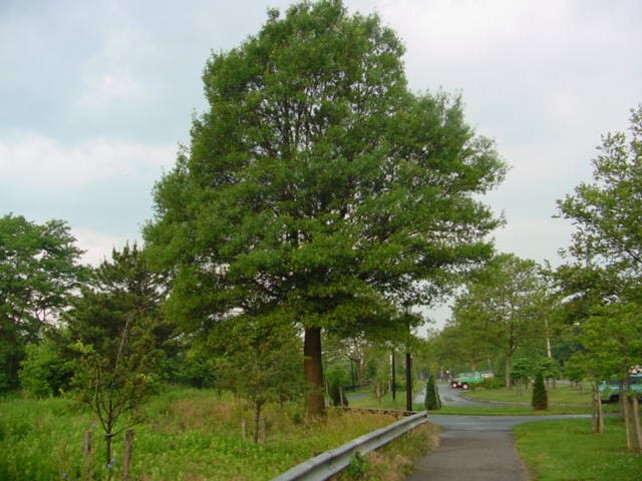



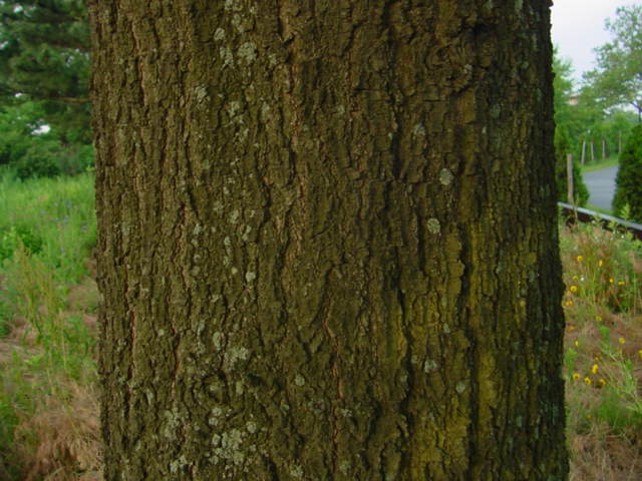

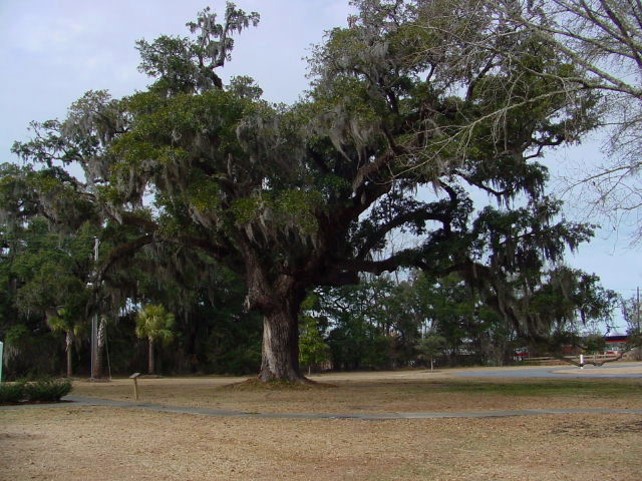
GENERAL DESCRIPTION: A spectacular tree found primarily in the southeastern United States. While only growing to 6o feet in height its spread can be twice as much with thick branches that bend close to the ground. In the south it is an broadleaf evergreen tree, hence the name “live oak” and in colder climates it is deciduous. In cities such as Savannah Georgia the streets are lined with mature live oaks draped in spanish moss. It makes a handsome shade tree. The bark is dark brown and deeply furrowed to ridges like alligator skin.
HABIT AND SIZE: 40-50′ high and 60-100′ wide. A wide-spreading evergreen tree with massive horizontal limbs and arching branches that result in a spreading dense rounded crown. The lower horizontal branches bend close to the ground.
LANDSCAPE VALUE: A majestic tree for large spaces such as mansions, golf courses, parks and broad streets. Its evergreen characteristic is particularly useful. It is adaptable to a variety of soil conditions and is relatively tolerant of pollution and salt spray.
LEAVES: Alternately arranged, simple and evergreen with the new leaves emerging simultaneously in the spring replacing the old leaves and exhibiting an olive green color which changes to a leathery dark green on top and a gray green underneath. The leaves are 1.25-3″ long and 0.375-1″ wide. with an elliptical-obvate shape and entire or spiny and hairy beneath. FLOWERS: Typical to the genus with the staminate flowers in catkins and the pistillate flowers 1-5 developing in the axils of the leaves.
FRUIT: Acorns 1-5 in a group, 0.675-1″ long, dark brown, ovoid-oblong and enclosed by a peduncled deep cup to 0.33 of the nutlet which is sweet to taste. The fruit matures in a single season.
BUD: 0.625 ” long, overlapping, slightly domed, reddish brown in color and hairy or glabrous.
DISEASES AND INSECTS: Insect galls make unsightly leaves but are no real threat. Some root rot in wet habitats.
HARDINESS AND RANGE: Zones 7-9 although specimens are planted in New York City which is zone 5-6. Natural range SE Virginia to S Florida west to Texas and SW Oklahoma.
CULTIVARS: fusiformis is a shrubby variety that occupies sandstone ridges in central Texas and the variety maritima is a variable coastal form from Virginia around to Louisiana.
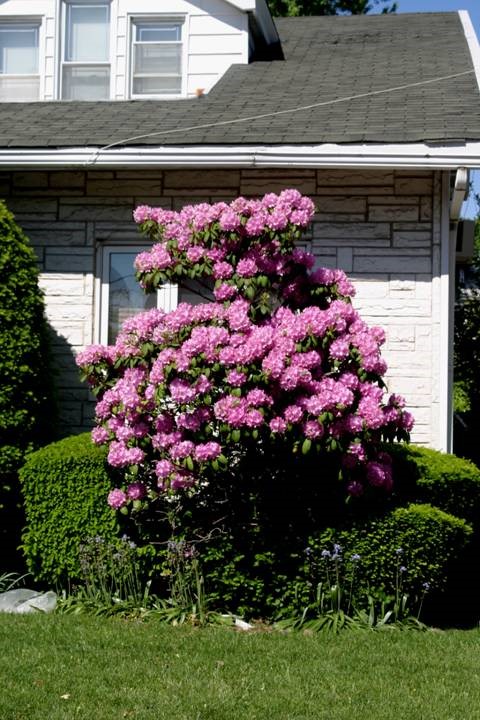



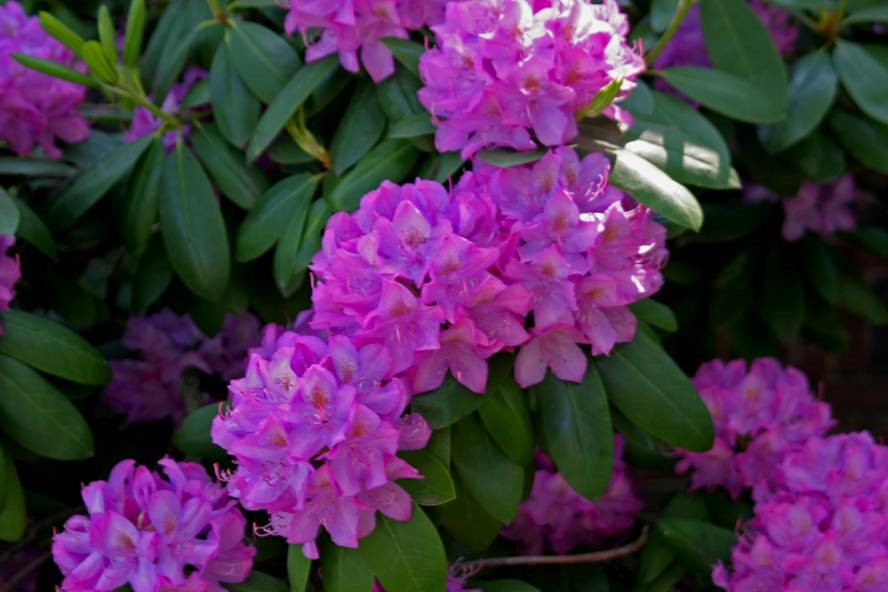



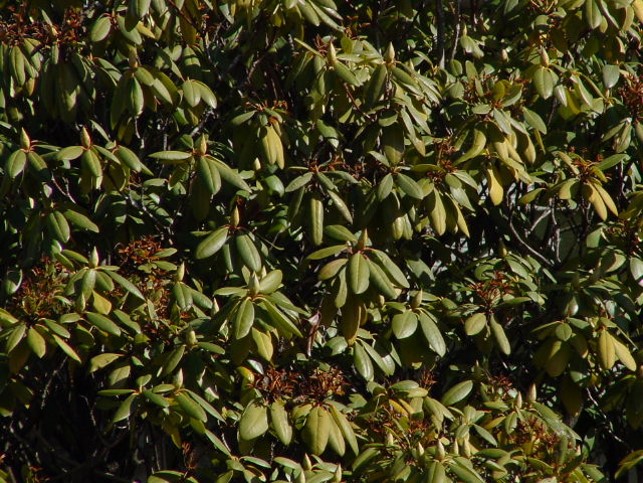
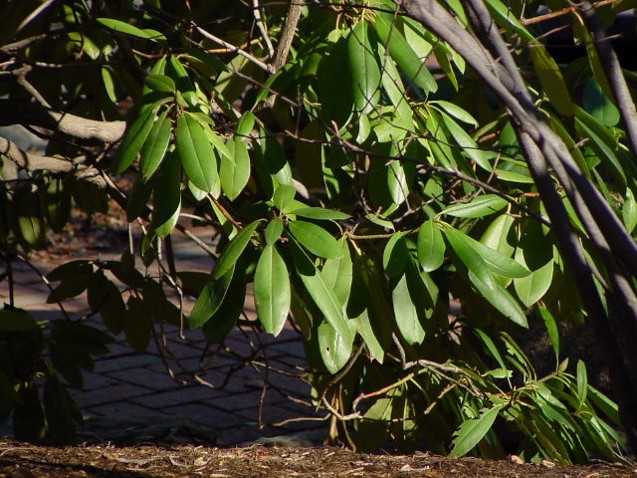
GENERAL DESCRIPTION: This is the American rhododendron native to the southern Appalachian Mountains. It is also the most durable and easy to grow rhododendron for everyday gardening. In nature it grows at the edges of woodland and can be used in the shrub border, as a foundation planting or as a specimen or group planting. It can grow to 10 or more feet high, is evergreen and typically has s-6″ inflorescences of lilac-purple flowers in May-June. There are many cultivars with an array of colors from white to red.
HABIT AND SIZE: 6-10′ high and s-8′ wide although it can grow to 20′ high. A heavy evergreen shrub with large, dense foliage reaching to the ground. Generally a rounded outline but can become leggy in shady or unfavorable conditions.
LANDSCAPE VALUE: A strong, handsome plant with all season interest due to its’ evergreen nature and large buds. When in flower a most voluptuous look! Can handle some shade.
LEAVES: Alternately arranged, simple, entire, evergreen, elliptic to oblong, 3-6″ long and 1- 2″ wide. The tip is obtuse and mucronulate (a short abrupt tip) and the base is rounded. The color is dark green on top and light green underneath. The overall texture is smooth andleathery. The distinct petiole is 0.5-1.25″ long.
FLOWERS: s-6″ diameter umbel-like racemes with lilac-purple 1.5″ long and 2.5″ broad flowers. The calyx is 5 parted and minute and the 5 parted corolla is broadly campanulate with 2 lips. There are 10 stamens that are long-exserted. The pistil has a long slender style with a capitate stigma (dense rounded cluster).
FRUIT: A dehiscent, 5 valved capsule.
BUD: Flower buds large (0.5″ long) scaly, pointed and yellowish green. Very prominent.
DISEASES AND INSECTS: Very numerous and culture is sometimes problematic!.
HARDINESS AND RANGE: Zones 4-8.
CULTIVARS: Hundreds of cultivars.


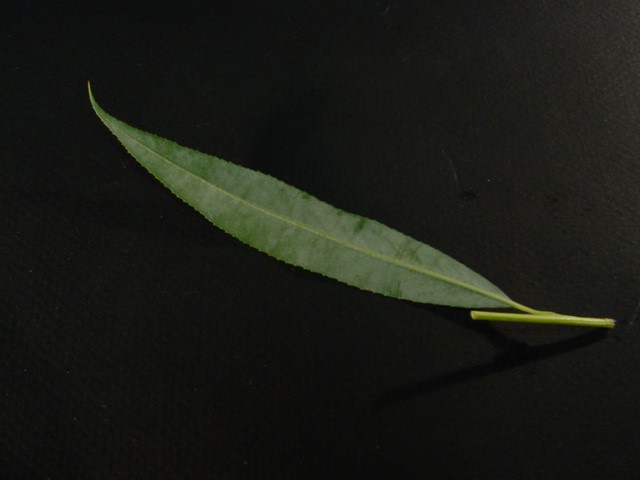

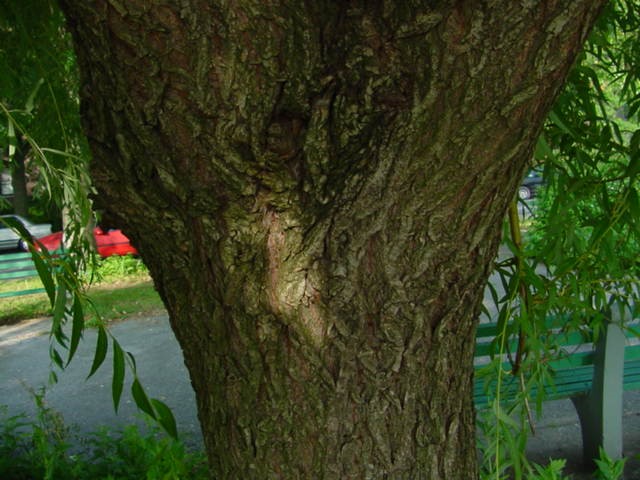
GENERAL DESCRIPTION: The weeping willows are a confused group of plants because the history of the various similar species and their horticultural derivatives has not been monitored. For convenience here I will assume that the so called common weeping willow is actually a hybrid between S. alba and S. babylonica that is often called S. alba var. ‘Tristis’. In the horticultural trade this is known as S. x chrysocoma. The weeping willow is a beautiful tree that loves to be near water and provides the ultimate in weeping habit and graceful movement in a breeze. The golden stems and the narrow leaves with a silvery underside add to its’ grace and beauty. This is a tree for the larger landscape in a wet environment, not next to a building where the roots can penetrate into the water and waste lines to their detriment.
HABIT AND SIZE: 75-10o’high and 50-100′ wide with low branches from which pendulous flexible stems originate. The overall shape is a broad, open rounded form.
LANDSCAPE VALUE: A very good tree for landscape use in the right spot. Best for moist, wet places that are not ideal for other trees. Can be damaged by ice and wind storms and is a messy tree because leaves, twigs, branches etc. are always littering the ground.
LEAVES: Alternately arranged, simple, lanceolate, 1.5-4″ long and 0.25-0.875″ wide with an acuminate tip, a wedge shaped base (cuneate) and margins with small pointed serrations. Color a bright green on top and glaucous green (silvery) underneath turning golden in fall.
FLOWERS: In male and female catkins in early spring before the leaves emerge. Flowers lack a perianth (sepals and petals) the 1 or more stamens (in male catkins) and the single pistils (in female catkins) are borne in the axils of bracts and a disk at the base of the flower.
FRUIT: Single chambered capsule bearing many small seeds each with long down or hairs.
BUD: Only lateral buds which are 0.25″ long with an oblong shape and rounded at the apex. Their texture is smooth and somewhat silky-downy. They are flattened and appressed against the stem with a single visible yellowish-brown bud scale that is rounded on the back.
DISEASES AND INSECTS: Many afflictions such as bacterial twig blight, crown gall, leaf blight, black canker, cytospora canker, gray scab, leaf spots, powdery mildew, aphids, willow leaf beetle, willow lace bug, willow flea weevil, willow scurfy scale and other insects.
HARDINESS AND RANGE: Zones 2-8(9). Naturalized in American.
CULTIVARS: ‘Vitallina’- bright yellow stems ‘Tristis’- the current standard weeping willow.

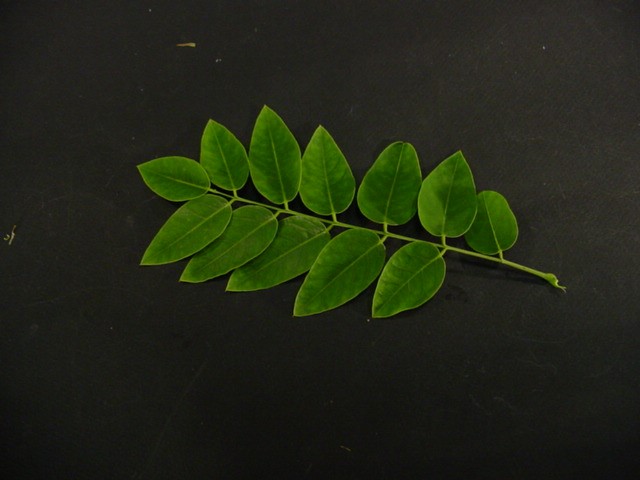

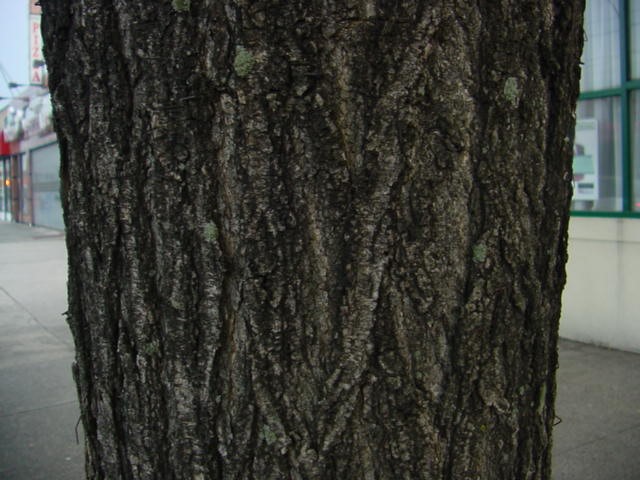
GENERAL DESCRIPTION: This is considered one of the best trees for streets and landscapes but it does need to have a large area because the mature tree is quite large. The full grown tree is impressive with far stretching branches that create a dense, rounded and full crown and light shade. The pinnately compound leaves are a rich green in color but they do not develop significant fall color. In July and August fragrant, cream-colored flowers in panicles create a frothy mass over the canopy. The bark of mature trees is dark gray and corrugated.
HABIT AND SIZE: 50-75″ high and just about as wide depending on the individual tree. As a young tree it is upright-spreading and develops a broadly rounded crown at maturity.
LANDSCAPE VALUE: A good tree for city streets, large lawns, variable soil areas and large landscapes such as golf courses and parks. When in flower provides a comfortable effect. The leaves are a nice green and provide open shade. The flower, leaf rachises, and pods can be messy.
LEAVES: Alternately arranged, pinnately compound, 6-10″ long with 7-17 leaflets. The leaflet shape is ovate to lance-ovate, 1-2″ long and 0.5-1” wide with wedge shaped or rounded bases and entire margins. The leaf color is a shiny bright green on top and glaucous·(waxy bloom) below with appressed hairs. Base of petiole swollen. Fall color brown.
FLOWERS: Yellowish-white, 0.5″ pea type, in 15″ long panicles in late summer.
FRUIT: A smooth pod 2″ long and 0.5″ wide almost transparent.
BUD: Terminal bud absent. Lateral buds blackish, woolly, unstalked, vaguely scaly and hidden by the leaf scar. Swollen base of petiole encloses bud.
DISEASES AND INSECTS: Canker, twig blight, powdery mildew and leaf hoppers.
HARDINESS AND RANGE: Zones 4-8. China and Korea
CULTIVARS: ‘Pendula’- a weeping type, ‘Regent’- excellent vigor and handsome form,
‘Princeton Upright’- rapid growth and straight growth habit.

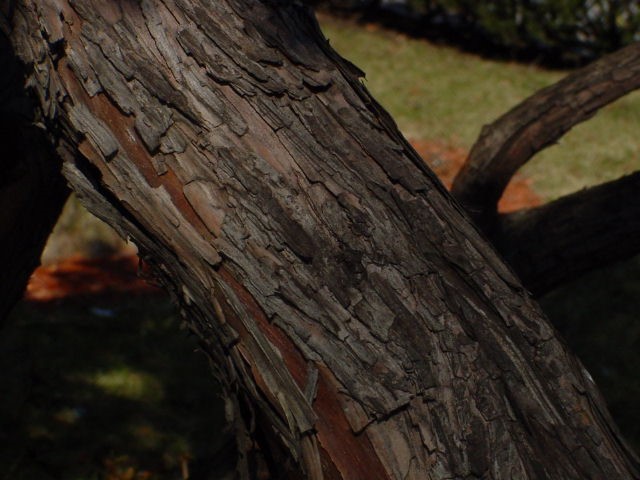
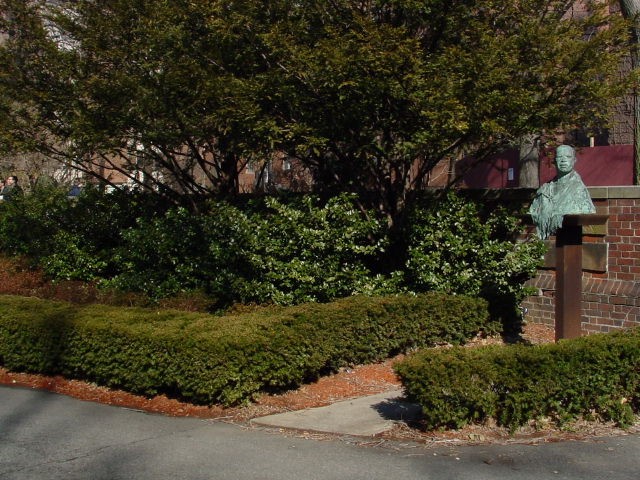
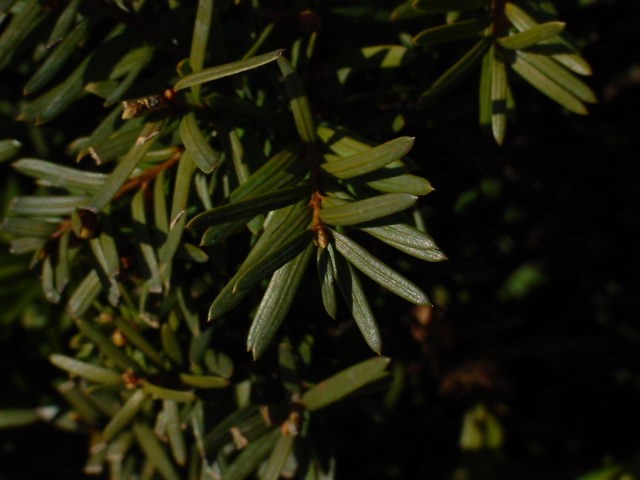
GENERAL DESCRIPTION: The English Yew is not as prevalent in America as in England where some specimens are 60′ high. In America it is a small tree with multiple upright branches that spread out in a vase like manner. The deep green needle, the red arils, and the beautiful reddish-brown furrowed and scaly bark make this a great addition to the small garden or as a grouping in a larger landscape. All parts of the plant are poisonous!
HABIT AND SIZE: 30-60-‘ high and half as wide in a wide-spreading and densely branched somewhat upright habit that presents a broad-rounded crown. The trunk is fluted.
LANDSCAPE VALUE: Good in shady areas as an understory tree in parks and gardens. Good for hedges, screens and foundation plantings. Hardiness a problem in Zone 5·
LEAVES: Needles 0.5-1.25″ long and 0.125″ wide, convex, tapering to a horny tip, a deep green on the upper surface, yellowish green underneath with vague lines of stomata. Margins recurved and midrib prominent. Spirally arranged, three dimensionally situated on erect shoots but appearing two dimensionally arranged on horizontal shoots or shaded plants.
FLOWERS: This is a gymnosperm so there are no flowers just male and female strobili on separate plants. The male strobili are stalked, round and arise from the axils of the leaves on the undersides of the branchlet of the previous year. Each strobilus with 6-14 stamens with short filaments. Female strobili in the leaf axils, solitary and green with a single ovule.
FRUIT: No true fruit just a seed that is olive-green inside a red covering called an aril. 0.25″.
BUD: Terminal and lateral buds small to inconspicuous, green to brownish green.
DISEASES AND INSECTS: Taxus mealybug, black vine weevil, scale and midge.
HARDINESS AND RANGE: (5)6-7. Native to England
CULTIVARS: ‘Adpressa’ and ‘Adpressa Fowle’- densely set dark needles, latter more compact; ‘Fastigiata’- known as the “Irish Yew”, columnar in habit; ‘Repandens’- wide branching, more hardy, branch tips slightly pendulous. Many cultivars are shrub like.
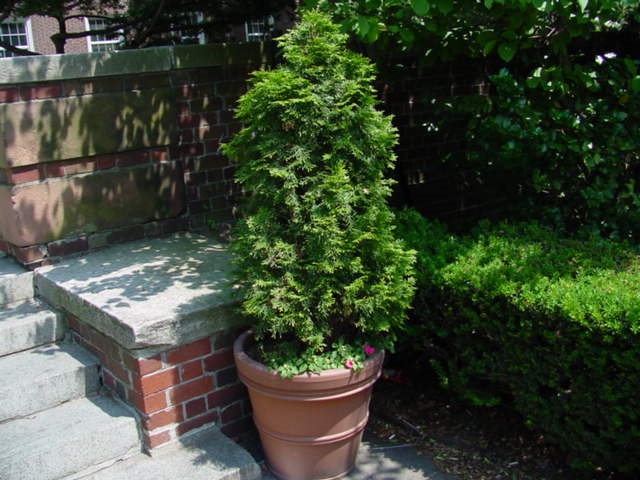


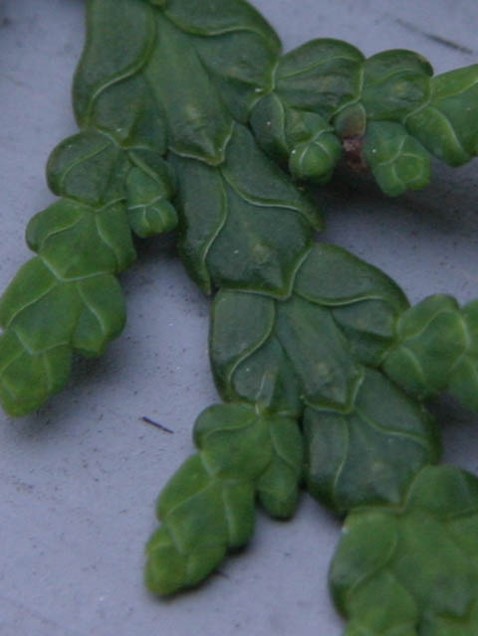


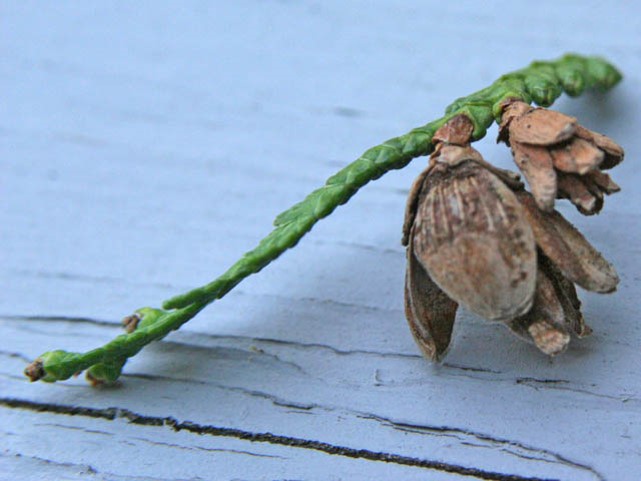
GENERAL DESCRIPTION: Arborvitae has been a staple of the urban and suburban garden primarily as a screen or hedge. It is also used as a foundation planting or in a grouping. While it is a beautiful and utilitarian plant, it has been overused and has a tendency to turn an unsightly yellow or brown in the winter. In the wild this is a tall evergreen tree with valuable wood. In the garden it has a vertical layered look and a pyramidal habit with multiple trunks that provides a soft but impenetrable barrier.
HABIT AND SIZE: 40-60′ high and 10-15′ wide (rarely this size in gardens). It has a dense, often broad-pyramidal form with flat, spreading, horizontal sprays (complex branching systems). Generally there is a single trunk but in the horticulture trade multi-stemmed forms are common.
LANDSCAPE VALUE: Good as a specimen plant but more often used as screen, hedge or foundation planting. Probably overused, some winter discoloration. Tends to thin out in shade conditions. It is important to use the newer improved cultivars.
LEAVES: Scale-like. 0.5″ long and sharply pointed with the leaves on the main axis bearing glands and those on the branchlets not so obvious. Color shiny bright green on top and pale green underneath. The leave are appressed and overlapping and of two variations; on one branchlet they are awl shaped and on a successive or different branchlet they are scale like, blunt, short and fused to the branch. They are in 4 rows on two edged branchlets.
FLOWERS: Mostly unisexual on different branches in very small terminal ovoid groupings without perianth (ament, catkin). Stamens in opposite pairs each with a scale-like connection and each bearing 4 anther-locules. Female aments with few overlapping scales each bearing 2 erect ovules. The scales become dry and spreading when mature.
FRUIT: Cones with unpointed scales with seeds that are broadly winged all around
BUD: Not observable.
DISEASES AND INSECTS: Bagworm, heart rot and red spider mites.
HARDINESS AND RANGE: Zones 2-7. Eastern North America
CULTIVARS: Probably 80-100 cultivars. ‘Emerald’- has good color and does not deteriorate in winter, ‘Techny’- broad based pyramidal form and dark green foliage even in winter, ‘Nigra’- also dark green in all seasons.

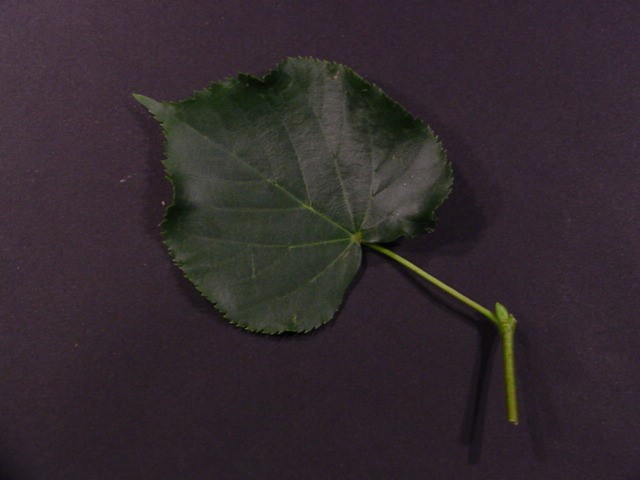
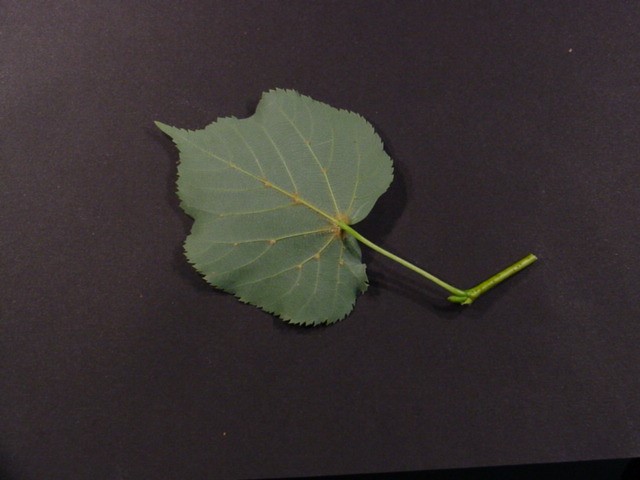


GENERAL DESCRIPTION: A widely planted street tree because of its strongly pyramidal growth habit, dark green leaves, unique inflorescence with creamy yellow flowers that creates a layered look and its yellow fall color. This tree gives an ordered formal look when planted along a street, road or as a border planting. The cordately shaped leaves are a rich green and flutter in a breeze. In the winter the dark smooth bark and the multiple upright branches provide a pleasant outline.
HABIT AND SIZE: 60-70’high and 40′ wide can grow to 90′. As a young and developing tree it is strongly pyramidal and as it matures it becomes upright-oval to pyramidal-rounded and densely branched. It has a medium growth rate (10-15′ in 5-10 yrs.).
LANDSCAPE VALUE: An excellent tree for streets, along drives and roads and as a perimeter barrier. Very good in large planters at malls etc. Can be easily controlled by pruning.
LEAVES: Alternately arranged, simple, rounded (suborbicular) with a cordate (heart shaped) base, 1.5-3″ long and about as wide as long. The tip is sharply tapering (acuminate). The leaf margins are finely serrated. Their color is a shiny dark green and hairless on top and with a slight waxy bloom below and tufts of brown hairs in vein axils. The fall leaves are yellow.
FLOWERS: The inflorescence is a pendulous 2-3″ wide cyme with 5-7 flowers and subtended by a ligulate (strap shaped) bract fused to the peduncle. Each flower is creamy white with 5 sepals and petals and many stamens often in fascicles (close clusters) opposite the petals. Flowering is in late June or early July.
FRUIT: A spherical (globose) nutlet with a thin shell covered with a gray pubescence and slightly or not ridged.
BUD: Small (0.25″ long), brown, a bit flattened, frequently lopsided, tear drop shaped with a slight down on the tip of 2 scales.
DISEASES AND INSECTS: Anthracnose, aphids, Japanese beetles, foliage feeding insects and borers.
HARDINESS AND RANGE: Zones 3-7. Spain to Caucasus.
CULTIVARS: ‘Greenspire’ most popular due to central leader and uniform branching. Others are ‘Chancellor’, ‘Corinthian’,’Glenleven’ and ‘June Bride’.
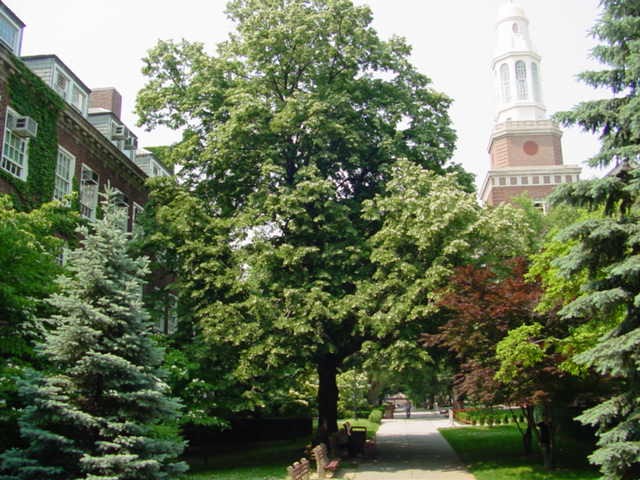




GENERAL DESCRIPTION: The queen of the lindens this stately tree is broadly pyramidal in outline with arching branches that make a significant winter statement. The large shiny dark green leaves have a silvery underside that provide a sparkle in a breeze. The bark is light to silver gray and on older trunks becomes gray brown and furrowed. This tree needs a large space to develop properly and is planted on an elevated site so that the undersides of the leaves are readily visible. The fall foliage is an attractive golden yellow.
HABIT AND SIZE: 50-70′ high and 25-50′ wide. The young trees shape is pyramidal but as it matures it changes to upright-oval to pyramidal oval. There is a very similar species if not a cultivar T. petiolaris that has more pendulous branching.
LANDSCAPE VALUE: A wonderful shade tree for larger areas and quite heat and drought tolerant. It lends itself to pruning.
LEAVES: Alternately arranged, simple, suborbicular abruptly acuminate and slightly heart shaped to flat along the base. Sharply serrate sometimes double and even with slight sharp lobes. Upperside slightly hairy when young and underside and petiole with a while wooly texture. Leaf color a lustrous dark green above, silvery below turning to yellow in the fall.
FLOWERS: The flowers are fragrant and said to be narcotic to bees. The inflorescence is a pendulous 2-3″ wide cyme with 7-10 flowers and subtended by a 1.5-2.5″ ligulate (strap shaped) bract fused to the peduncle. Each flower is yellowish white with 5 sepals and petals and many stamens often in fascicles (close clusters) opposite the petals. Flowering is in late June or early July.
FRUIT: An ovate nutlet that is sharply pointed, slightly 5 sided, 0.33-0.375″ long with a white pubescence and tiny wart-like protrusions.
BUD: 0.25″ long, green-red-brown in color and with a soft short pubescence.
DISEASES AND INSECTS: See T. cordata
HARDINESS AND RANGE: Zones 4-7. Southeast Europe and Asia.
CULTIVARS: ‘Sterling Silver’- a rapid grower with an impressive broad pyramidal crown.

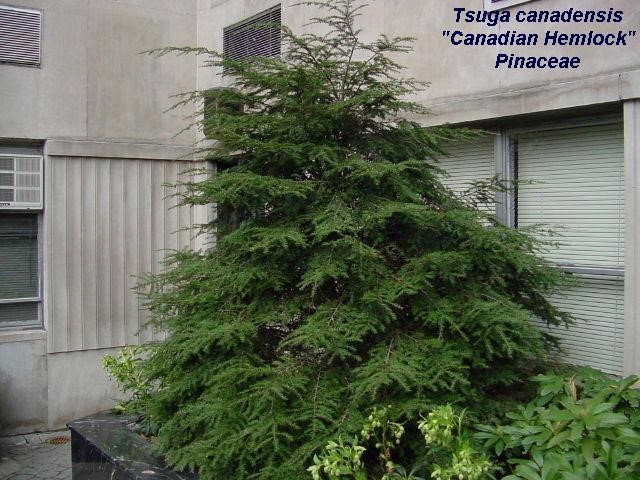
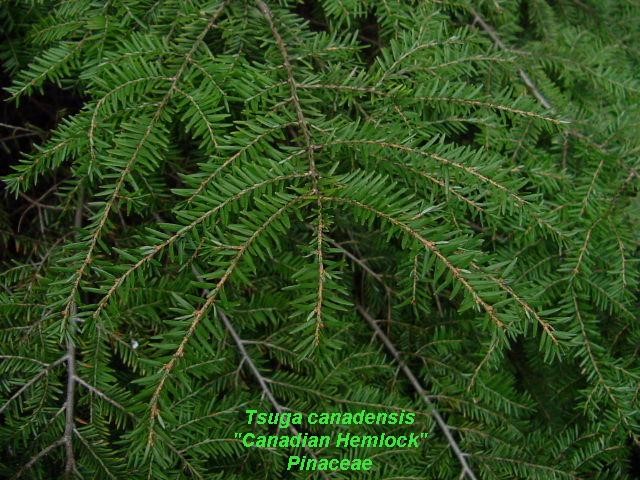




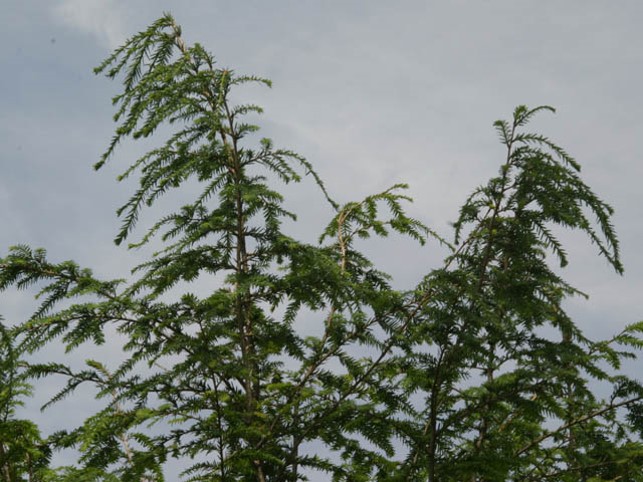
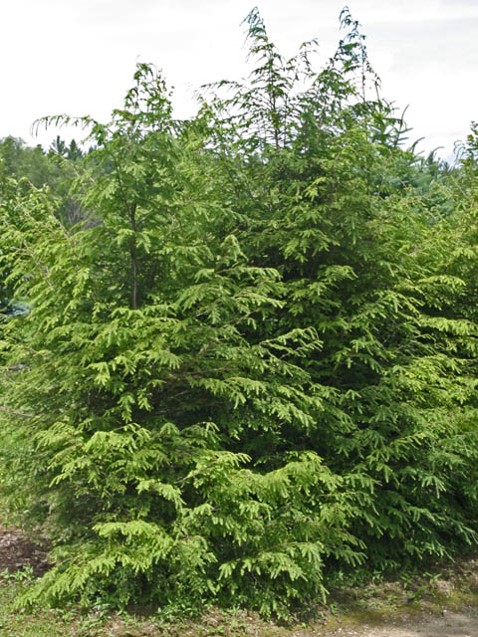
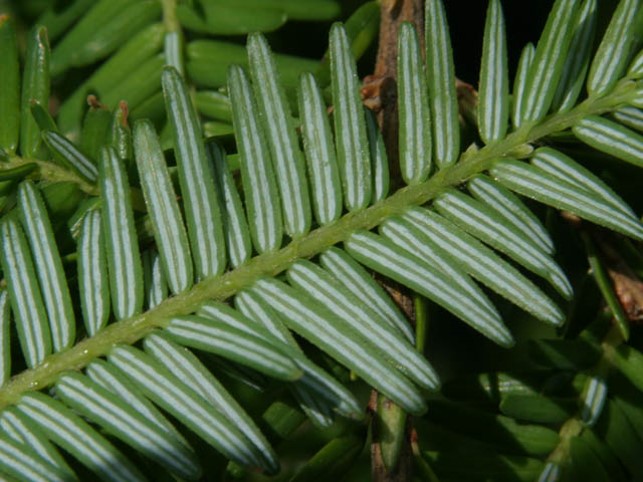
GENERAL DESCRIPTION: The hemlock is one of the most graceful of the conifers because of its straight tapering trunk, loose pyramidal habit, somewhat pendulous branches, and dark green needles. Overall it gives a stately informal look. Hemlock is also tolerant of some shade and moist soils. As a landscape plant it has been successfully used to create tall hedges and screens, as a background planting in larger landscapes and as a specimen tree. With some of the smaller and more pendulous cultivars, it has been used in smaller landscapes as either an accent or a focal point. One cultivar in particular, ‘Sargentii’, is a spectacular large pendulous shrub that can be used as a specimen.
HABIT AND SIZE: 40-70′ high and 25-40′ wide (can grow to over 100′) with a pyramidal outline that is softened by the slightly pendulous nature of the smaller branches. As the tree gets larger the habit becomes more open but still pyramidal in shape.
LANDSCAPE VALUE: Excellent for tall hedges and screens, as a background planting in larger landscapes and as a specimen tree. With some of the smaller and more pendulous cultivars, it has been used in smaller landscapes as either an accent or a focal point.
LEAVES: Aligned on the stem in 2 ranks, the deep green leaves are 0.25-0.67” long and one third as wide, somewhat grooved, linear, obtuse or acute at the tip. The underside has 2 whitish bands. The margins are toothed and there is a short petiole.
FLOWERS: Staminate flowers solitary in the leaf axils with numerous anthers that have gland-like tips.
FRUIT: Ovoid cones 0.5-0.75″ long, on slender stalks the scales nearly circular and smooth.
BUD: Minute, round, with light brown hairy scales.
DISEASES AND INSECTS: Wooley adelgid insect is devastating native population.
HARDINESS AND RANGE: Zones 3-7. Nova Scotia to Minn. south to Ala. and Ga.
CULTIVARS: ‘Sargentii’- one of the best weeping evergreens





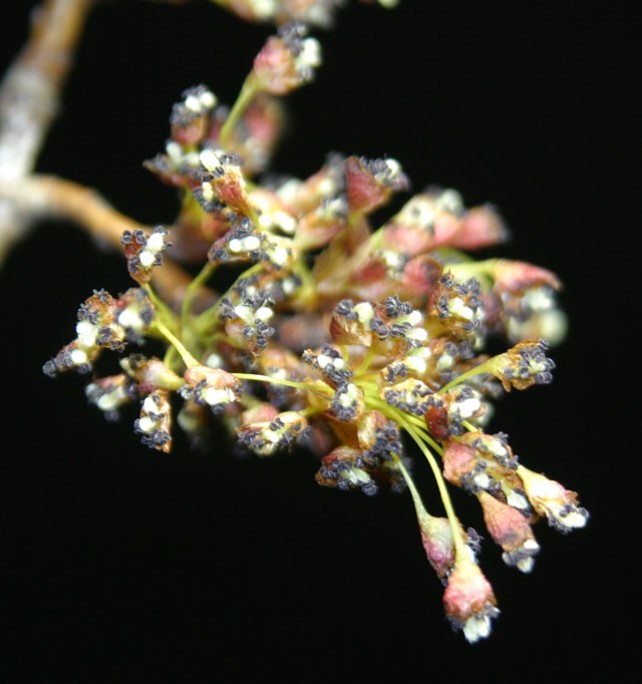
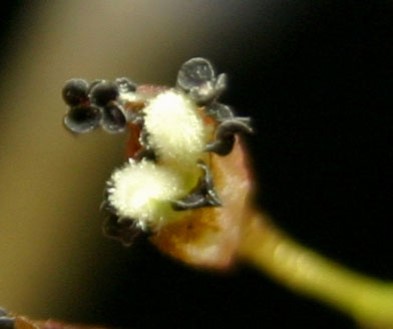
GENERAL DESCRIPTION: A majestic and aristocratic tree native to the United States and once heavily planted along the streets and in the parks of many American cities and towns. When planted as a street tree the trees arched over the street to make a continuous canopy. Dutch elm disease has all but eliminated this tree from the American landscape. The significance of this tree is its large size with long branches that arch at the end giving a most graceful upright spreading semi pendant form. The bark is light grey and deeply furrowed into broad, forking ridges. Autumn color is a bright yellow.
HABIT AND SIZE: 60-80′ high (to 120′) and 30-50′ wide. Upright and forked into many spreading branches pendant at the end resulting in a rounded or vase-like crown that is frequently wider than high. The trunk tapers out to a buttress at the base.
LANDSCAPE VALUE: The susceptibility to Dutch elm disease severely limits its use until a resistant cultivar can be found.
LEAVES: Alternate, simple, doubly serrate, 3-6″ long, 1-3″ wide, ovate-oblong to oval, acuminate at the tip and unequal at the base. The side veins are distinct, straight and parallel. The topside texture is rough or gritty and hairy to the touch. The underside is softly hairy maturing to smooth. The color is dark green above and slightly lighter below.
FLOWERS: Greenish, 0.125″ wide in close clusters (fascicles) with long pendulous pedicels appearing in early spring. Calyx 5-9 rounded lobes, stamens 7-8 with bright red anthers.
FRUIT: A rounded single seeded samara with deeply notched wings that are hairy on the edges
BUD: Small lateral buds acentric with leaf scar, ovate-conical, slightly flattened and pointed. Appressed against the stem, pubescent and reddish-brown and shiny.
DISEASES AND INSECTS: too numerous to list. Major diseases are Dutch elm disease, (Ceratocystis ulmi) and the bacterial disease ‘wetwood’ (Erwinia mimipressuralis).
HARDINESS AND RANGE: Zones 2-9. Newfoundland to Florida and west to the Rocky Mountains.
CULTIVARS: ‘Ascendens’ and Augustine’ both upright and much taller than wide. ‘Valley Forge’ and ‘New Harmony’ are potentially disease resistant clones.

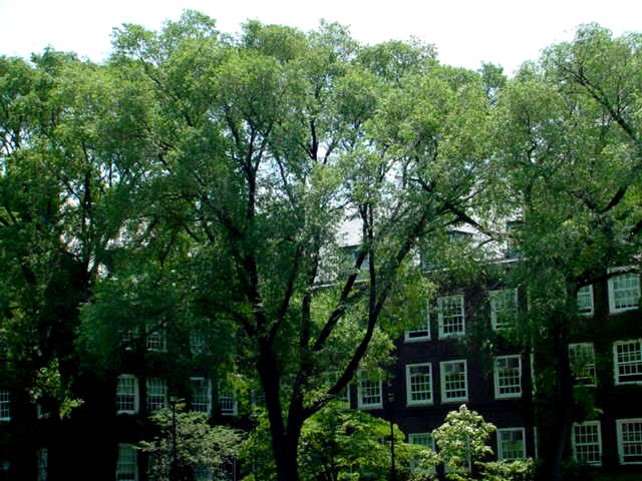



GENERAL DESCRIPTION: A smaller tree than the American elm with the generally same growth habit but with a serious weakness of the branches so that they are very prone to breakage in high winds. The leaves are the same shape as American elm but much smaller and very susceptible to elm leaf beetle. It can tolerate a variety of climatic and soil conditions as well as pollution. Once thought to be a replacement for the American elm the Siberian elm is a poor and short lived substitute, described by one eminent horticulturist as a “disastrous tree”.
HABIT AND SIZE: 50-70′ high and width 0.75 the height. An open habit with several dominant ascending branches and many smaller pendulous branches. The bark is grey to brown similar in texture to the American elm but much thinner in the depth and width of the ridges.
LANDSCAPE VALUE: Widely planted but considered a very bad choice for landscaping.
LEAVES: Elliptic to lanceolate, smooth and primarily simply serrate, 0.75-3″ long, 0.33-1″ wide, taper pointed and unequal at the base. Texture smooth above and glabrous below. Slightly pubescent when immature. Color a deep green.
FLOWERS: Similar to U. americana with 4-5 red stamens.
FRUIT: A samara that is round-obvate, usually broader than long, green glabrous wings.
BUD: 0.25′ rounded flower buds that are blackish-brown with hairs along the edges of the bud scales.
DISEASES AND INSECTS: Very susceptible to the elm leaf beetle and the ‘wetwood’ bacterium.
HARDINESS AND RANGE: Zones 4-9. Eastern Siberia, northern China, Manchuria, and Korea
CULTIVARS: ‘Chinkota’-cold hardy, ‘Coolshade’-breakage resistant, ‘Dropmore’-small foliage, ‘Hamburg Hybrid’ -strong wood and fast growing, ‘Mr Buzz’ -dense crown. More recent are ‘Urban’, ‘Homestead’ and ‘Pioneer’ which are less than satisfactory.

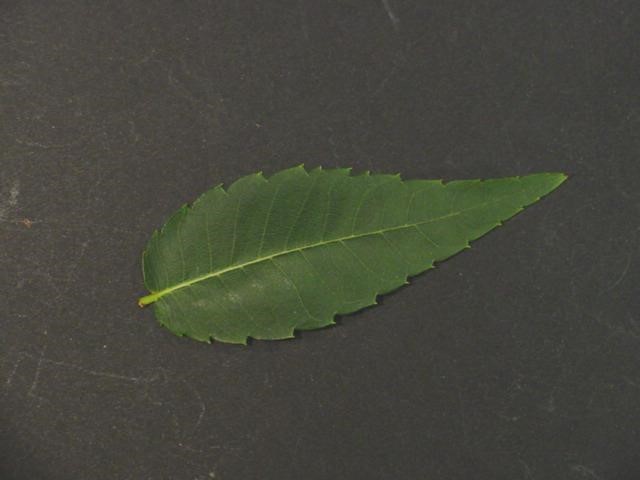

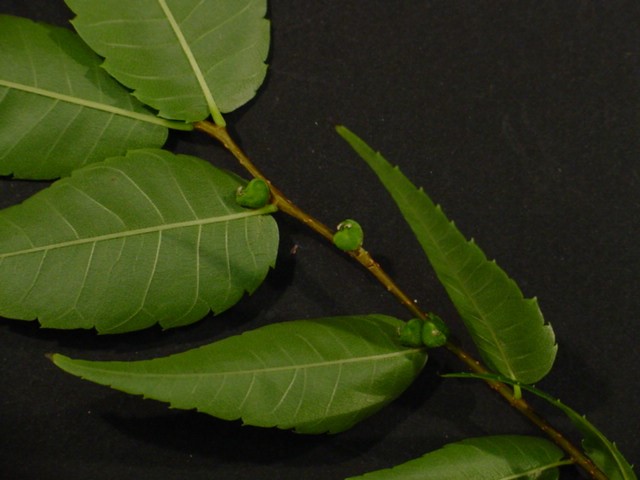

GENERAL DESCRIPTION: This tree has been widely planted along streets and in yards in NYC and other urban areas. It is very tolerant of a wide range of soil and climatic conditions, is moderate in height and the newer cultivars have a particularly vase shape with many branches originating close together about 6-8′ above the ground. The leaves have pleasing serrations, medium size and attractive yellow, golden-bronze or reddish purple fall color. The bark shiny grayish bark tends to exfoliate. Zelkova is resistant to Dutch Elm disease, elm leaf beetle and Japanese beetle.
HABIT AND SIZE: 50-80′ high and as wide with a vase shaped outline and the major branches originating close together low on the trunk ( 6-8′). With age, additional ascending branches maintain the general form.
LANDSCAPE VALUE: Once considered a replacement for the American elm but habit nothing like it. However, it is a handsome tree with a distinctive growth habit, medium sized attractive leaves that is good for street plantings, lawns parks etc,. Disease resistant.
LEAVES: Alternately arranged, simple 1.25-2″ long or on shoots to s” long. Ovate to oblong-ovate shape, tip concavely tapering to a point (acuminate) or ending abruptly in a short pointed tip (apiculate) and base rounded or subcordate. Margins sharply serrate with acuminate teeth, and 8-14 pairs of veins. Color dark green, and texture rough above and hairy below.
FLOWERS: Staminate flowers in axial cluster of flower leaves. Calyx a vase with 4-slobes and stamens 4-5. Pistillate flowers unisexual or bisexual few or solitary in axils of the upper leaves. Flowers in late February to early March.
FRUIT: A small single seeded drupe wider than long, oblique with an eccentric style
BUD: Ovoid, acutish, with many overlapping, shiny dark brown, broad scales. At 45° angle.
DISEASES AND INSECTS: Resistant to Dutch elm disease, elm leaf beetle and Japanese beetle. Susceptible to other problems that affect elms.
HARDINESS AND RANGE: Zones s-8. Japan
CULTIVARS: “Village Green’- early cultivar, dense stiff crown, rapid growth, ‘Green Vase’- a most graceful form, tall, excellent fall color and ‘Halka’- most similar to American elm.

